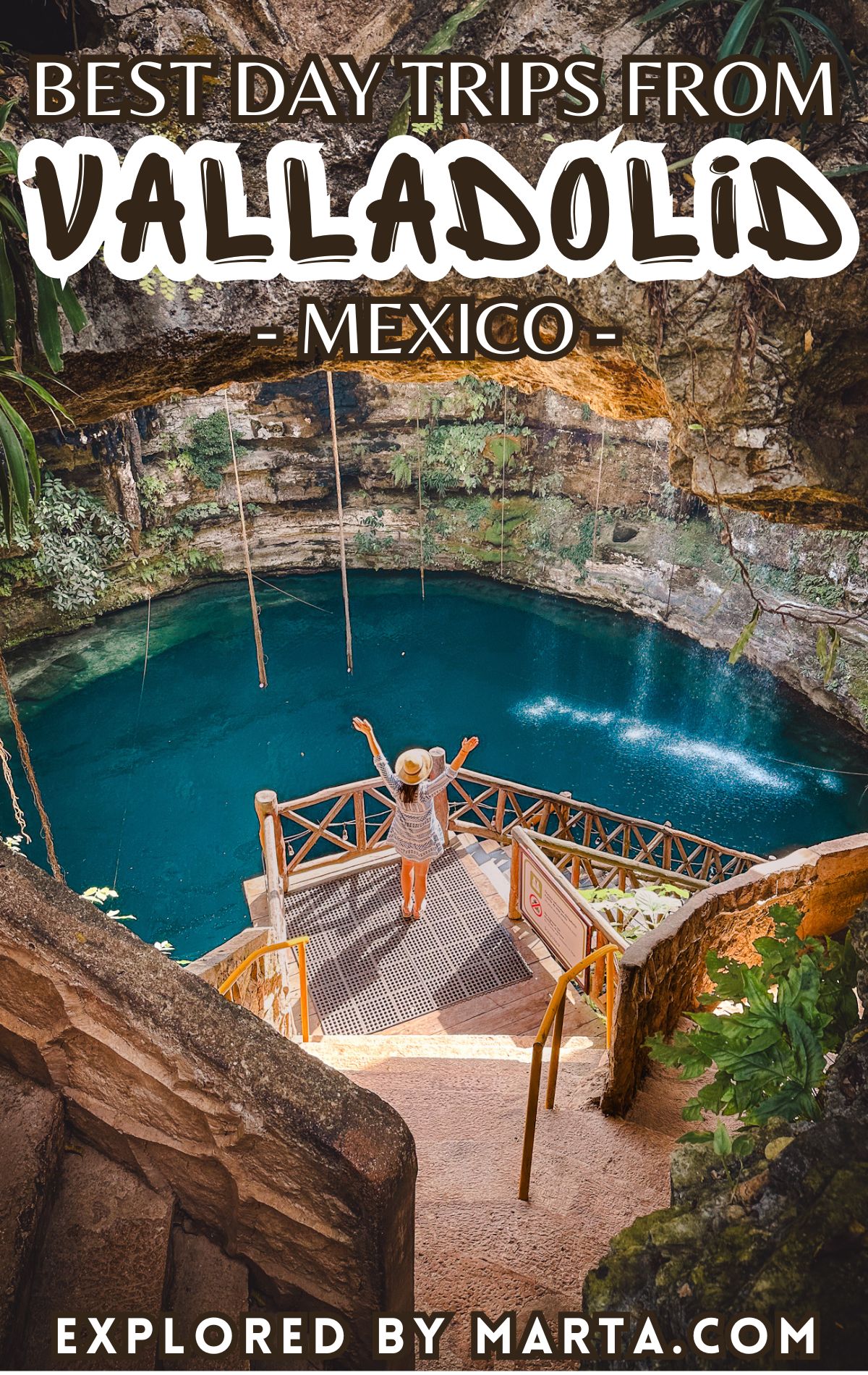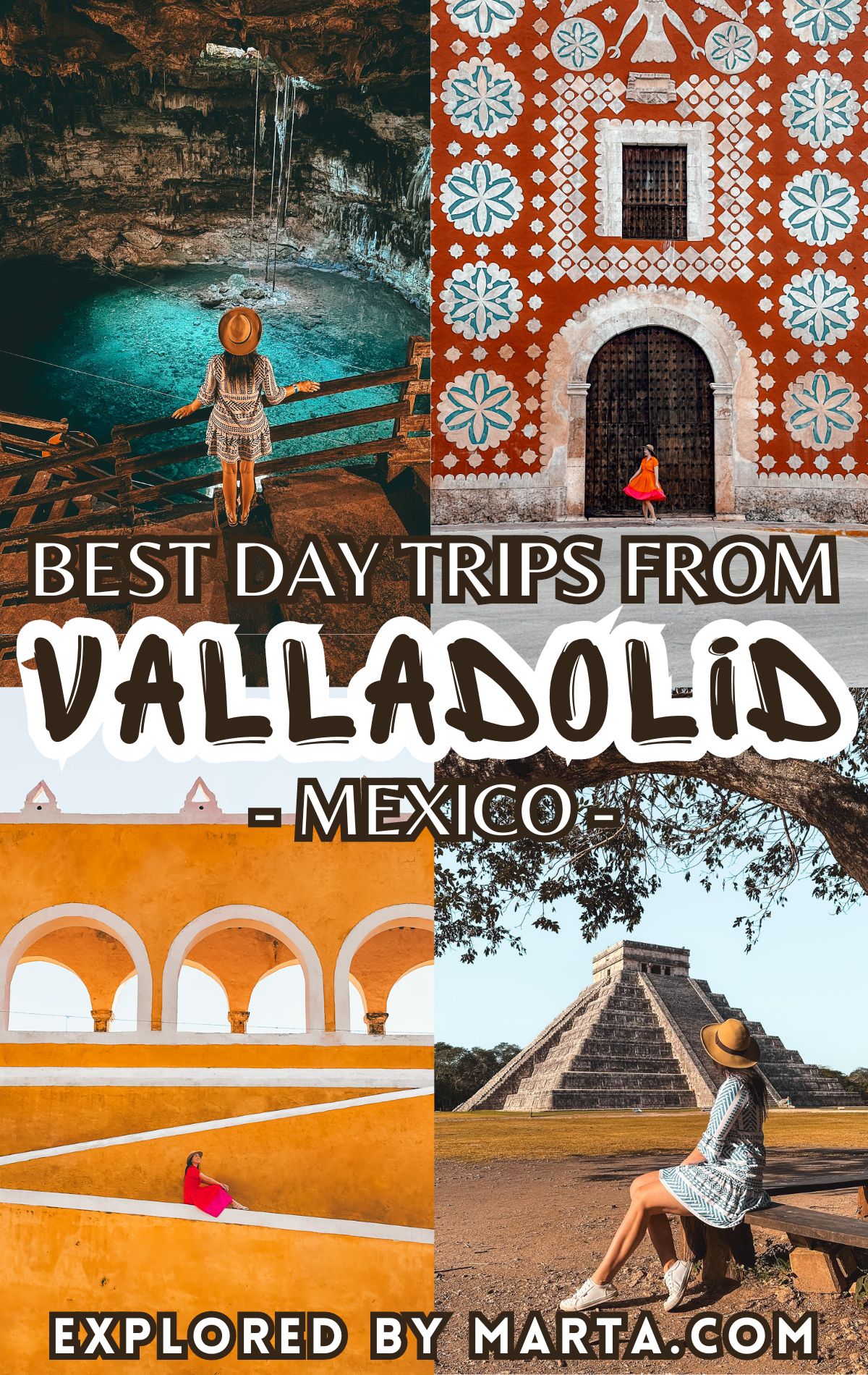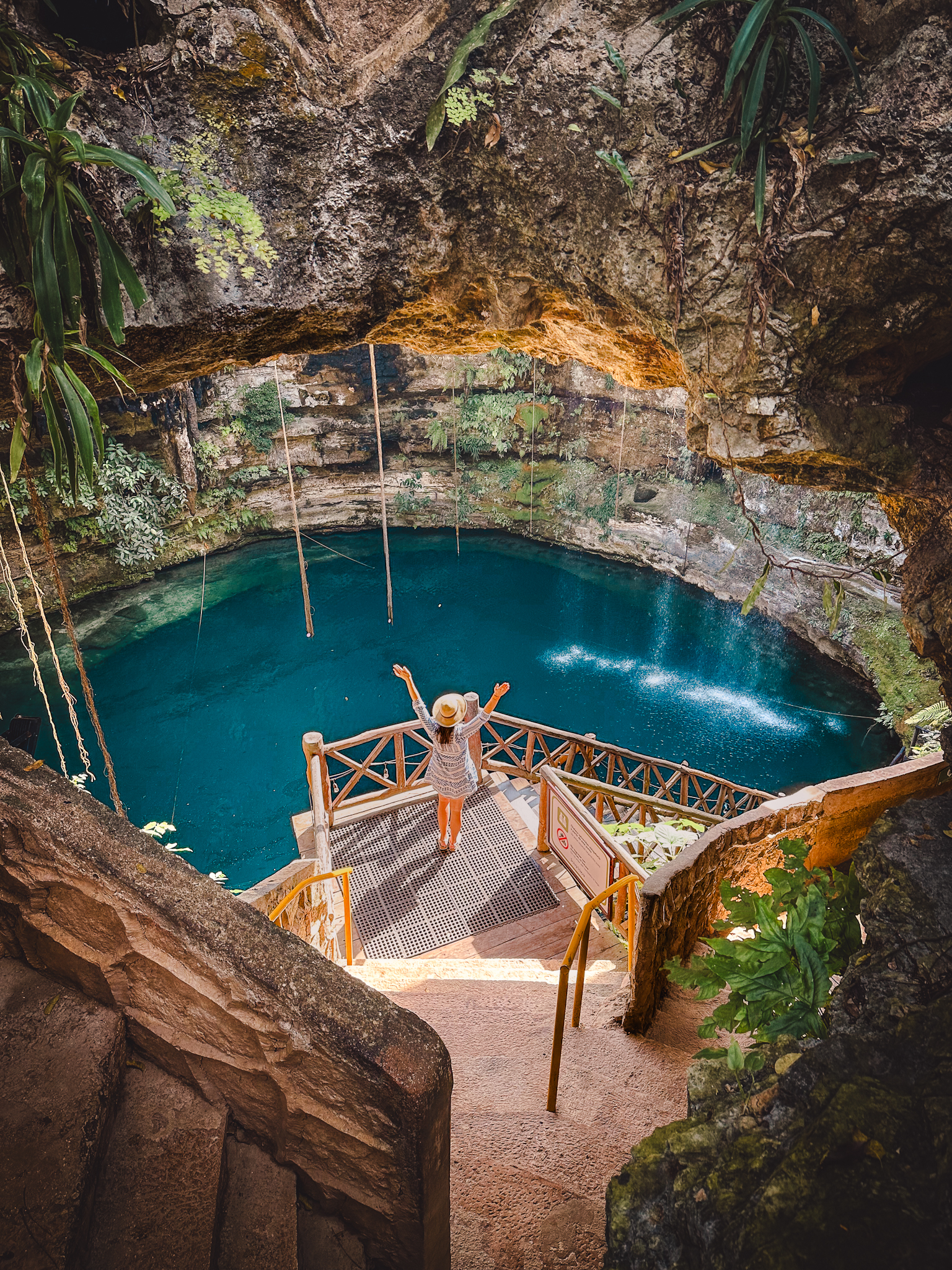15 best day trips from Valladolid, Mexico
This post may contain affiliate links. If you use these links to buy something I may earn a small commission at no extra cost to you! Thank you for your support!
Come along with me on the best day trips from Valladolid, Mexico! We stayed in the beautiful Valladolid for three weeks so that we could thoroughly explore the colorful colonial city and the surrounding area to the fullest.
From pink lakes in the North to yellow town in the West, from mysterious underground cenotes with turquoise water to ancient Mayan archaeological sites hidden deep in the jungle – Valladolid truly had it all!
In this post, you will find destinations for the best day trips from Valladolid with descriptions, photos, and locations on the map. Thanks to its advantageous location, you don’t have to look far for hidden gems or bucket list places. Happy exploring!
Read more » 17 iconic Instagram spots in Valladolid, Mexico
1. Chichén Itzá Archaeological Zone
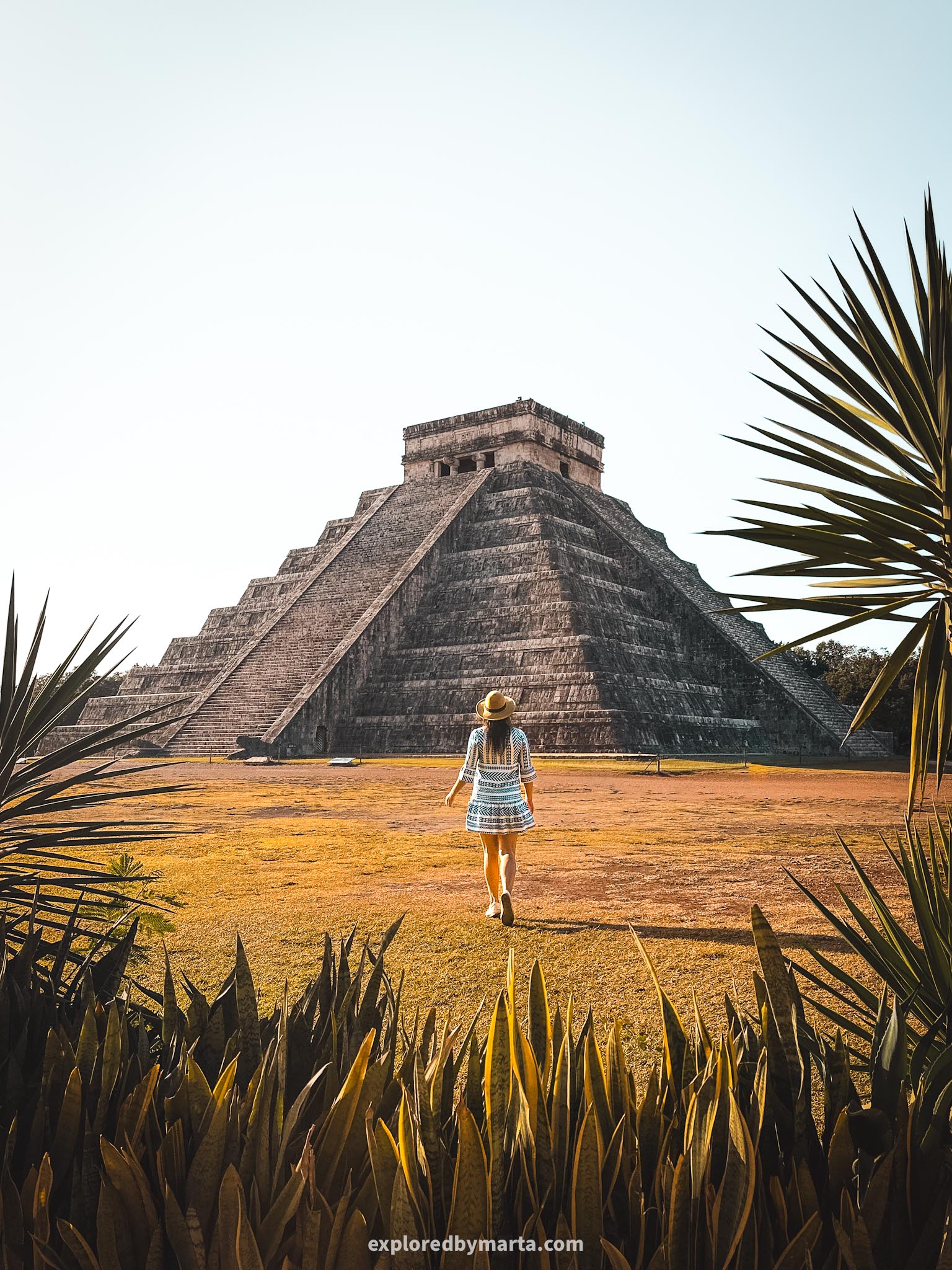
Chichen Itzá is the most famous Mayan site in Yucatán and one of the most visited places in Mexico. A place that must be on your Valladolid itinerary! It was declared a UNESCO World Heritage Site and voted among the New Seven Wonders of the World.
Historically it was one of the largest Mayan cities dating back to 600 AC. It existed as a major regional center for many centuries until its decline by the 12th century. It still operated until the Spanish conquistadors arrived in the 16th century.
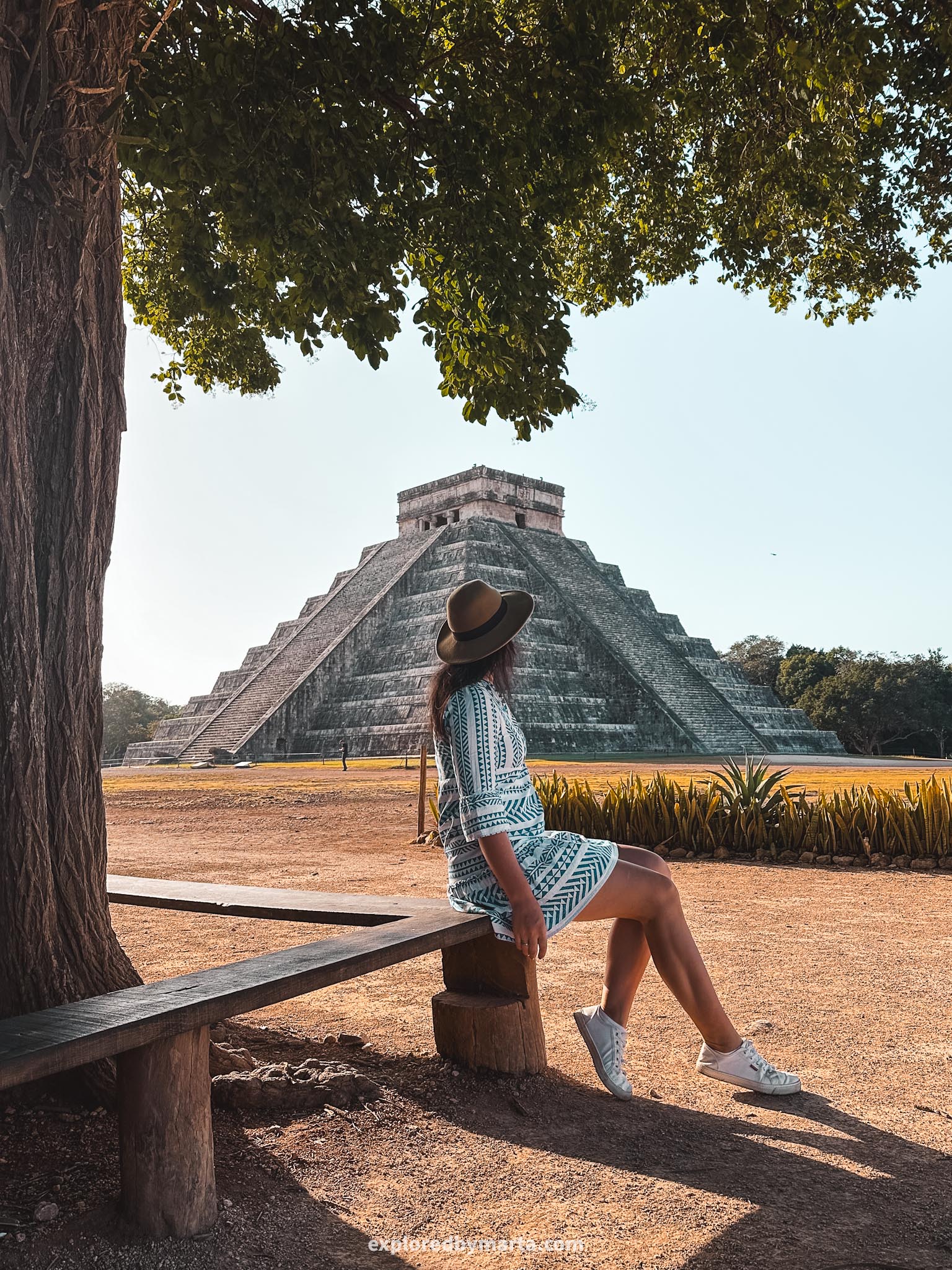
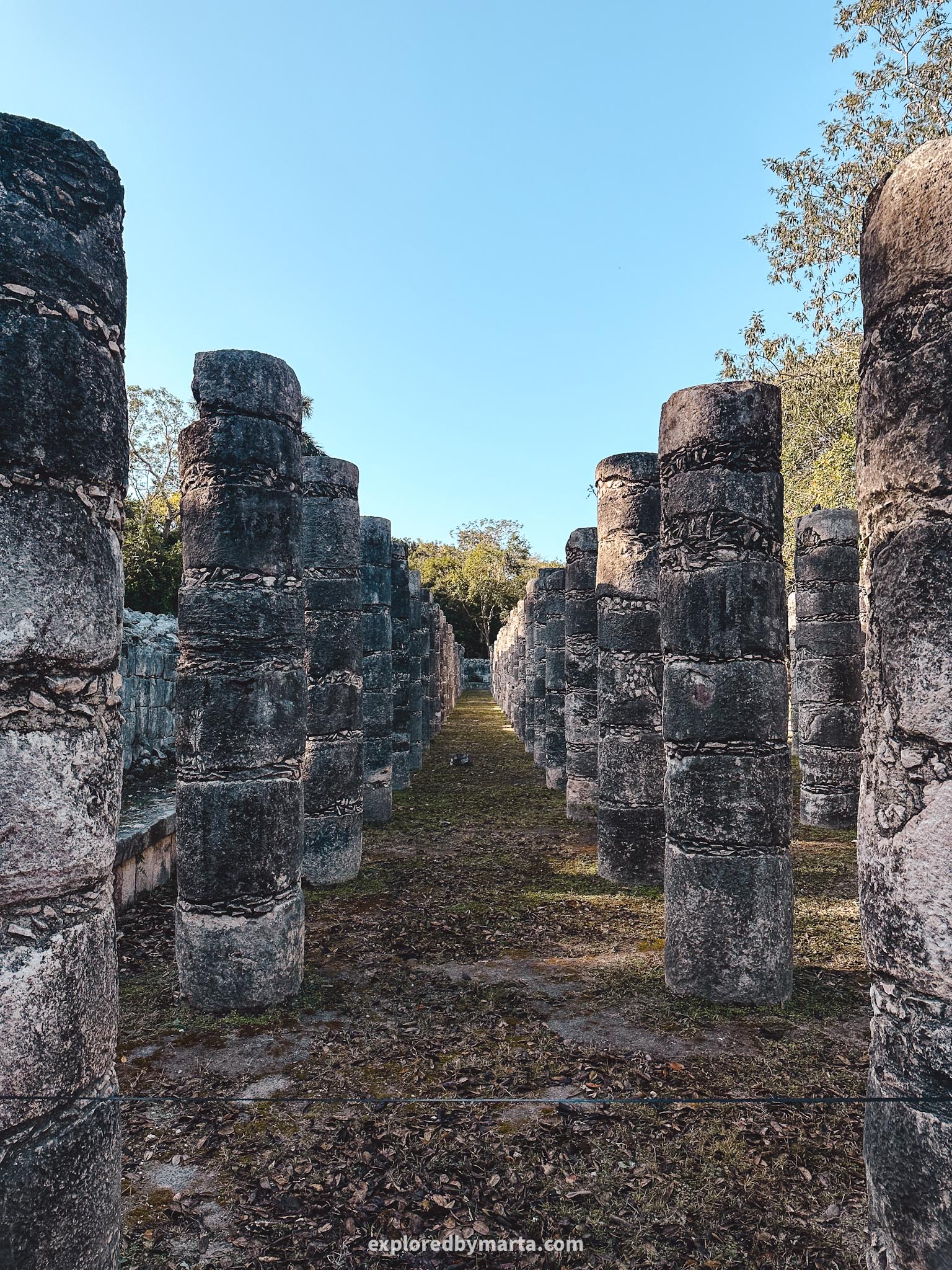
Chichén Itzá archaeological zone consists of multiple temples, pyramids, structures, and even a sacred cenote (cenote sagrado) where Mayans deposited valuables and gifts including human sacrifices as a form of sacrifice to their rain god Chaac.
The most famous structure is, of course, the great pyramid El Castillo (the castle) which is also known as the Temple of Kukulcan. The pyramid with the temple on top of it is 30 meters high and was built sometime between the 8th and 12th centuries.
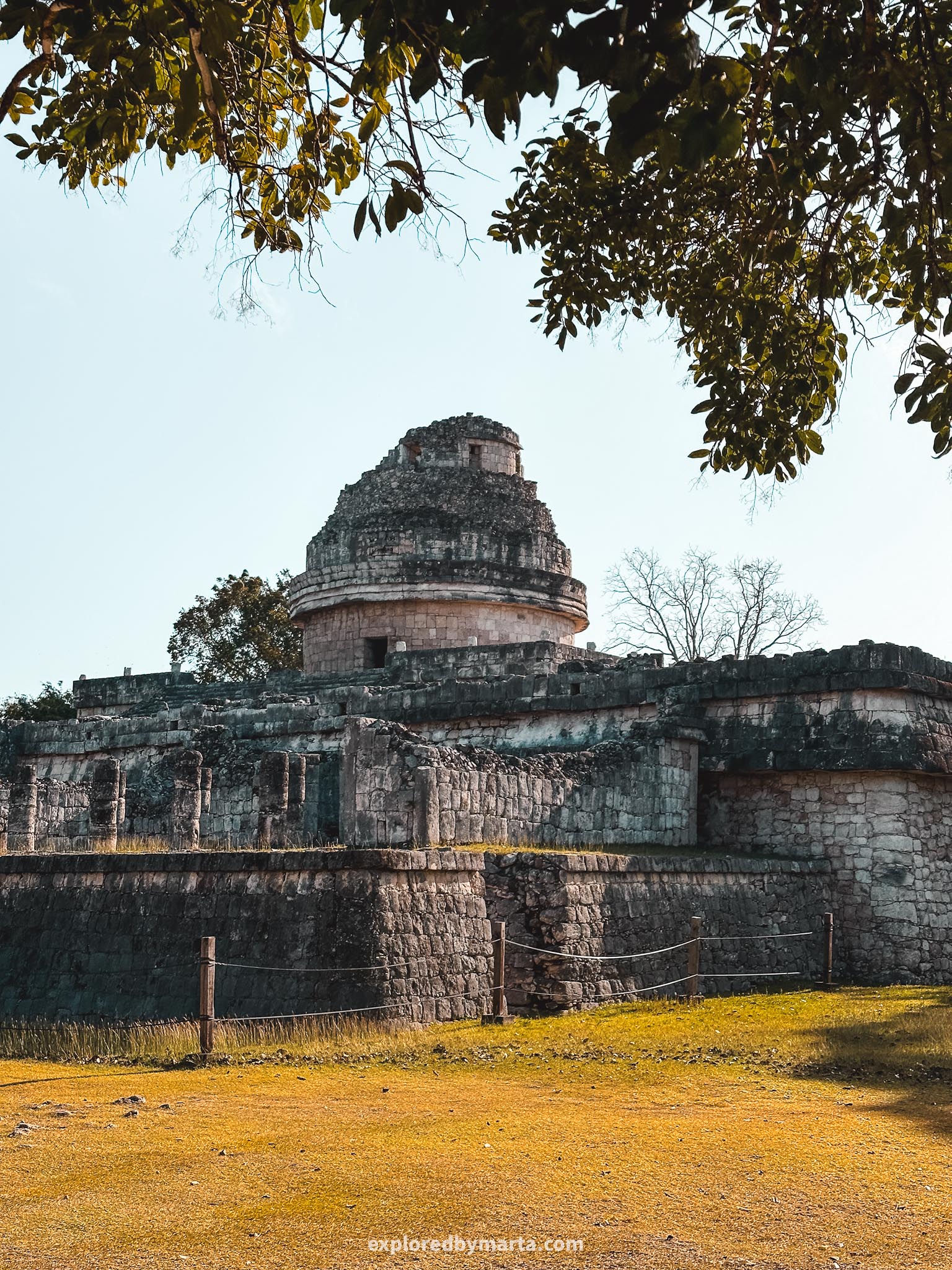
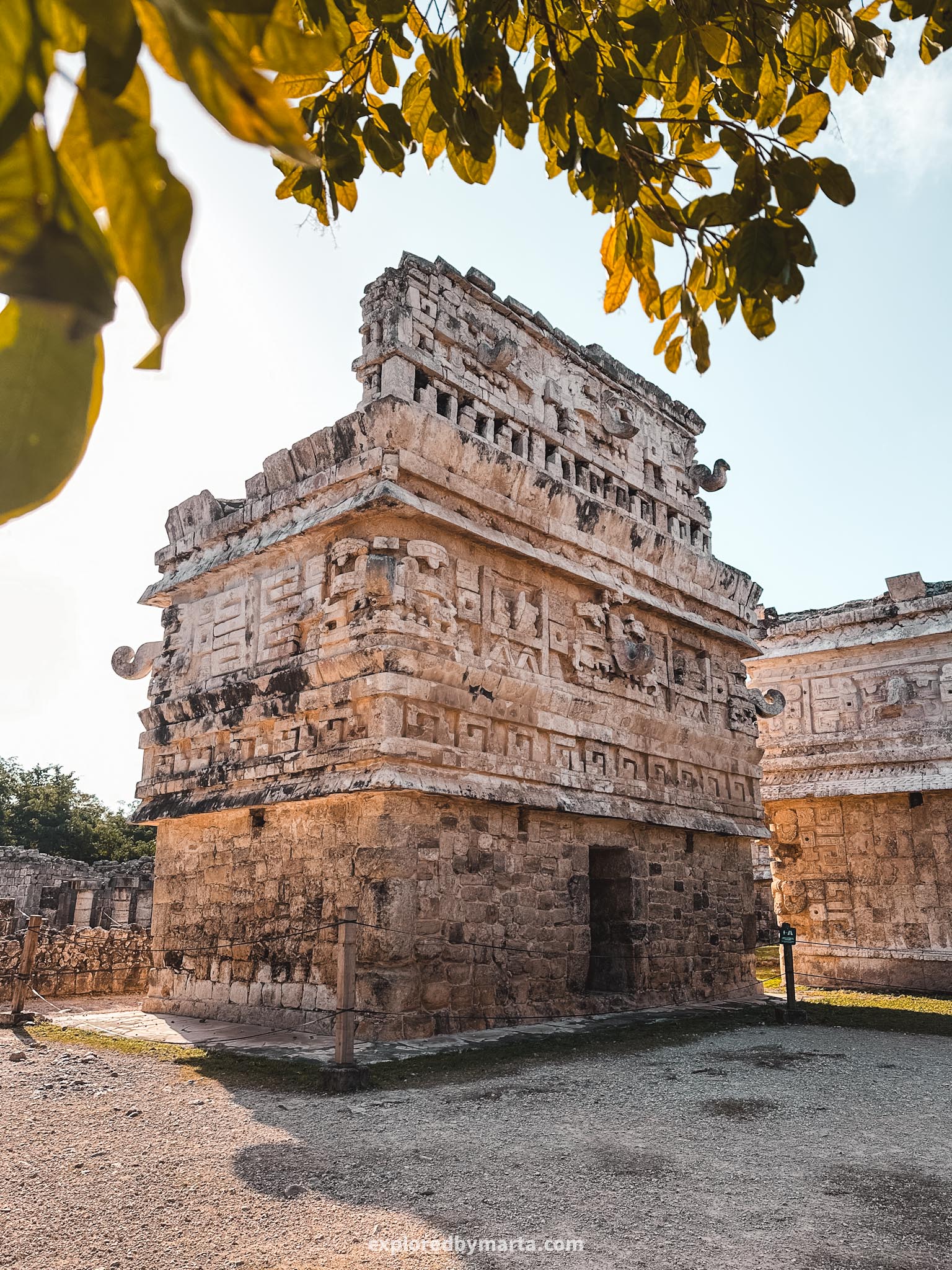
Interestingly, when you clap your hands in front of the staircase of the pyramid, the echo of the sound mimics the voice of the quetzal bird. The same effect happens at another large pyramid in the Yucatán Peninsula – Uxmal.
Besides the Chichen Itza pyramid, other structures nearby include the Temple of the Warriors with a group of a thousand columns around it, the Temple of the Great Tables, the Ballcourt, and the Eagles and Jaguars platform.
A little bit further away you will find one of my favorite buildings – El Caracol (the snail) which is a Mayan observatory dating back to the 10th century. Next to it, there is a building complex – Las Monjas – boasting an extravagant Puuc architectural style.
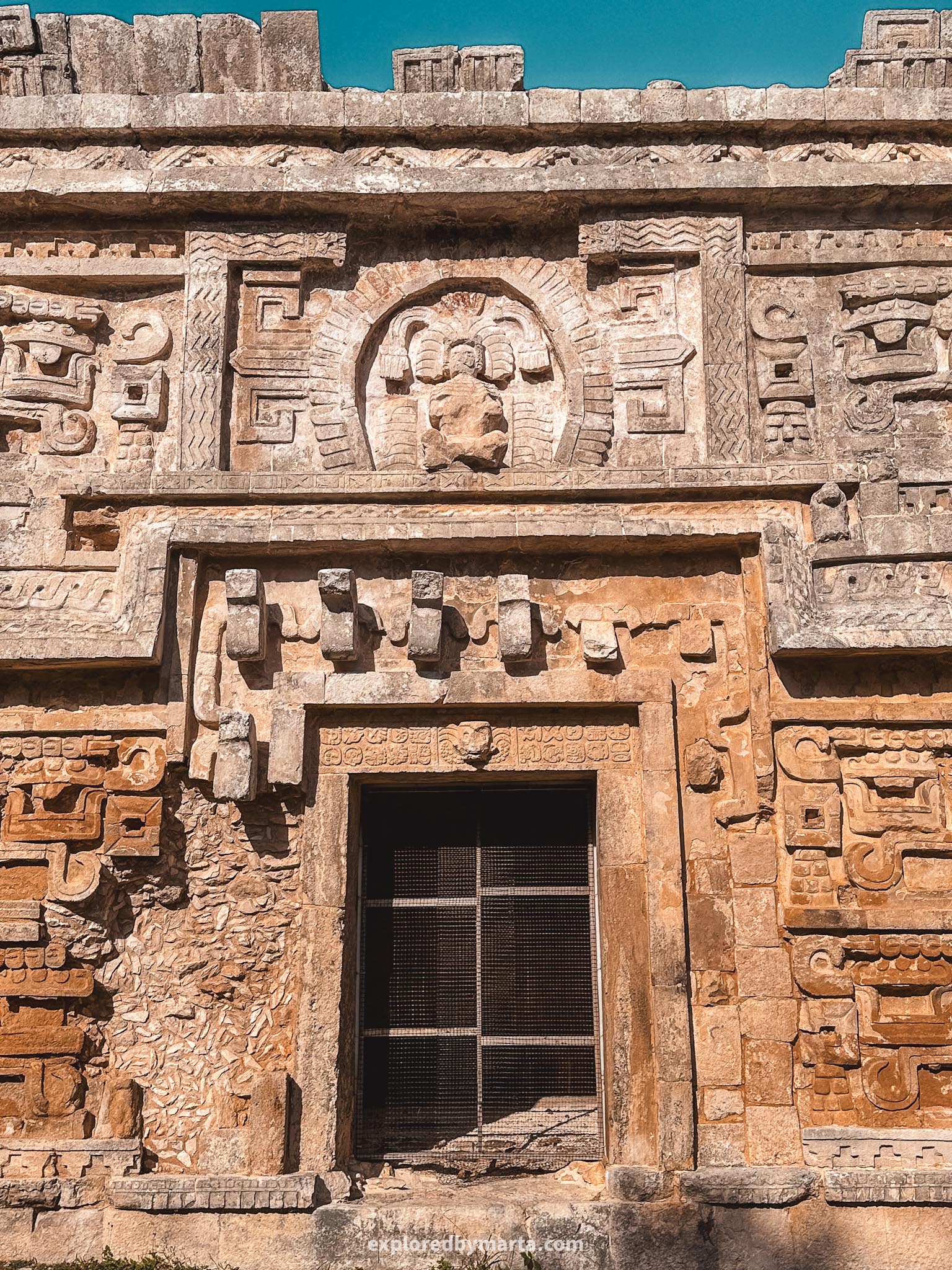
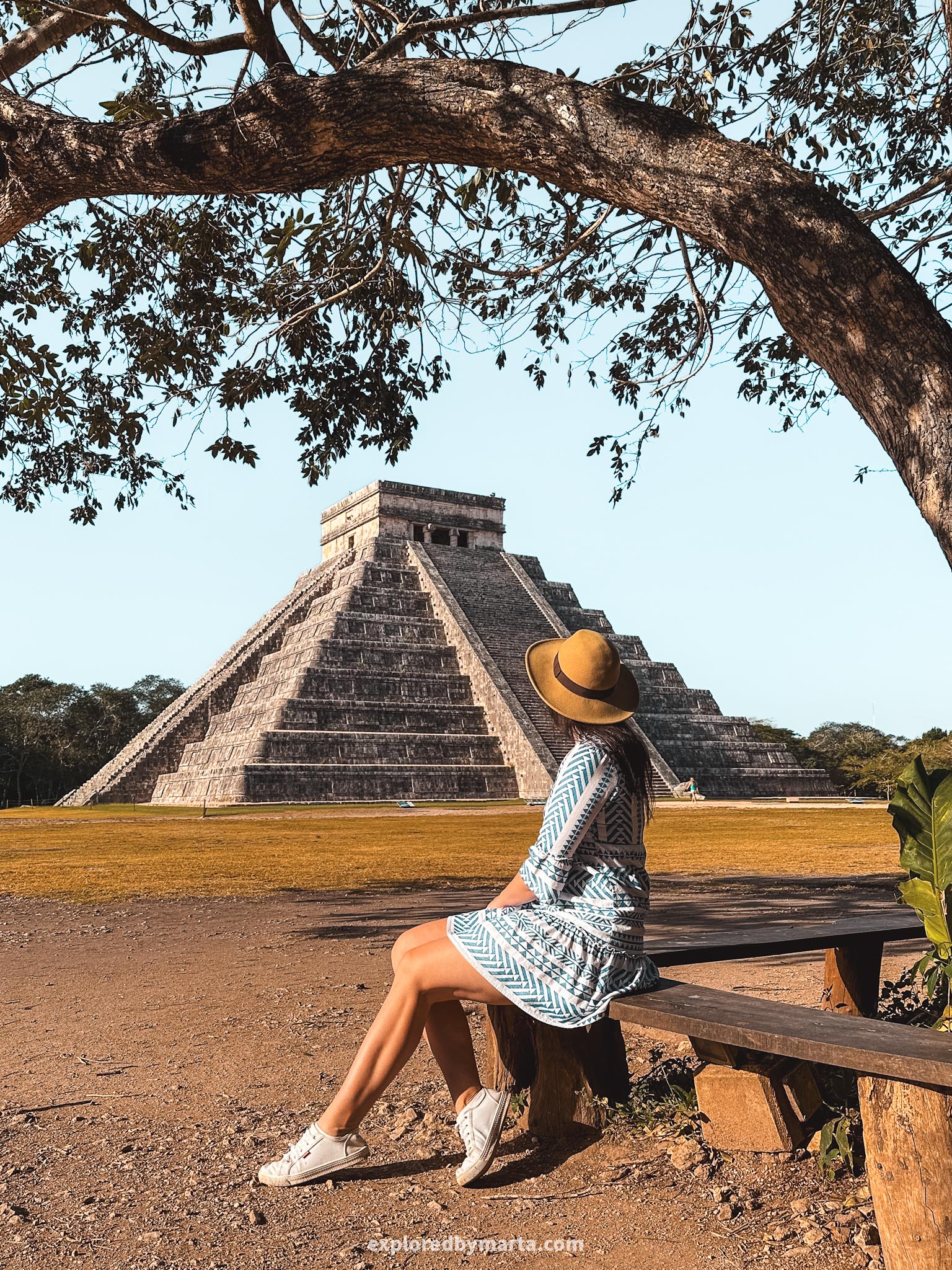
Visiting the Chichen Itza pyramid site is one of the bucket list things to do in the Yucatán Peninsula and tops the list of the best day trips from Valladolid, Mexico. This place gets super crowded so I recommend arriving first thing in the morning.
The site opens at 8 AM, the parking next to the entrance opens at 7:30 AM. We arrived even before that so that we could be amongst the first ones in. At 8 AM there was already a long line of people so it is best if you have a car and can arrive early.
For parking, we paid more than 100 pesos (in cash) but for the entrance fee (by card) we paid more than a staggering 620 pesos each. If you want, you can hire a guide on the spot (extra fee) who will tell you the history and take you all around the site.
Location: Chichén Itzá
2. Cenote Ik Kil
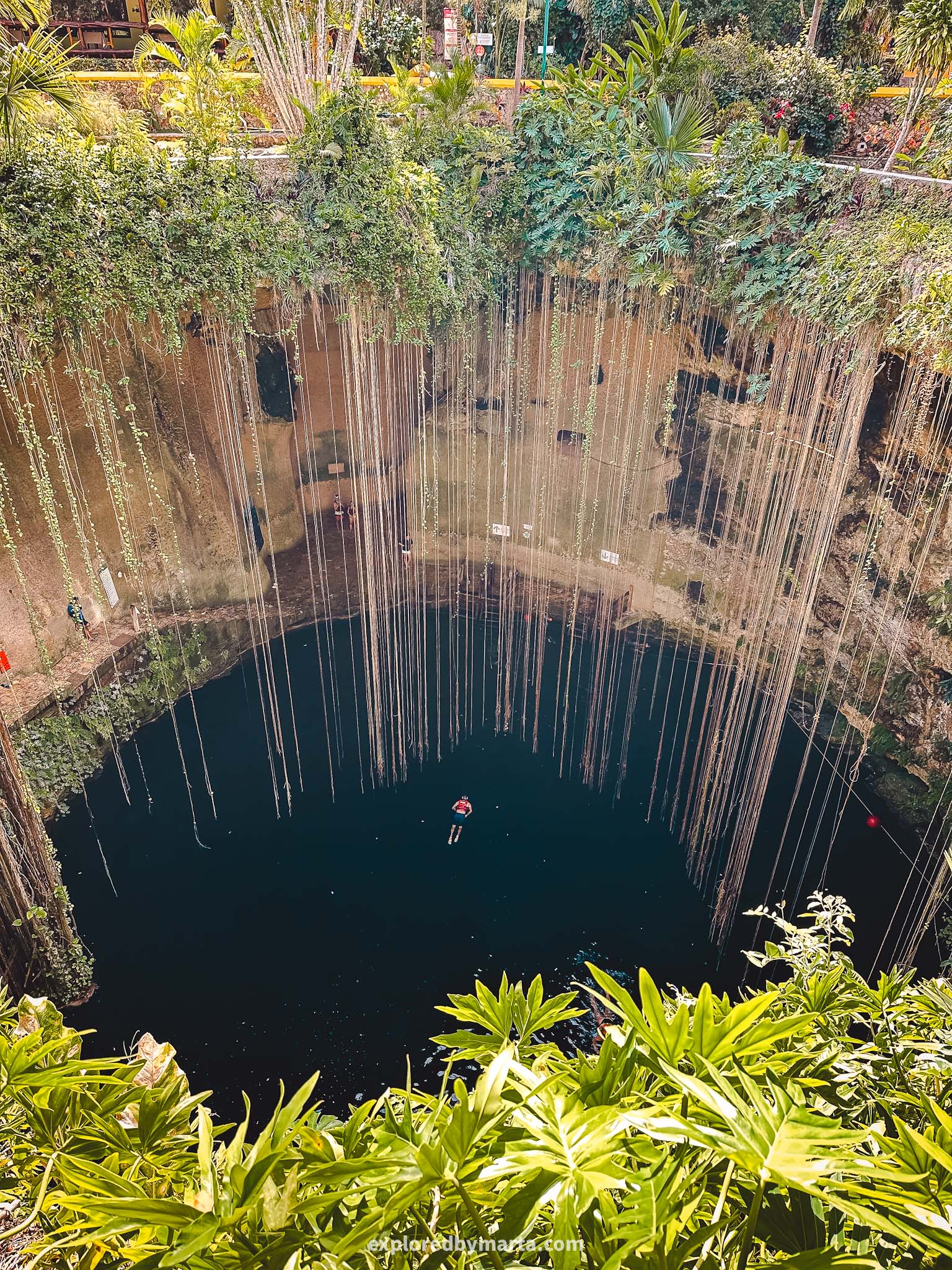
Cenote Ik Kil is another popular destination for day trips from Valladolid and is often combined with visiting Chichen Itza – both sites are located just 5 kilometers (3 miles) apart. This is definitely one of the most beautiful cenotes near Valladolid!
Cenotes are natural sinkholes and this cylindrical cenote stands out with its circular shape and 26-meter walls covered by hanging plants and tree roots. Cenote Ik Kil is 40 meters deep and served as a place for sacrifices for ancient Mayans a long time ago.


The cenote is located within the territory of a hotel and a restaurant so you can not only go for a swim here but buy a combined ticket that offers a buffet-type catering. That’s why it is a popular place amongst tour buses. Arrive early to avoid them!
Did you know? Ik Kil from Mayan means ‘place of the winds’.
We visited Ik Kil Cenote on the same day we went to Chichén Itzá. The entrance fee to the cenote was 200 pesos per person. At first, you can observe the cenote from above and then descend 90 steps through a tunnel to the water. It was gorgeous!
Location: Cenote Ik Kil
3. Ek Balam Archaeological Zone
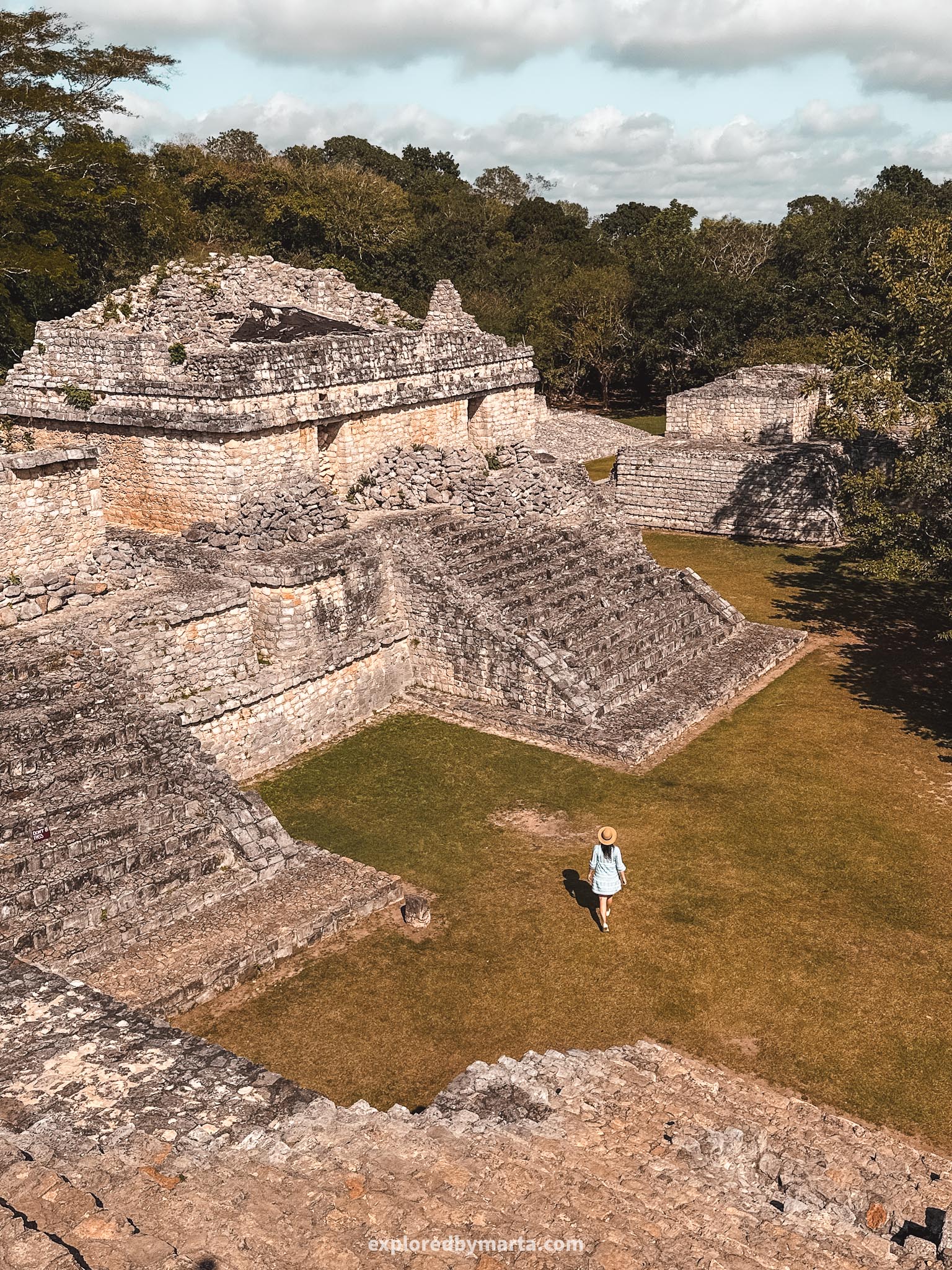
Mayan ruins of Ek Balam is one of the most important sites in Mexico’s Yucatán Peninsula. Let’s start with the best part about it – you can climb the Mayan ruins and pyramids! Not all of them but enough to enjoy amazing views over the jungle.
Them allowing us to climb the pyramids kind of offsets the massive entrance fee – we paid 550 pesos each plus 100 pesos for parking. Theoretically, you can pay by card (only entrance fees) but because of the bad network, we ended up paying in cash.
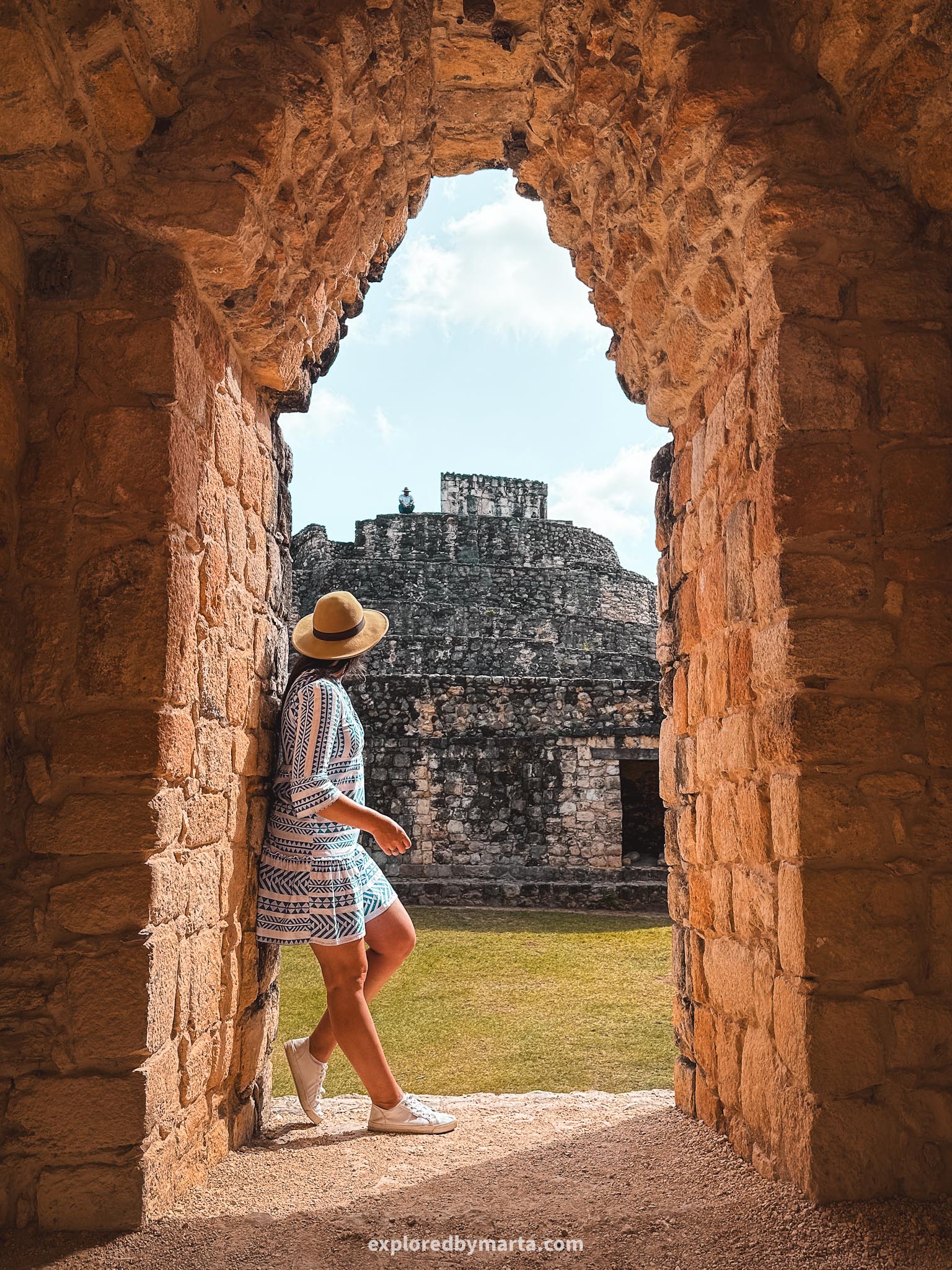

Ek Balam is located just a 30-minute drive from Valladolid making it a convenient destination for day trips from Valladolid city. The name Ek Balam translates as the black jaguar in the Mayan language so you’ll see many black jaguar souvenirs on the site.
Ek Balam site features multiple impressive buildings and pyramids. The largest structure in Ek Balam is the Acropolis. It is like a temple pyramid with a staircase in the middle where you can climb up to the top to see incredible views over the jungle.


To both sides of the central staircase, you can find entrances to temples decorated with stone carvings and mosaics. They are believed to be burial places for Ek Balam rulers. One of the entrances depicts an open mouth of a jaguar (photo above).
Other notable structures in Ek Balam include the Oval Palace (you can climb it), the Entrance Arch, The Twins, or two lookalike temples, as well as the Ballcourt. Historically, Ek Balam was a booming city during the 8th and 9th centuries.

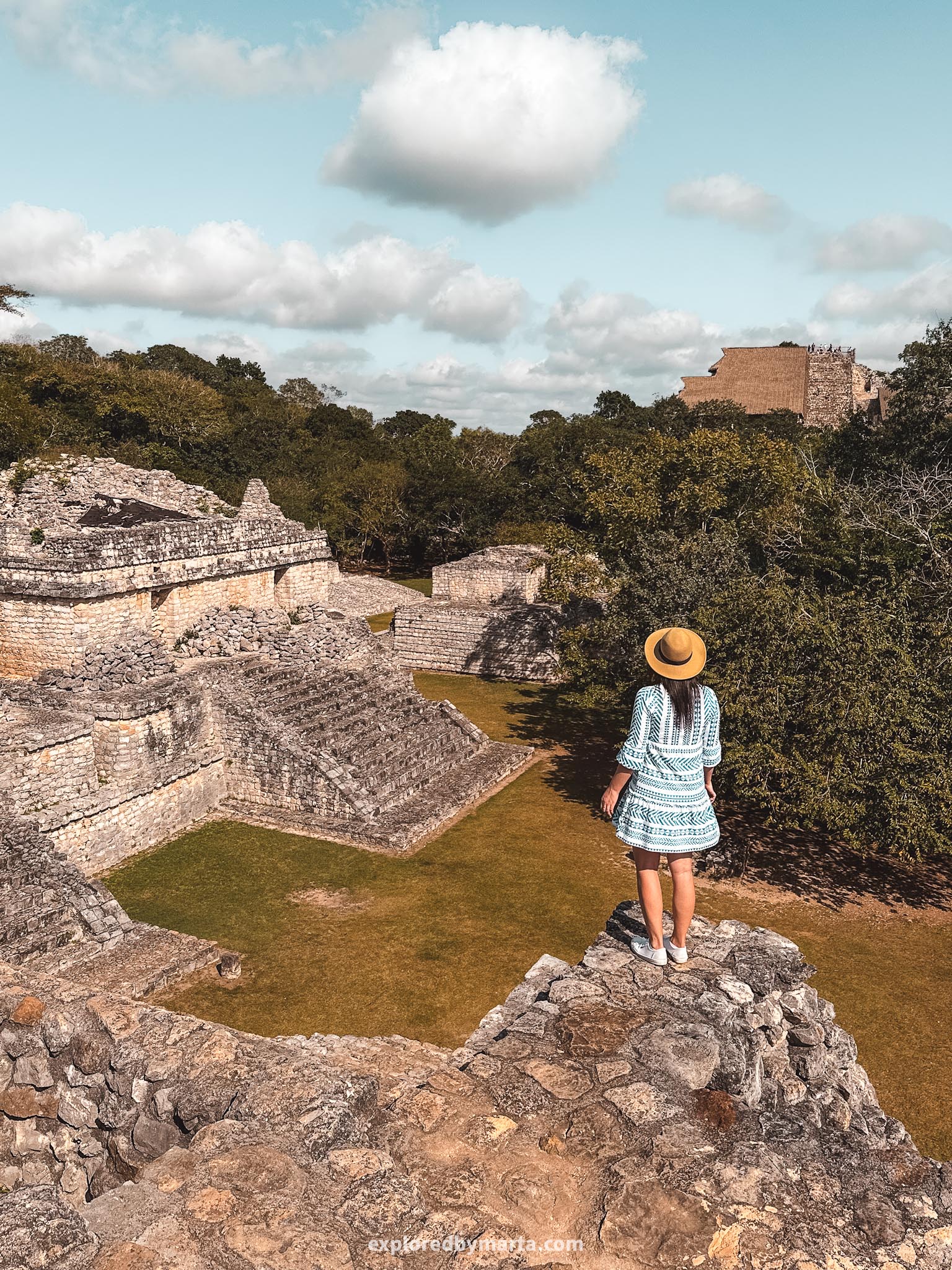
Overall I liked exploring Ek Balam. These weren’t my favorite Mayan ruins mostly because of the inflated entrance fee but I also don’t regret coming here. It is always cool to explore how the Mayan civilization lived before the Spanish found them.
Ek Balam is amongst the last larger Mayan archaeological sites where you are allowed to climb the pyramids. Another larger site where you can climb the pyramids is the Dzibanché Archaeological Zone located to the South not far from Bacalar.
Location: Archaeological Zone of Ek Balam
4. Mexico’s Yellow City – Izamal
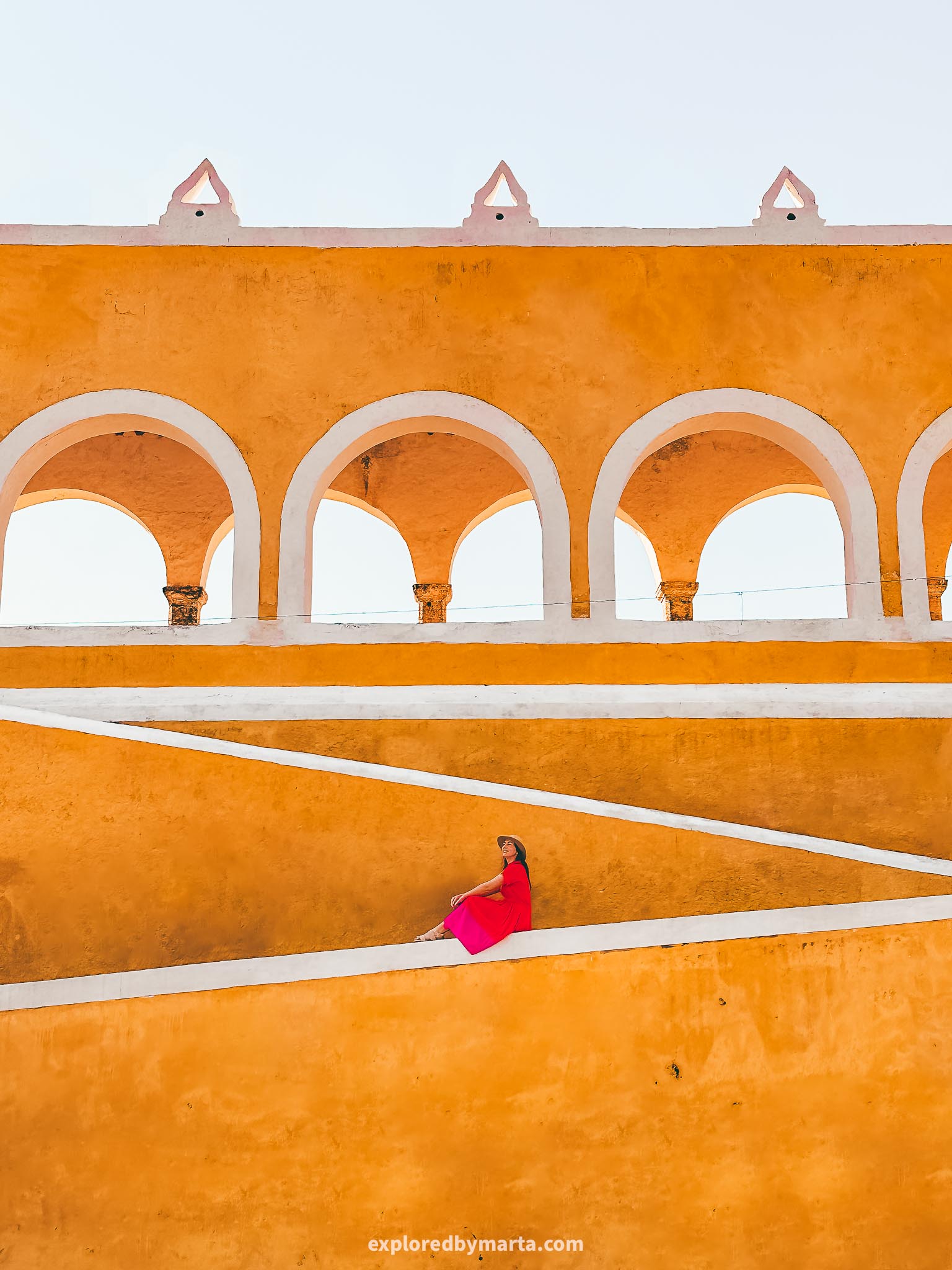
If you are up for a photo-worthy and memorable day trip from Valladolid, then you must go to Mexico’s Yellow City – Izamal! This Pueblo Mágico (one of Mexico’s magic towns) is just a 1h 20 min drive from Valladolid and will only take 3-4 hours to explore!
The colonial town attracts visitors with its yellow color as all the buildings in the center of this magical town are painted yellow (no, not the entire town). We arrived at Izamal in the morning and spent there half a day exploring everything Izamal had to offer.

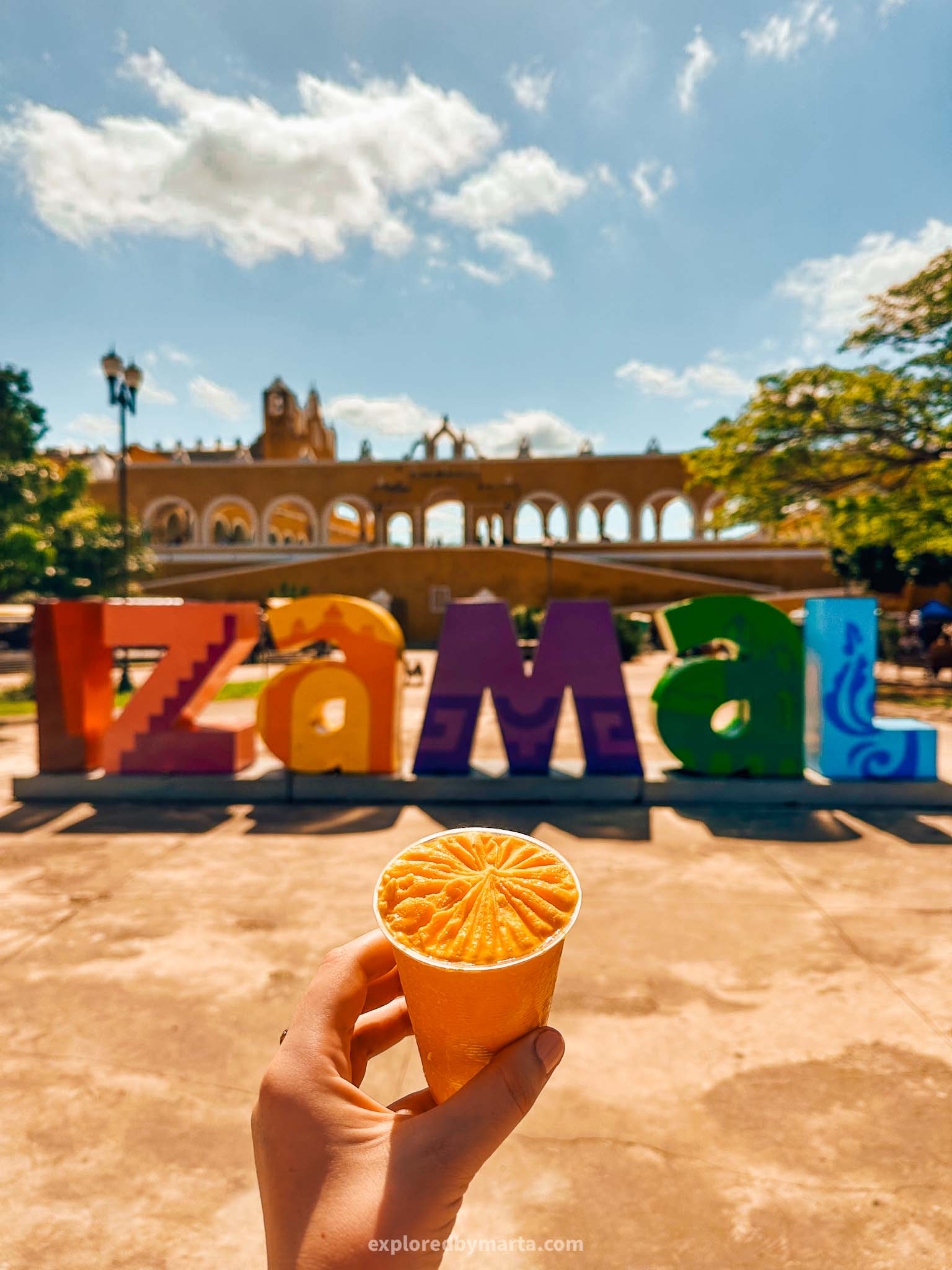
The most famous attraction in Izamal is the Convento de San Antonio sitting atop a hill (there once was an ancient Maya pyramid) in the heart of the town. Next to it, you will find the second-largest atrium in the world surrounded by a beautiful yellow arcade.
You can explore the unique convent and walk around the atrium for free. It does have working hours so check those before coming! The best time to arrive is early morning before the town heats up to scorching degrees.
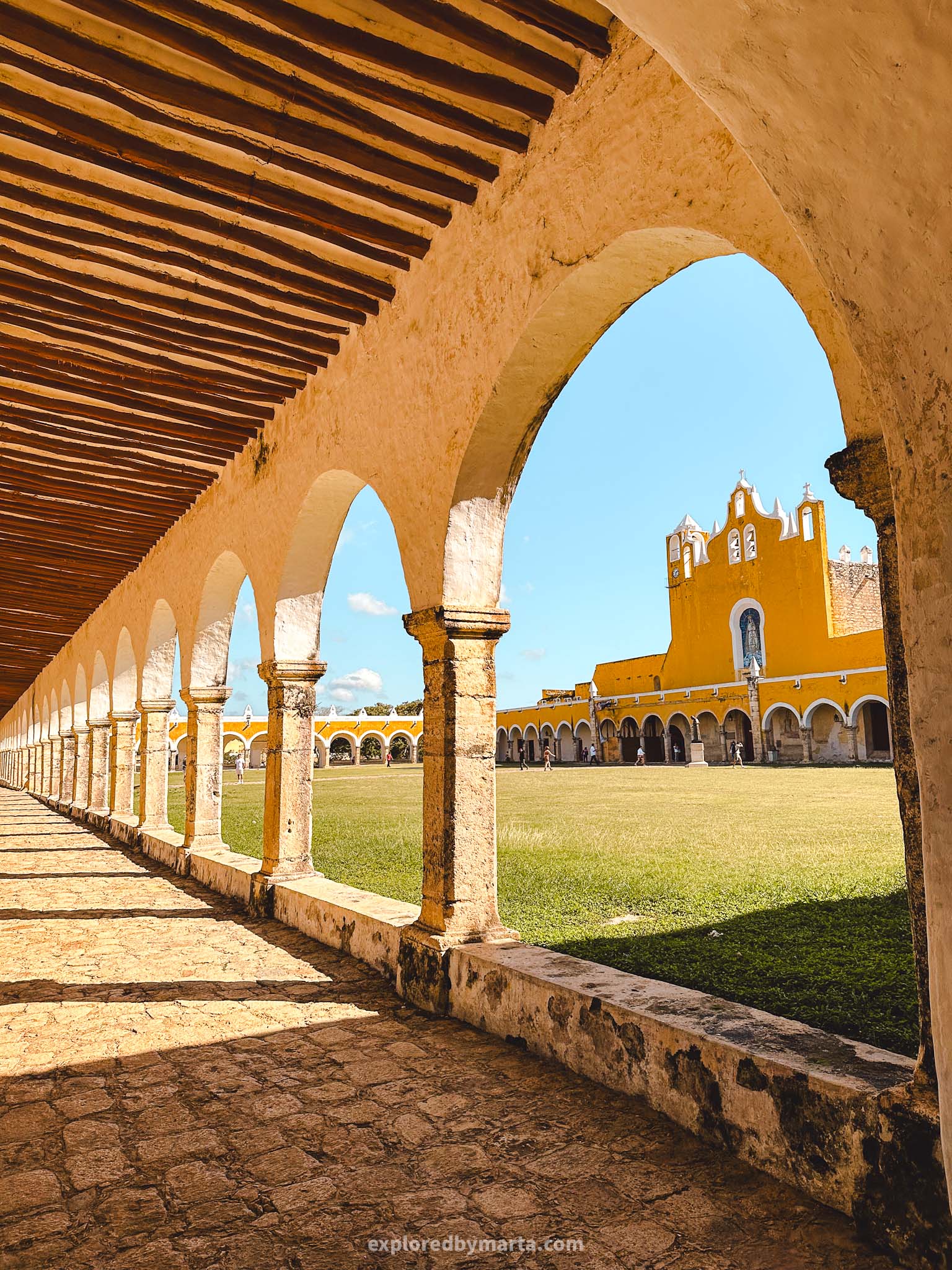
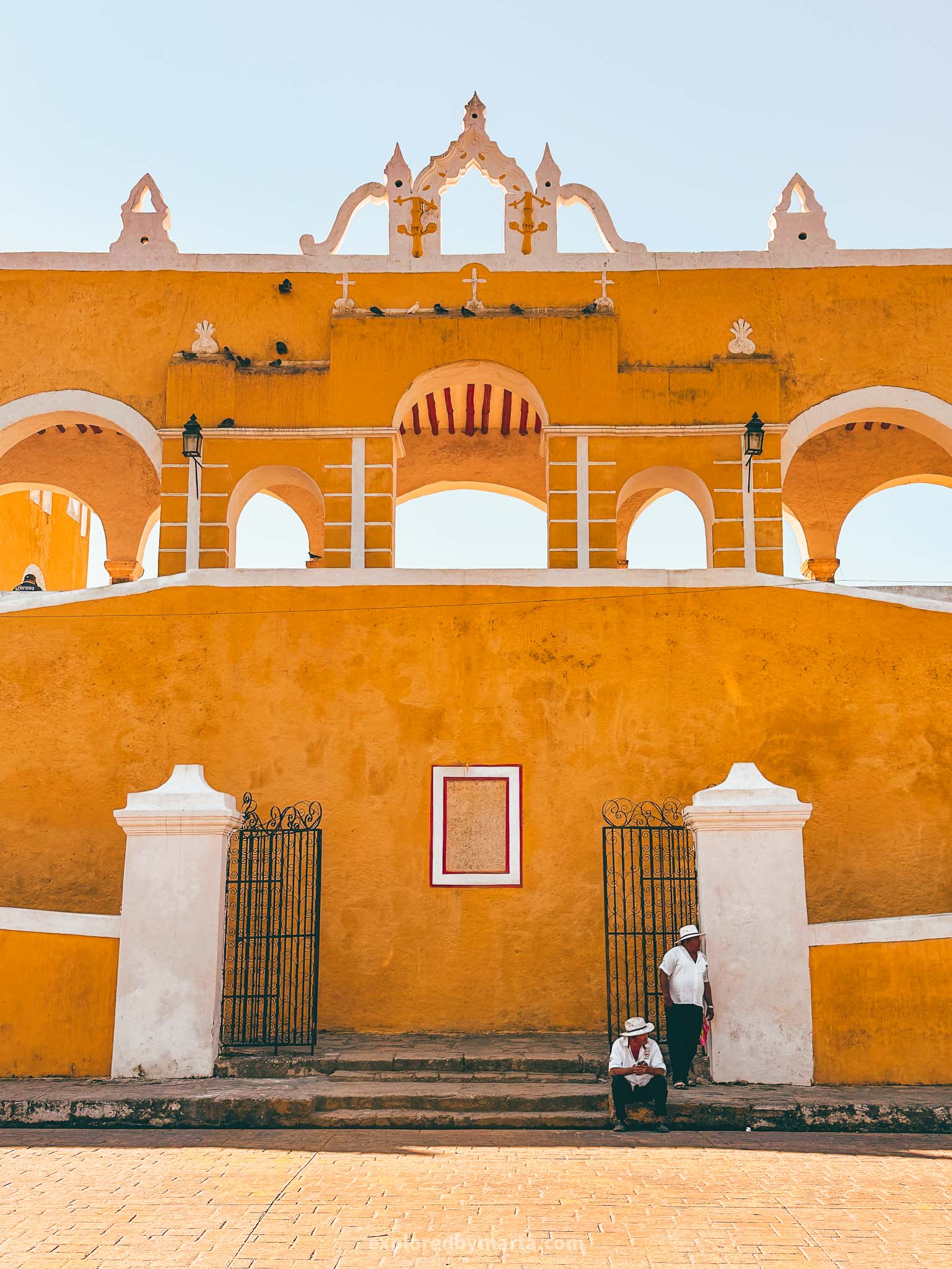
Other must-do things in Izamal include climbing the Mayan pyramids – Kinich Kak Moo and Itzamatul. If you only have time for one, I highly recommend visiting the Kinich Kak Moo pyramid as you can see the whole town of Izamal from the top!
Don’t forget to explore the local market, Mercado Municipal de Izamal, try the yellow corn ice cream, walk around the 5 de Mayo Park, and, for lunch, I suggest trying Mayan dishes at Restaurant Kinich. This was one of my favorite day trips from Valladolid!
Location: Convento de San Antonio in Izamal
5. Cenote Suytun and other cenotes near Valladolid
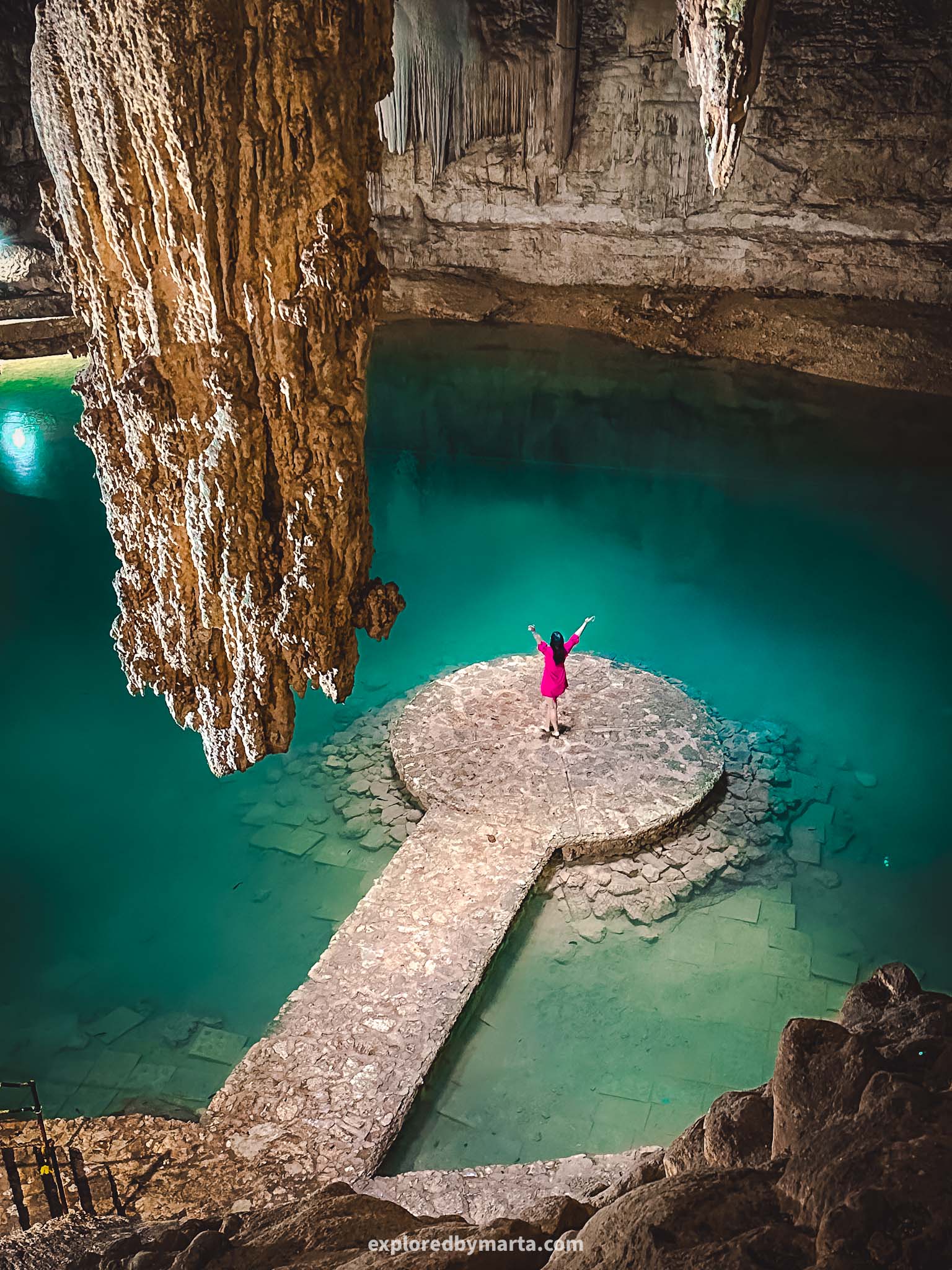
Located just a 10-minute drive from the city, Cenote Suytun is one of the most iconic cenotes near Valladolid. Nowhere else you will find a stone pathway leading into the middle of a large underground cenote with a hole in the ceiling right above it.
If you time your visit right, there will be a light beam shining through the hole and illuminating the whole place. Or maybe it will shine right onto the stone platform. We arrived in the morning so we did not see the light beam.
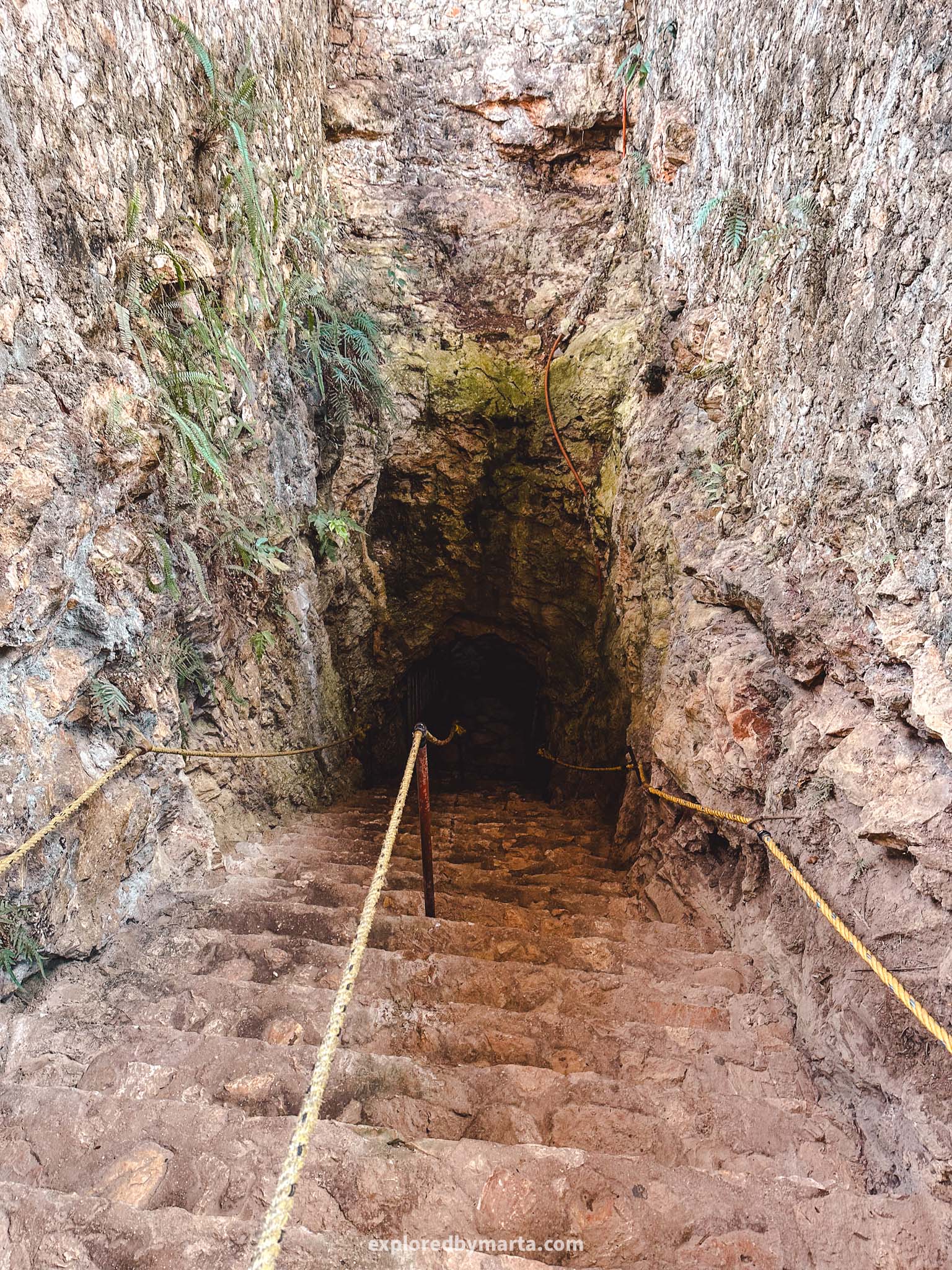
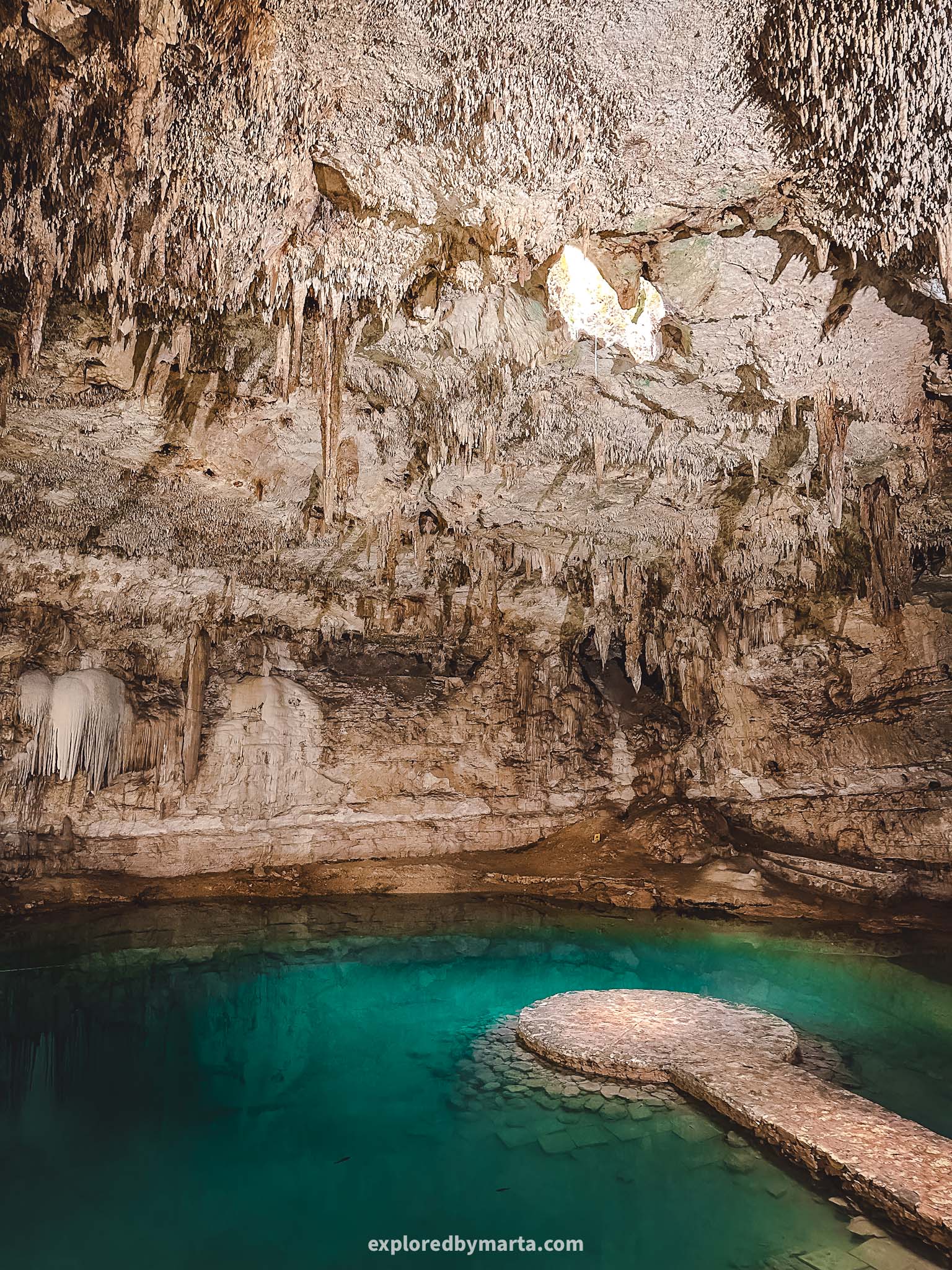
Cenote Suytun is one of the best Instagram spots in Valladolid and one of the most beautiful places in the Yucatan Peninsula. You have probably seen this sight with the stone platform and a stalactite hanging from above all over the internet, right?
Entrance to the cenote was 250 pesos per person when we visited. It is part of a building complex that includes a hotel, a restaurant, different facilities, and also another cenote (we did not visit the other cenote).
Tip! We visited this cenote on March 9th and the stone platform was dry. However, the water level can be higher or completely cover the platform after rainy periods. The best way to make sure how it looks is by checking recent reviews on Google Maps.
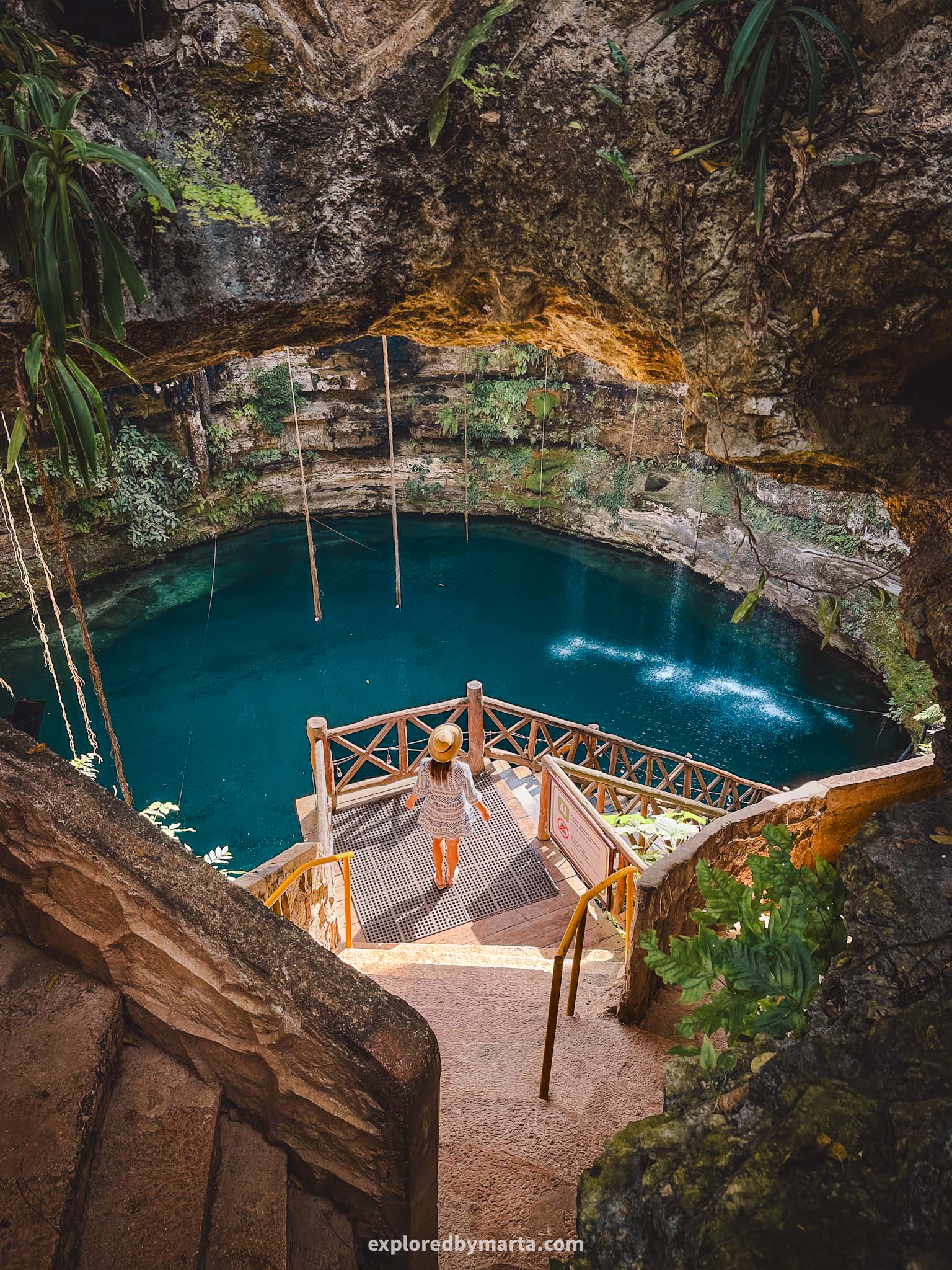
Valladolid is blessed with many incredibly beautiful cenotes near the city – some of the most beautiful in the whole Yucatan peninsula! Another gorgeous and unique cenote just a 10-minute drive from the center of Valladolid is Cenote Saamal.
Cenote Samaal is one of those gorgeous semi-open cylindrical cenotes with crystal clear cool water and even a waterfall coming down from the top of the walls. Perfect place for a refreshing dip into the water!


Just a 2-minute drive further down the road you will find Cenotes Dzitnup. It is a pair of two cenotes – Cenote X’keken and Cenote Samula – that you can visit with the same ticket (it was 200 pesos for us). Both of them are underground cenotes.
Although they are not as impressive as the first two gorgeous cenotes, they will definitely be less crowded than the two famous ones that are frequently visited by tour buses and get quickly crowded during the day.
Location: Cenote Suytun – Cenote Saamal – Cenote Xkeken – Cenote Samula
6. Capital of the state of Yucatán – Merida
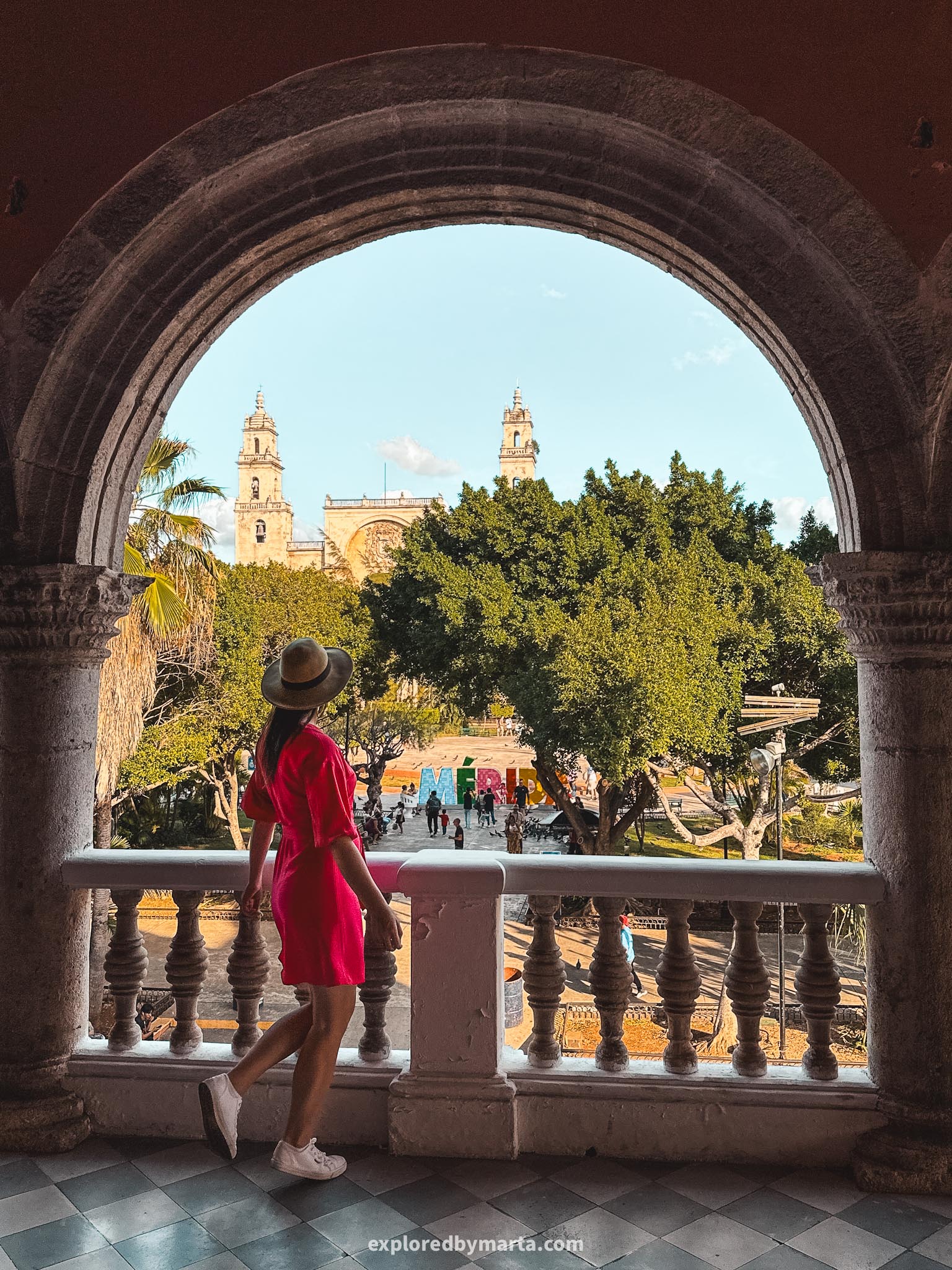
Founded in the 16th century, Merida, or the White City, was the first American Capital of Culture and is home to the oldest cathedral in mainland Americas! It also serves as the capital of the state of Yucatán! See all the things to do in Merida here!
Merida is the perfect place to explore the Mayan culture, local Mexican lifestyle as well as colonial history through archaeological zones, food, local markets, and diverse architecture in and around the city.
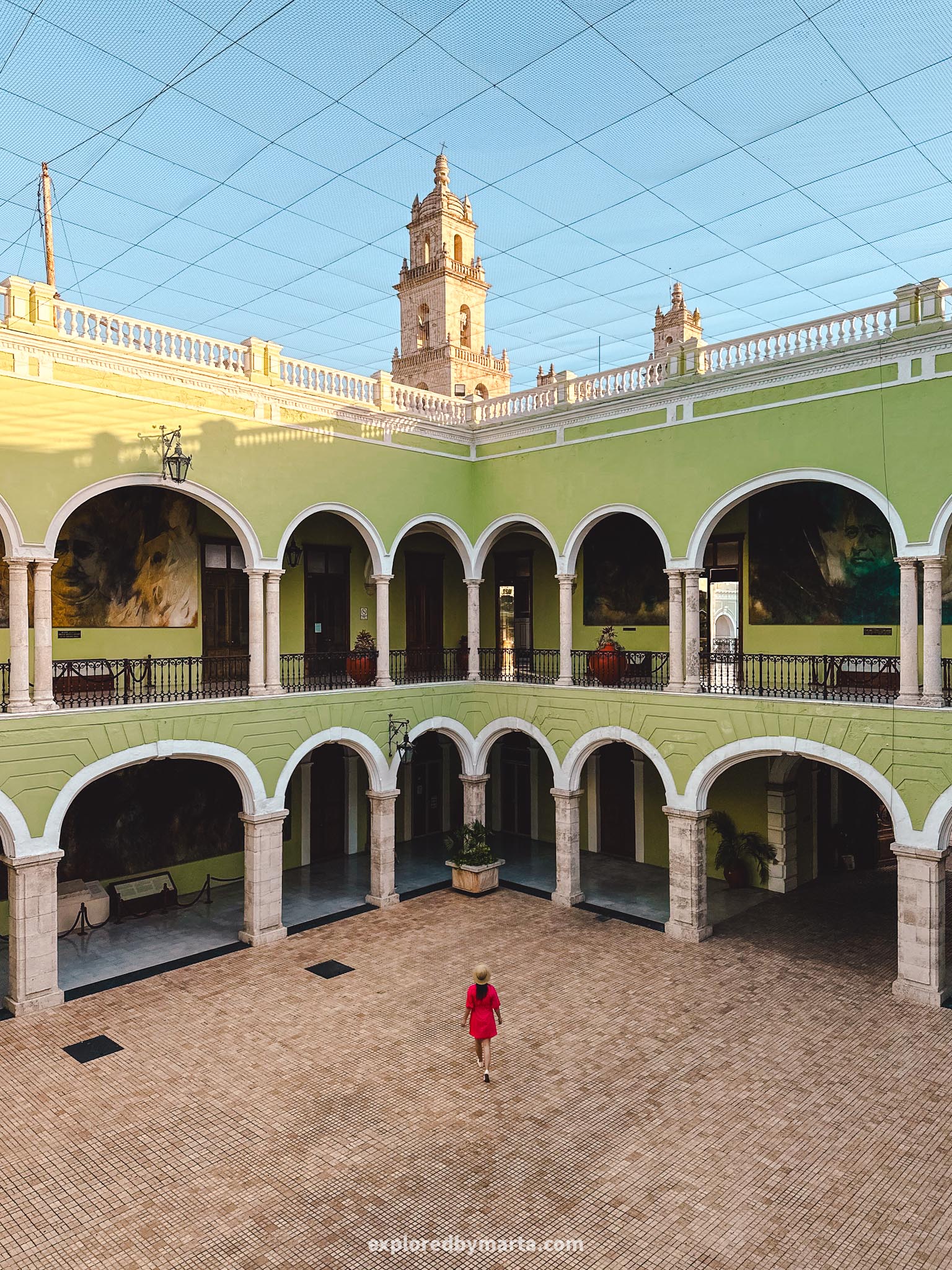
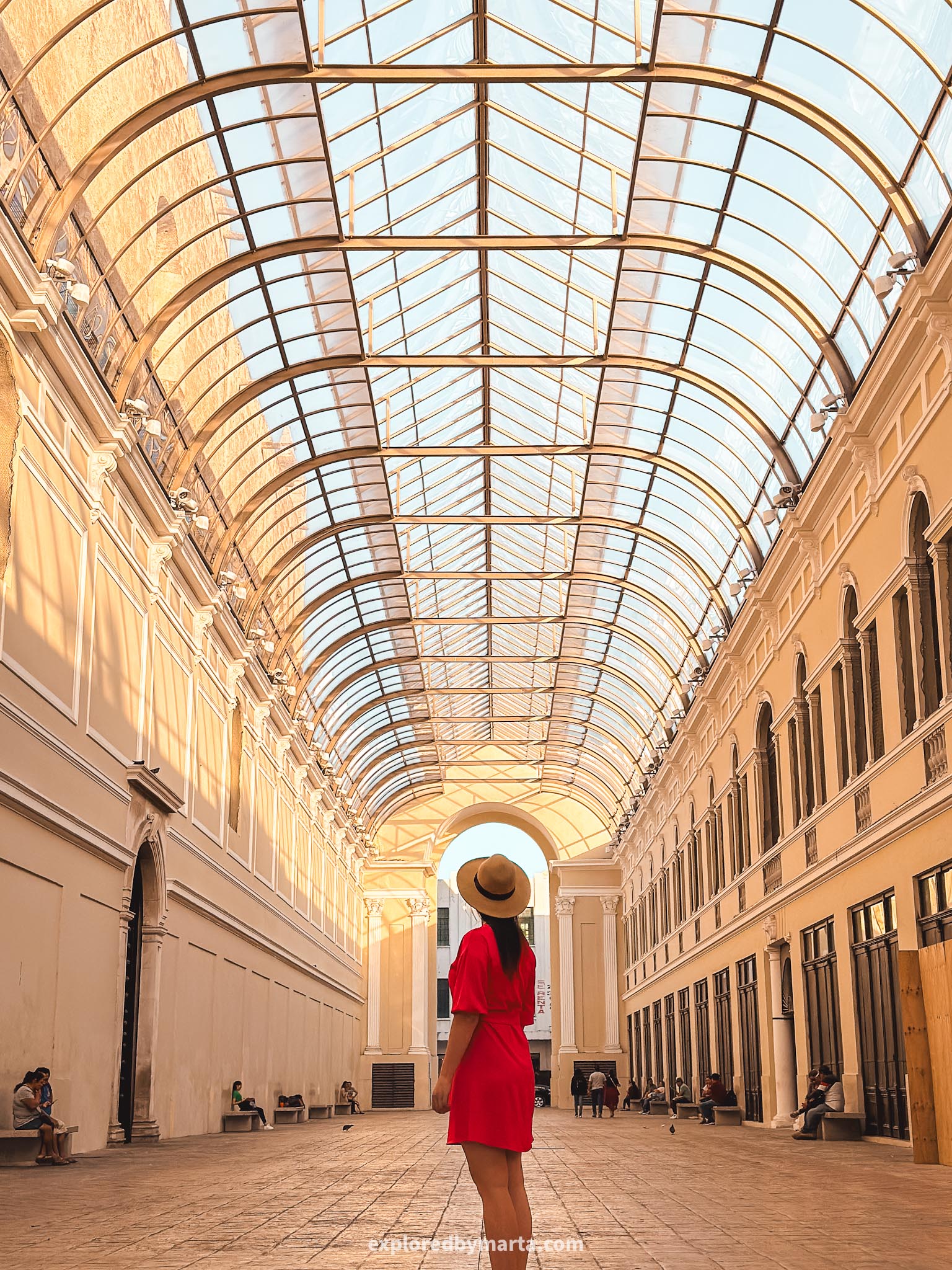
The number one must-visit place in Merida is Plaza Grande or the main square that hosts special events like the popular Mayan ball game ‘Pok Ta Pok’ which you can see every Saturday around 8 PM for free.
Lined around the square are the best places to visit in Merida – the Cathedral of Mérida, the Pasaje de La Revolución, the red Palacio Municipal de Mérida, the green palace – Palacio de Gobierno, and Museo Casa Montejo – house of the founder of Merida!

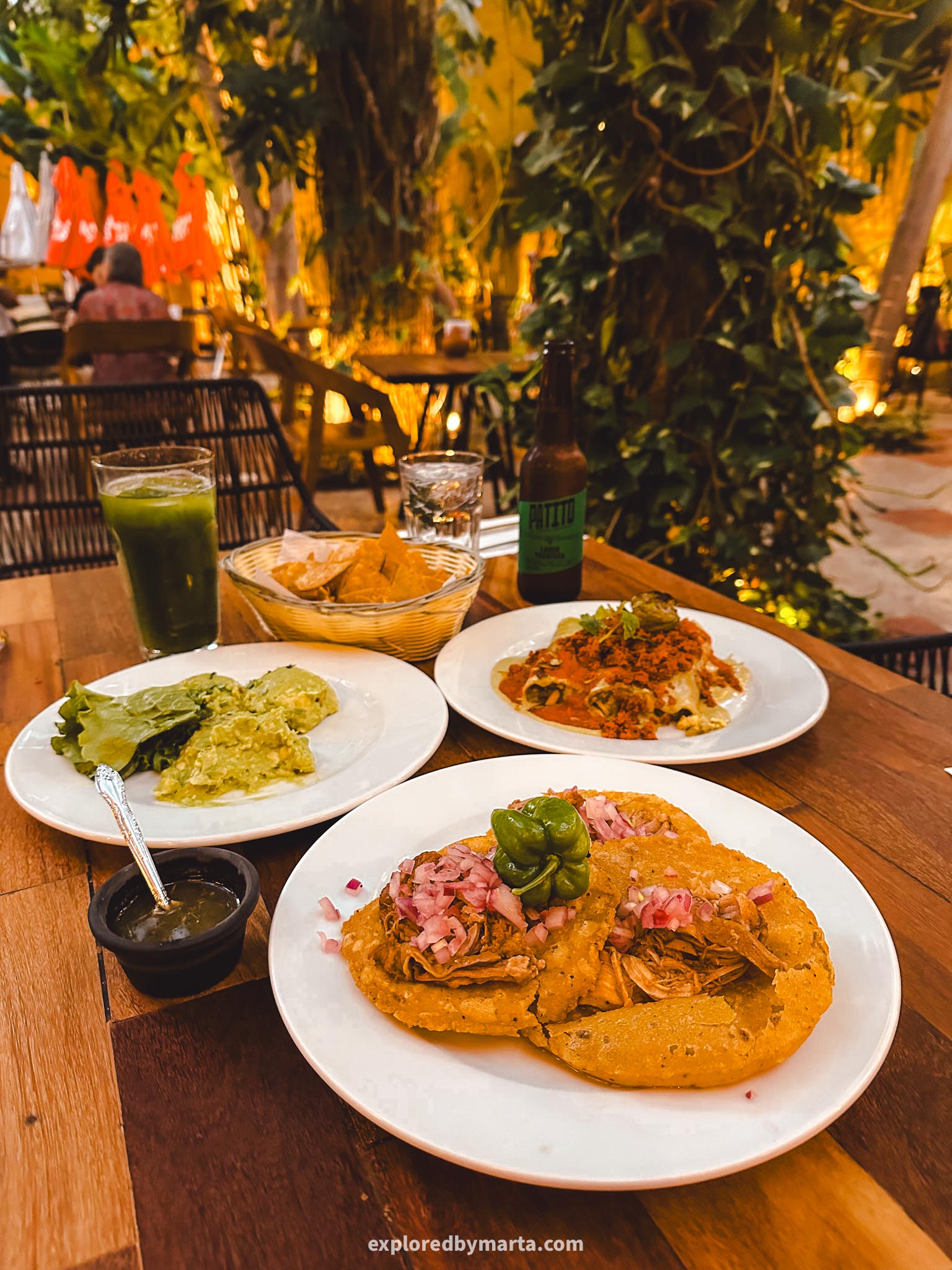
Merida is also a hub of Mayan gastronomy and Mexican cuisine. You must stop by some taco places like Taqueria La Lupita and Manjar Blanco – taco spots that were featured on Netflix’s Taco Chronicles.
As for gastronomy, you have to try Mayan dishes at either one of the best restaurants – La Chaya Maya or at the Museum of Yucateca Gastronomy which is a restaurant with a small exhibition. Try dishes like salbutes, sopa de lima, or pollo pibil!
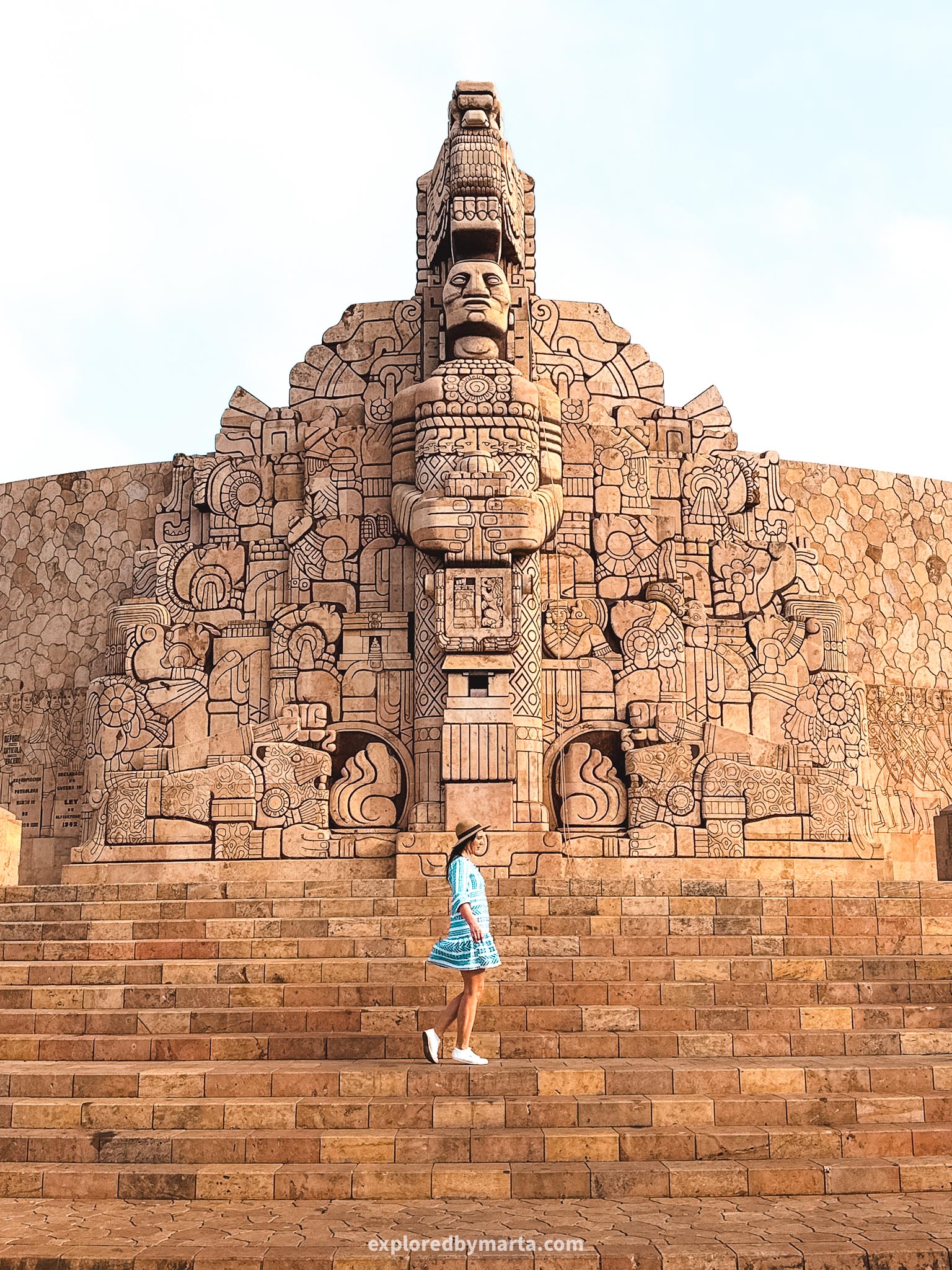
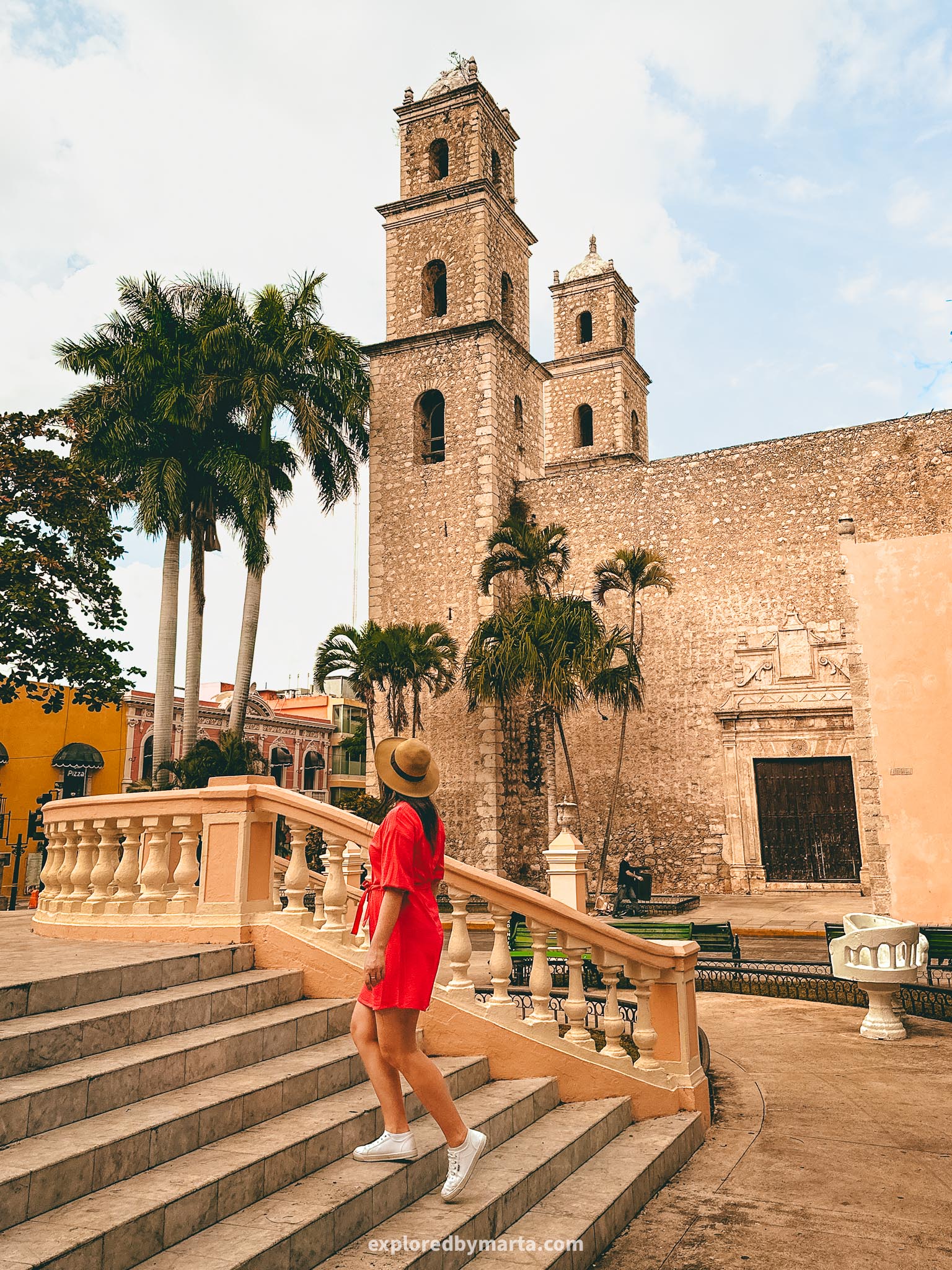
As you wander the historic center, spot some of the remaining historic arches, enjoy the smells and flavors at Mercado San Benito, and see some of Merida’s photo-perfect parks like Parque de los Hidalgos or Parque de Santa Lucia with its ‘Sillas Tu y Yo’ chairs!
If you really want to stretch your legs go to the famous Paseo de Montejo and walk down the French-inspired Montejo Walkway with its splendor of 19th-century colonial architecture until you reach Monumento a La Patria – one of Merida’s landmarks!
Location: Plaza Grande of Merida
7. Uxmal Archaeological Zone and Ruta Puuc route
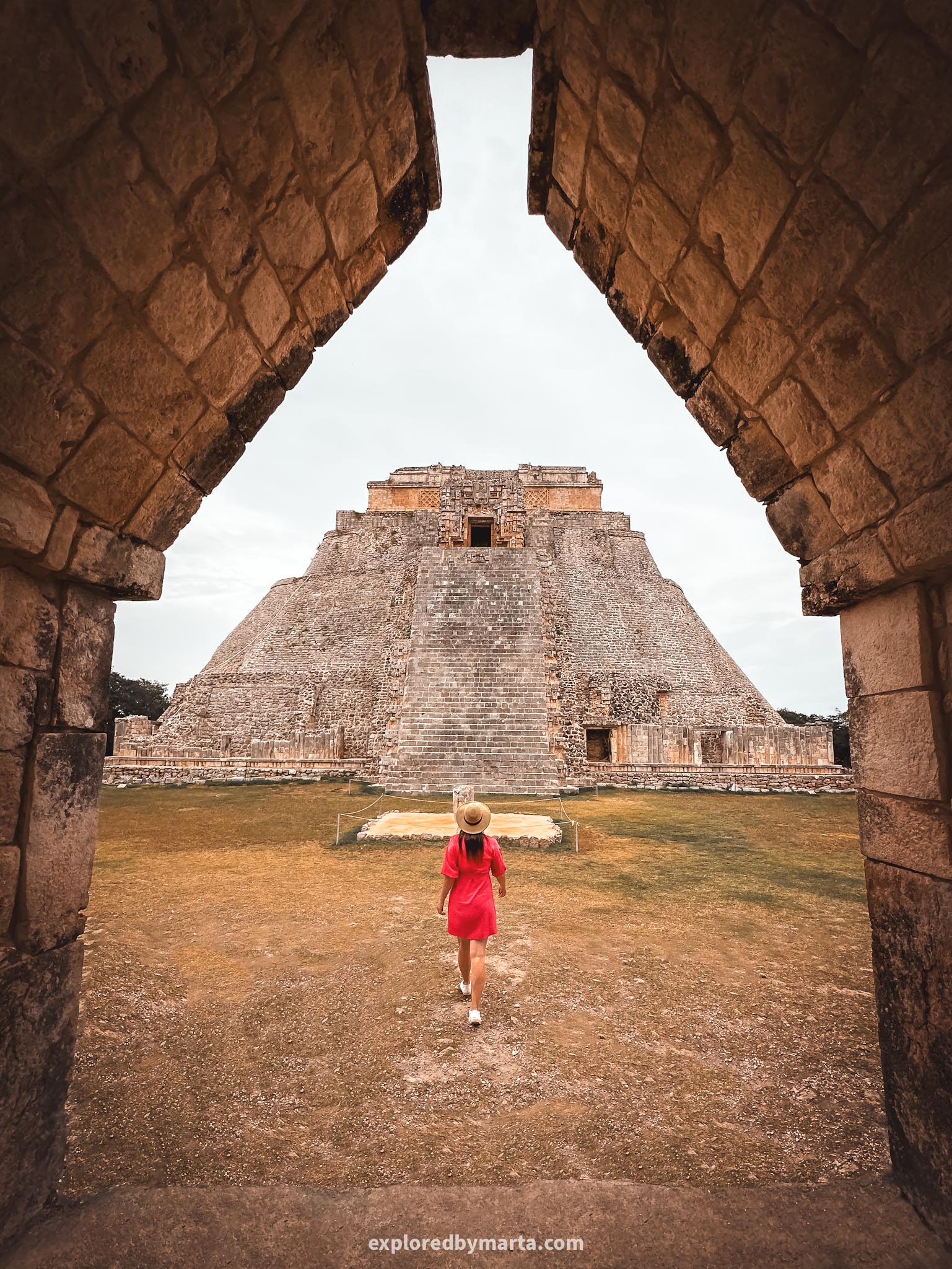
Just a 1-hour drive South of Merida or about a 2h 30 min drive from Valladolid is a group of five different Mayan archaeological zones called the Ruta Puuc route. The most famous one is Uxmal which is often regarded as more beautiful than Chichen Itza.
Why Ruta Puuc? Ruta Puuc is a group of special Mayan ruins in Yucatán featuring the Puuc architectural style. Puuc means ‘hills’ in the Mayan language and is also the name of the region South of Merida where all these ruins are located.
There are many archaeological zones near Merida but the Ruta Puuc route is the most famous area to visit. If you have time on your hands then a trip to Uxmal and other sites will be one of the most adventurous day trips from Valladolid you could have!

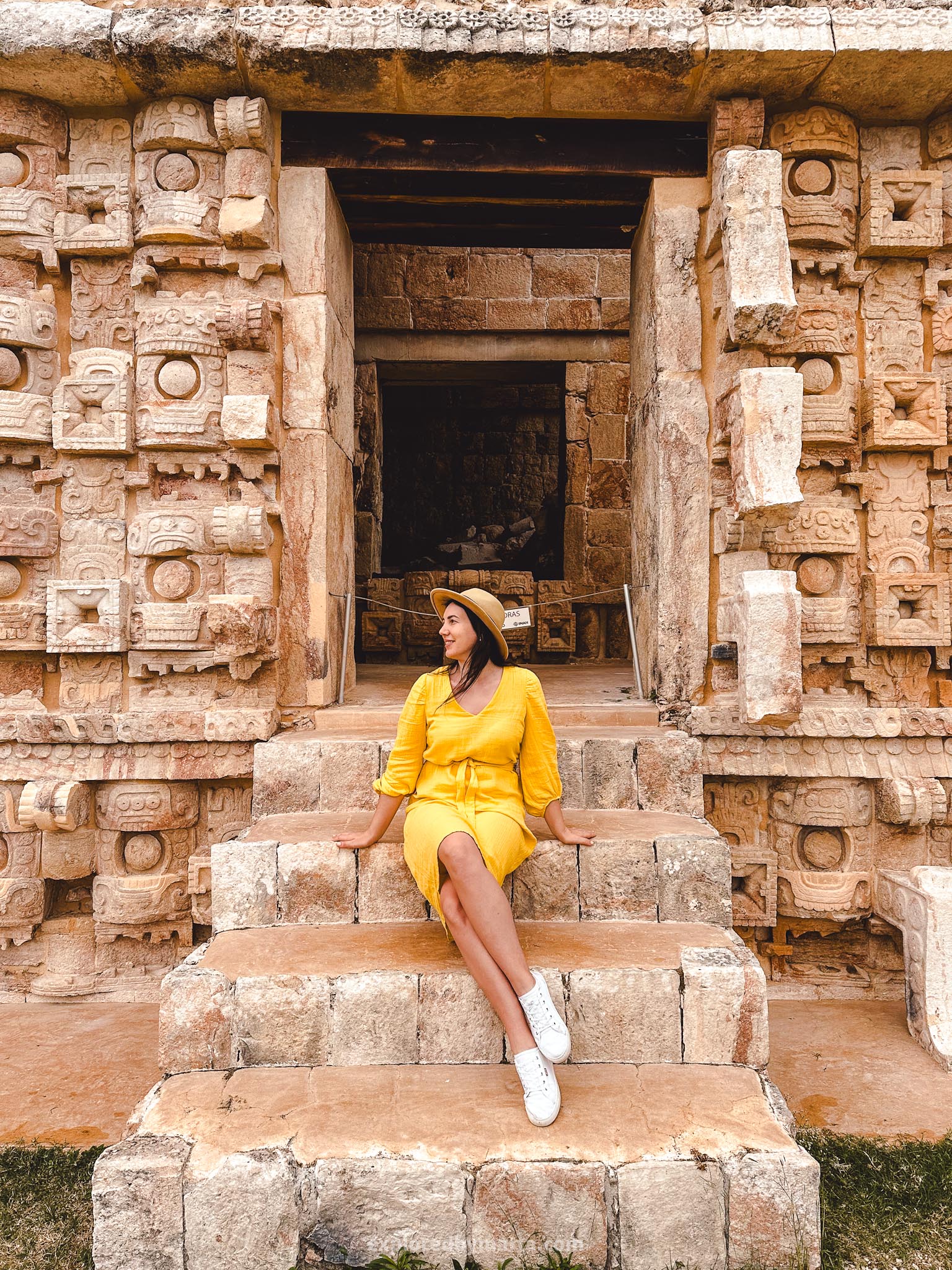
Puuc architecture usually displays stone mosaics, geometrical elements, and elaborate sculptures e.g. it often features masks of the long-nosed rain god Chaac. It also features stone arches in unique shapes (see the frame in the first photo).
Uxmal with its famous Pyramid of the Magician is amongst the most impressive Mayan ruins in Mexico. The whole archaeological zone is listed as a UNESCO World Heritage Site due to its significance.
Uxmal at its peak was a city of 25 thousand people so the pyramid is not the only impressive building here. Don’t forget to check out The Governor’s Palace located on a hill, Casa de las Palomas as well as the Nunnery Quadrangle!
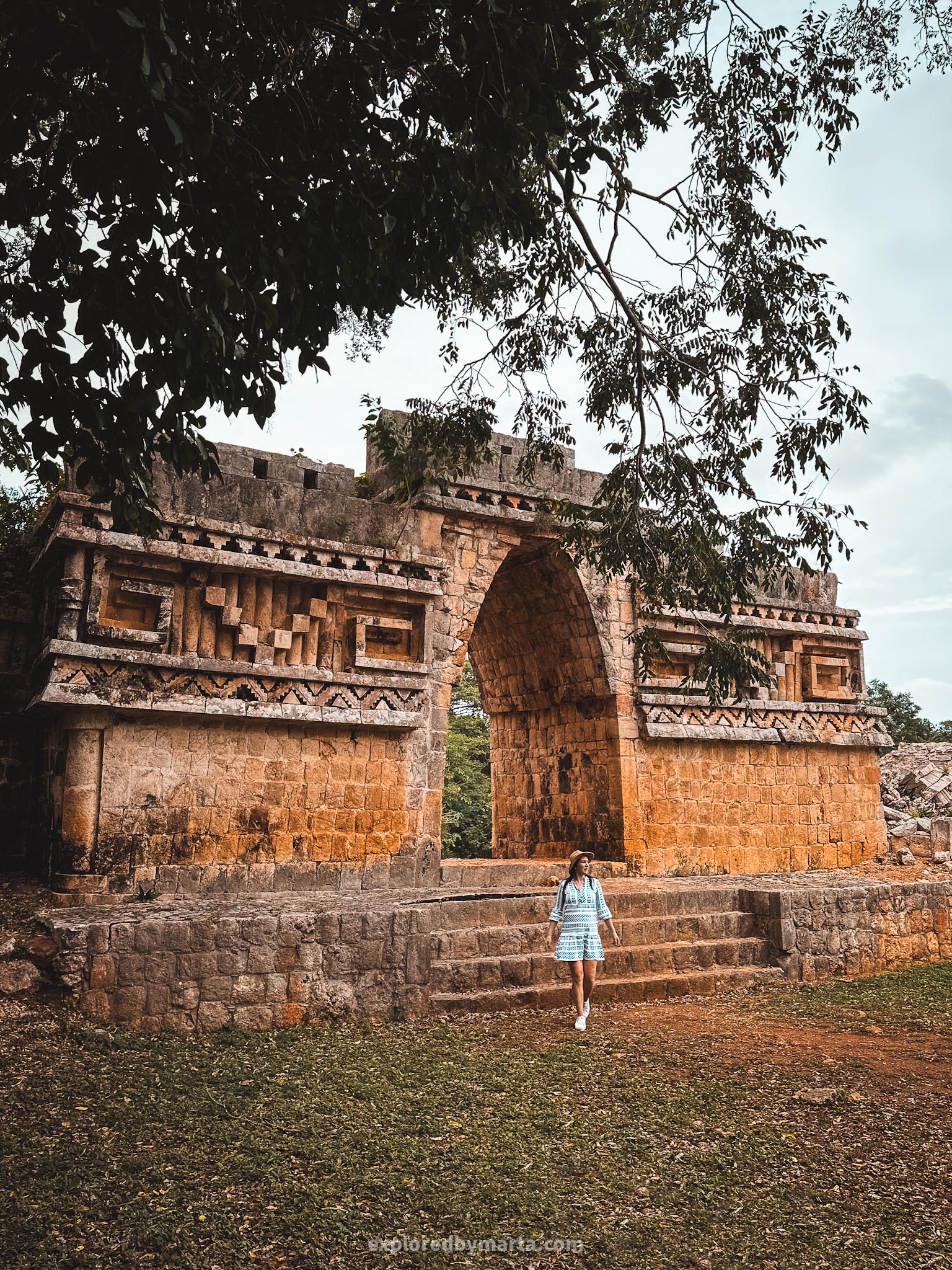
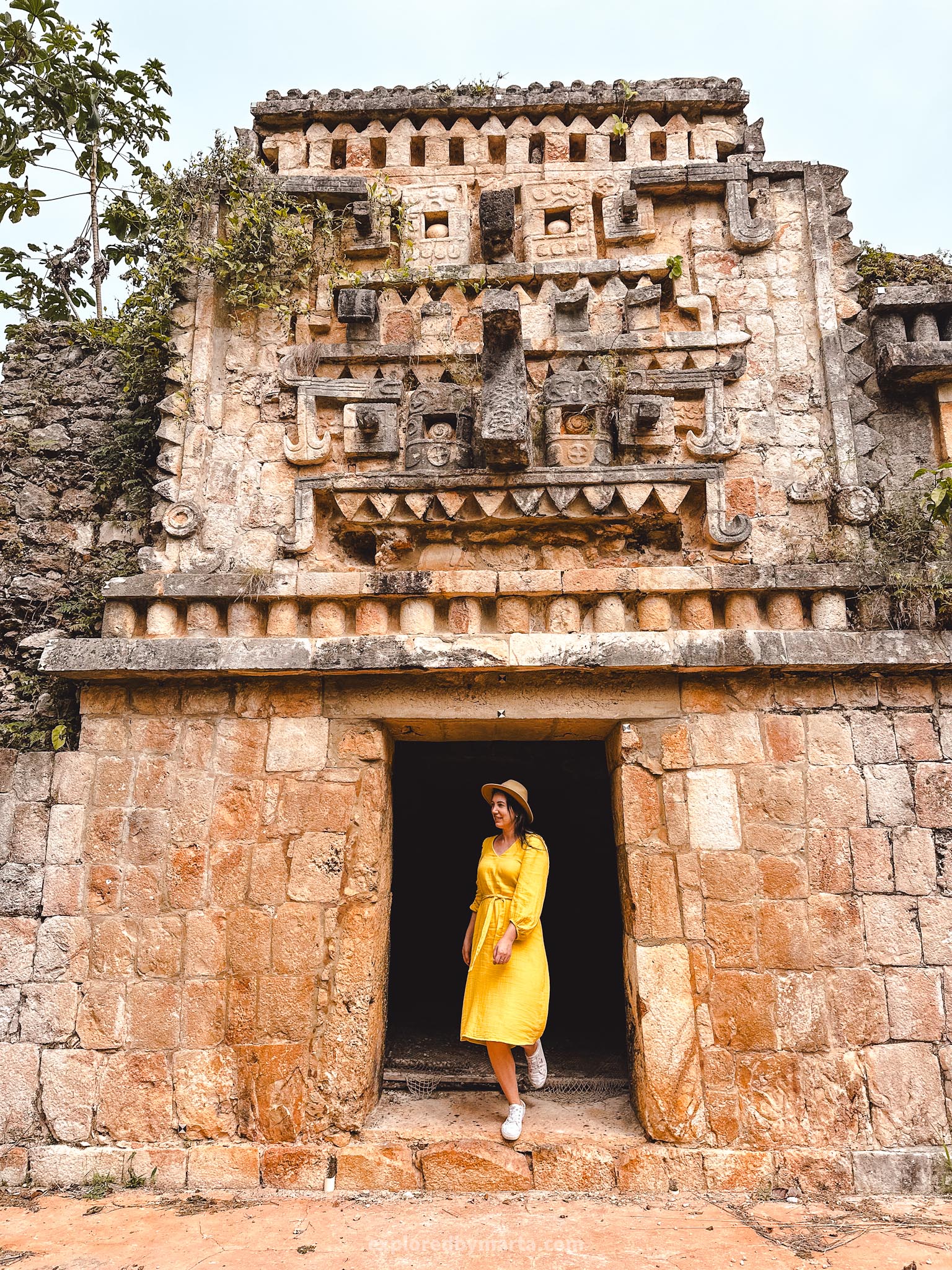
Other archaeological zones along Ruta Puuc include the archaeological zone of Kabah, the archaeological zone of Sayil, the archaeological zone of Xlapak, and the archaeological zone of Labná (my favorite after Uxmal).
If you only have time for one place, then go to Uxmal which is one of the most beautiful places in the Yucatán Peninsula. If you have to skip some of those places, I’d choose Xlapak and Sayil as my least favorite of all.
For more photos and descriptions of the Ruta Puuc archaeological zones, you can go to my blog post about the best Mayan ruins near Merida. It will be essential to arrive early at Uxmal to skip crowds and leave enough time to see the rest of the Mayan ruins.
Location: Uxmal – Kabah – Sayil – Xlapak – Labná
8. Pink flamingos in the wild in Celestún or Río Lagartos
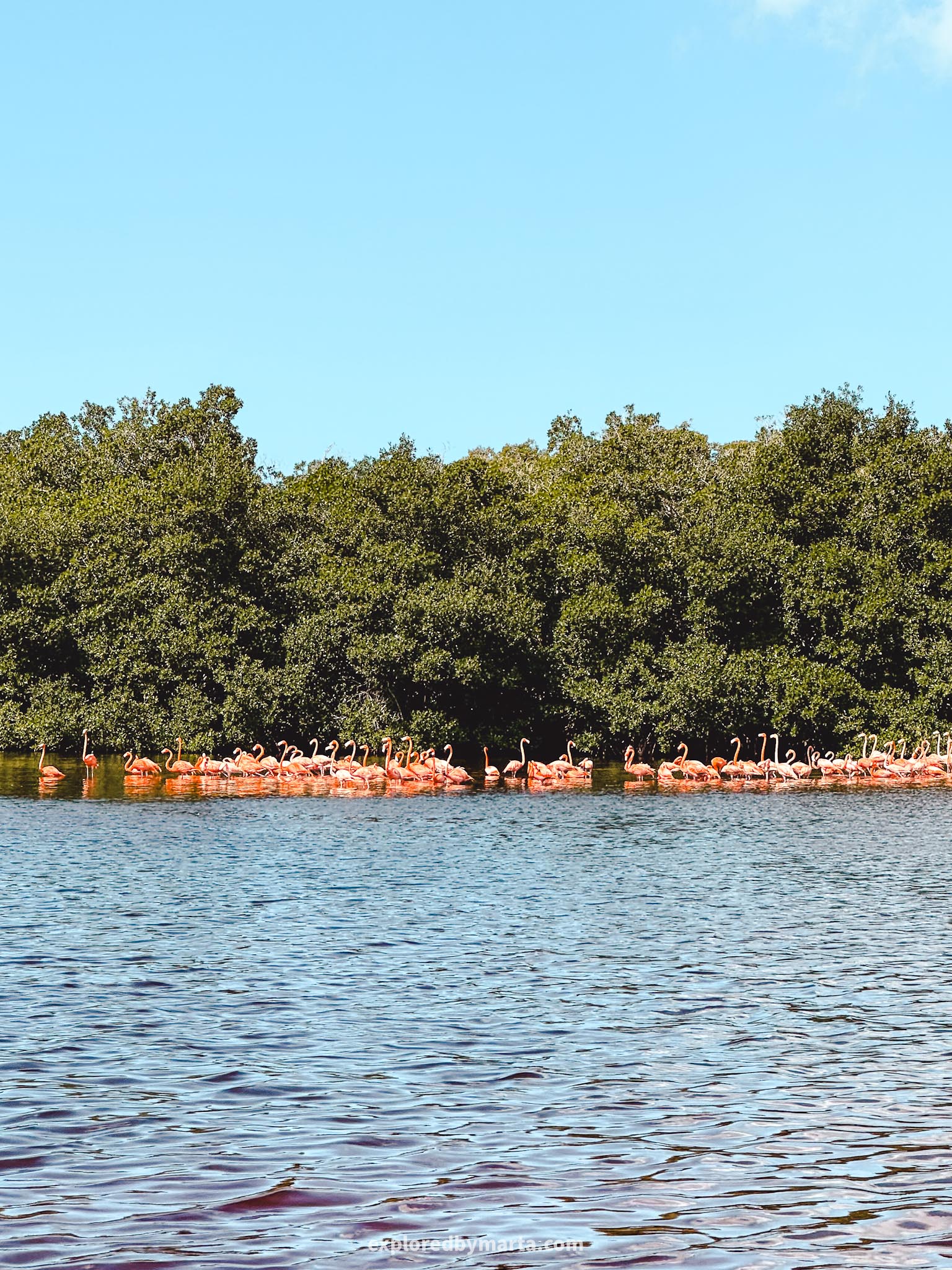
Seeing pink flamingos in the wild is a bucket list thing to do in the Yucatán Peninsula! The main spots to see flamingos in the Yucatán Peninsula are Rio Lagartos just a 1h30min drive from Valladolid and Celestún just 1 hour from Merida.
Flamingos live in Yucatán all year long but the biggest hordes of flamingos you will see from November to February during their mating season. We visited Merida in January so we used this opportunity and traveled to Celestún to see them.
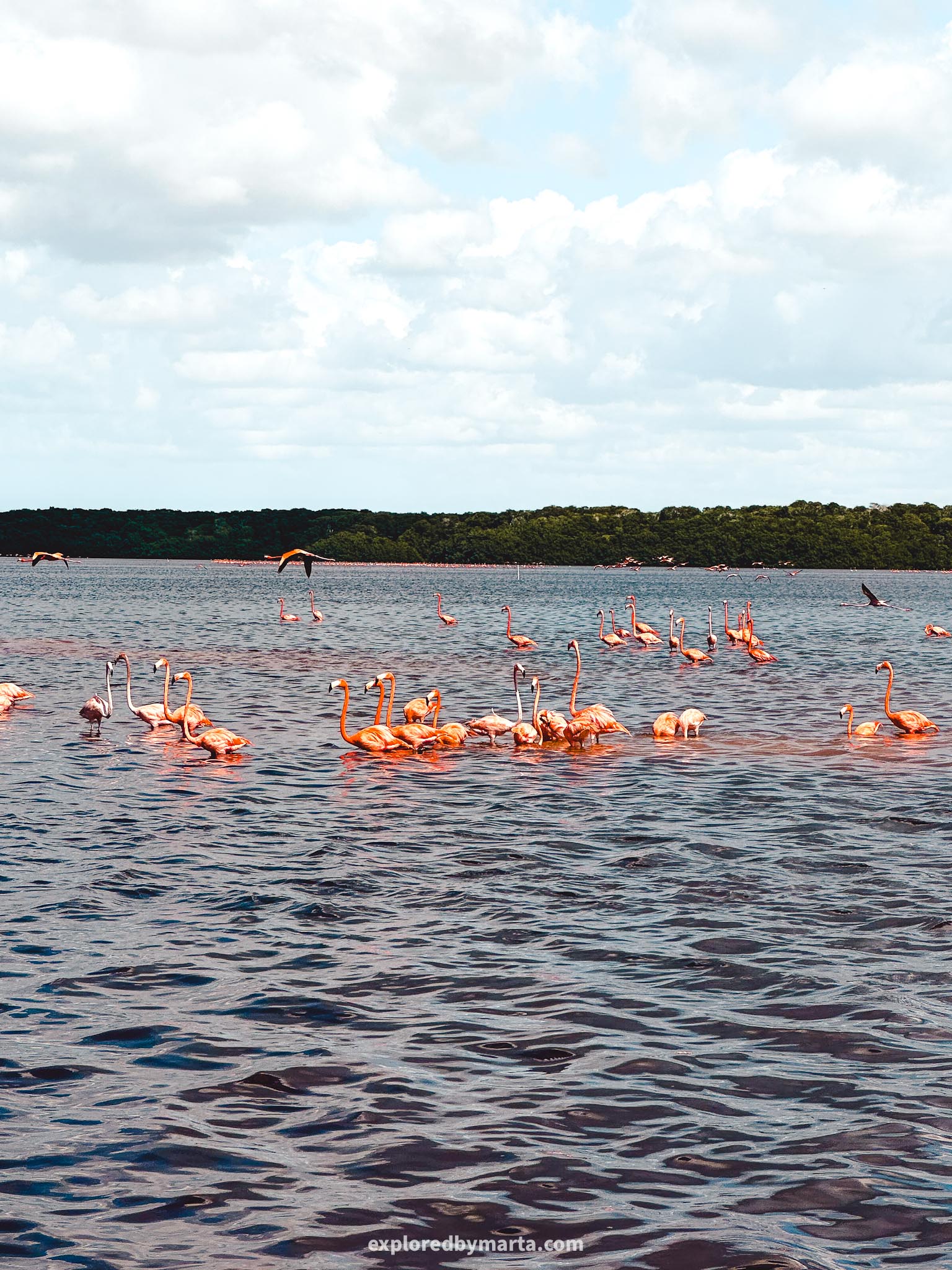
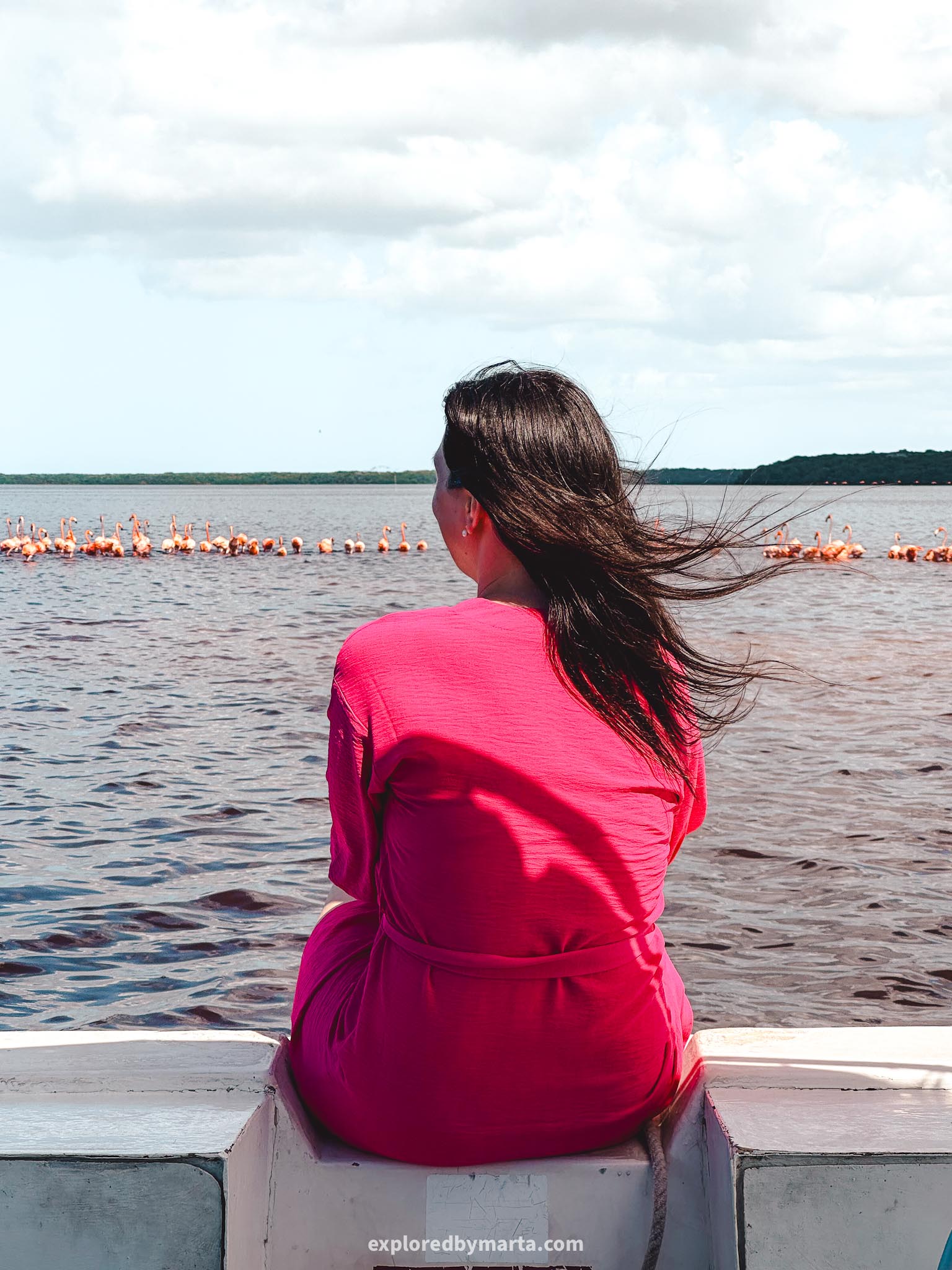
Flamingoes in Celestun live deep in the Ría Celestun Biosphere Reserve so you need a boat to get to see them. For that, you have to drive to Parador Turístico Celestún boat dock where they offer boat tours to see the flamingos.
When we visited, the cost for a small boat was 3000 pesos (~180 USD) and they allowed up to 6 persons on a boat. We wanted to split the cost so we found other tourists to share a boat but you can also go on your own.
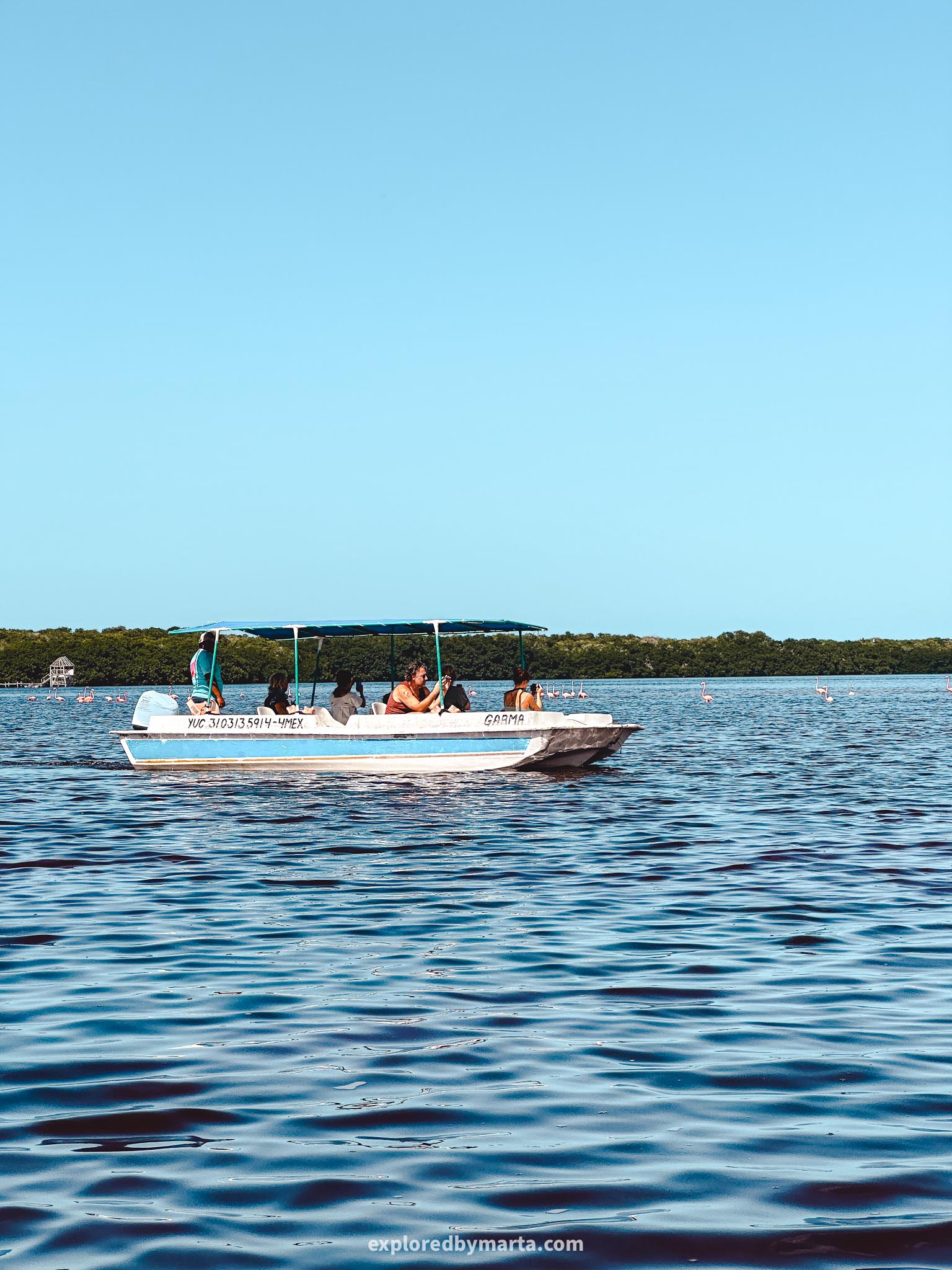

I recommend arriving sometime between 10 AM and 2 PM for the best chances to share a boat with others. We arrived at 12:15 PM and there were quite a few people already so it was easy to find a company. It was cash only!
The boat tour lasts about 1h to 1h 30min. They take you deep into the river and stop the boat near the flamingos. We saw thousands of them! Then they take you through a narrow mangrove tunnel to a beautiful cenote where you can swim.
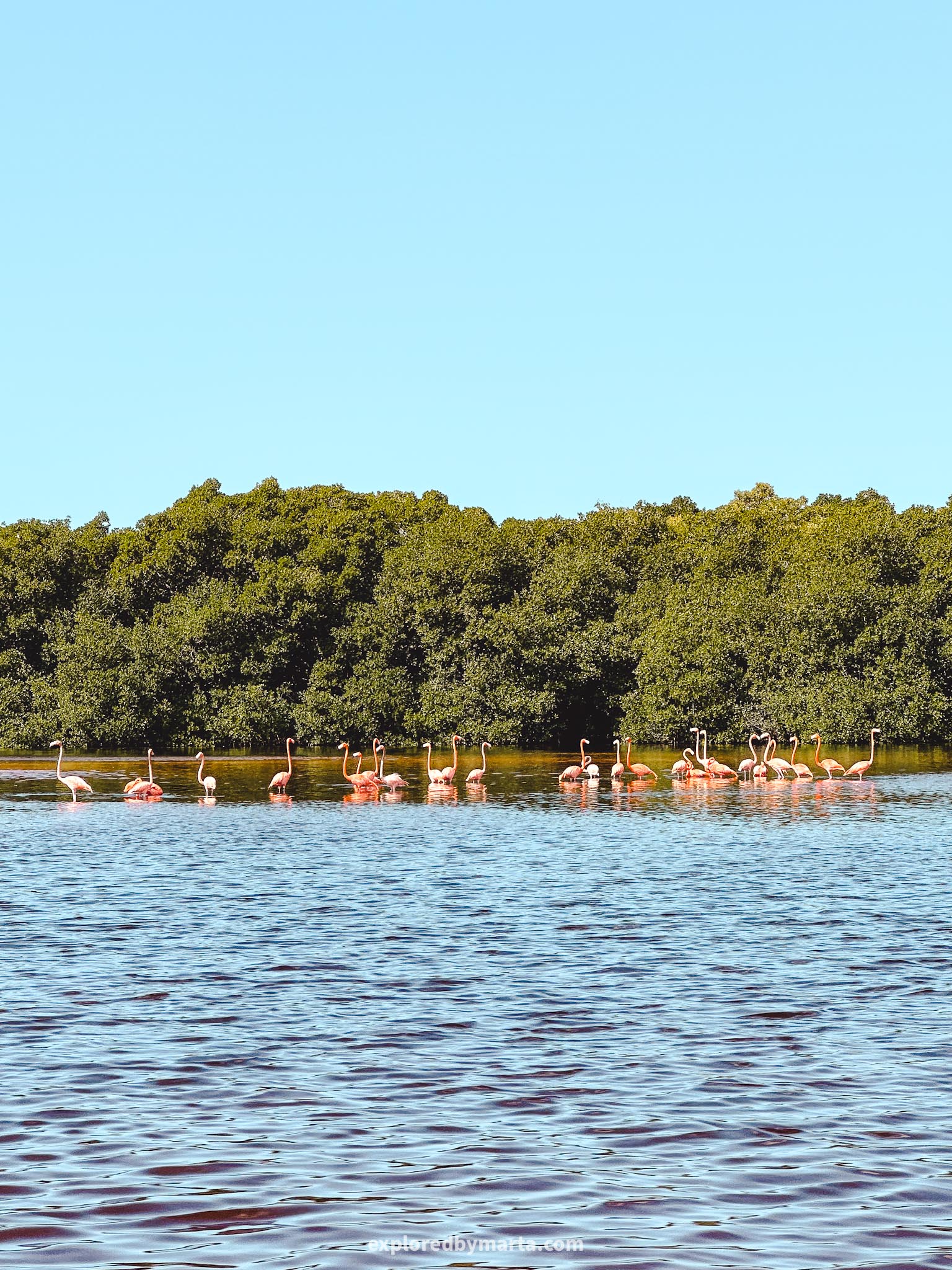
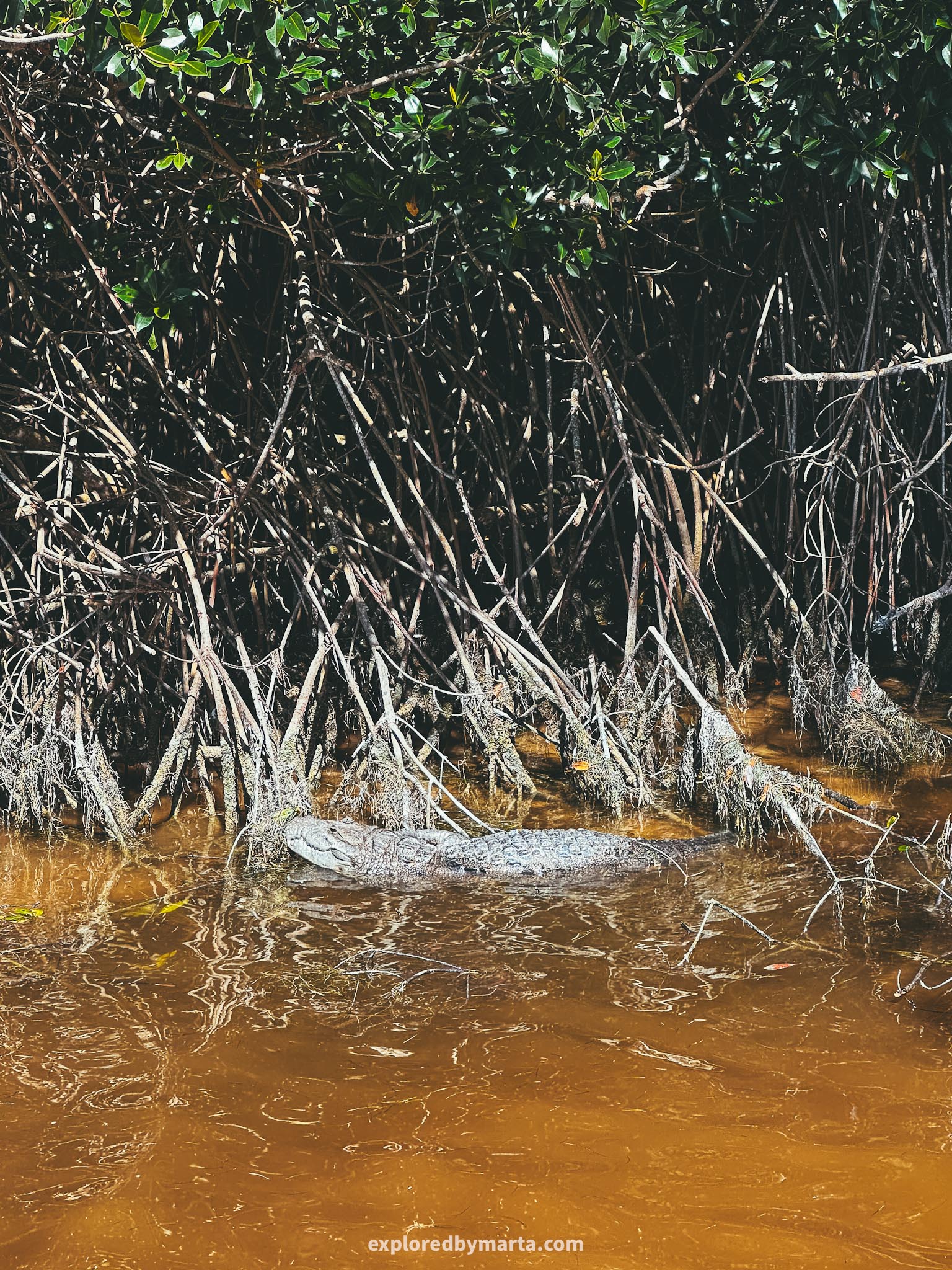
While we were there some of our group went for a swim in the cenote only to find a small crocodile nearby the cenote, haha! Luckily it looked like it already had lunch and wasn’t interested in us at all. This was a fun trip and worth the price!
If you visit Merida, I recommend using this opportunity to travel to see the flamingos in Celestun. However, Río Lagartos tours will be much closer to Valladolid. Just drive there and the boat tour guides will be waiting for you all around the small town!
Tip! Don’t forget to bring cash! Those remote places quite often don’t have ATMs or they are empty! Something between 1500 to 2000 pesos will be enough for a guided tour.
Location: Parador Turístico Celestún – Río Lagartos tours
9. Pink lakes of Las Coloradas

The bright pink salt lakes Las Coloradas is one of the most beautiful places in the Yucatán Peninsula! The lakes are one of the most popular day trips from Valladolid located just a 2-hour drive from the city! And it’s a great place for unique photos!
However, visiting this place is also a bit of a game of luck. Before coming here I studied all the reviews on Google Maps and felt really conflicted. It is a decent drive and to go there and to not get what I wanted would be a disappointment.
But we decided to go and somehow managed to arrive here on the perfect day with the best weather conditions (we visited on February 4th). It was sunny, no clouds, and the lake was screaming pink color at us! So what is the best time to come here?
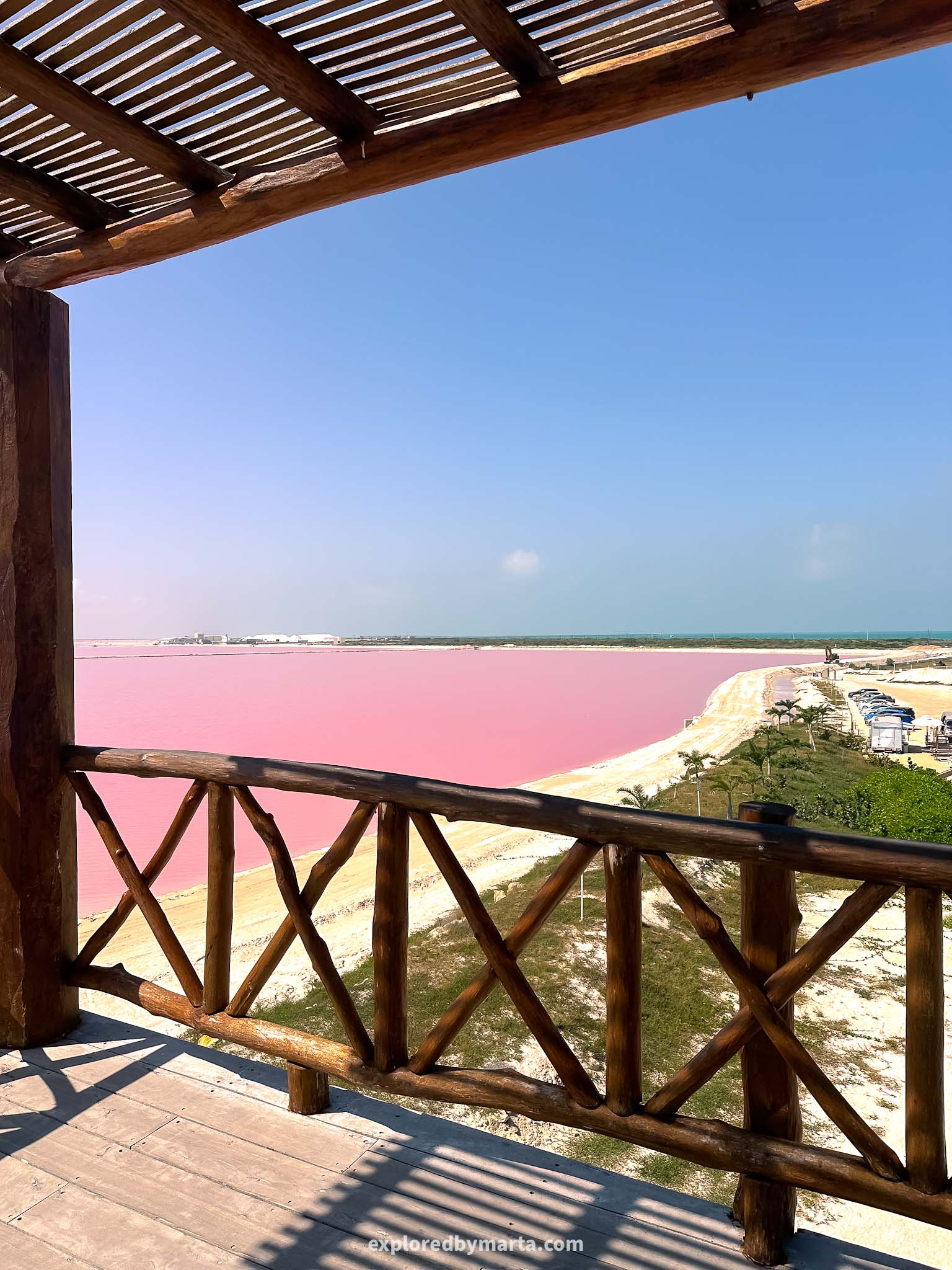
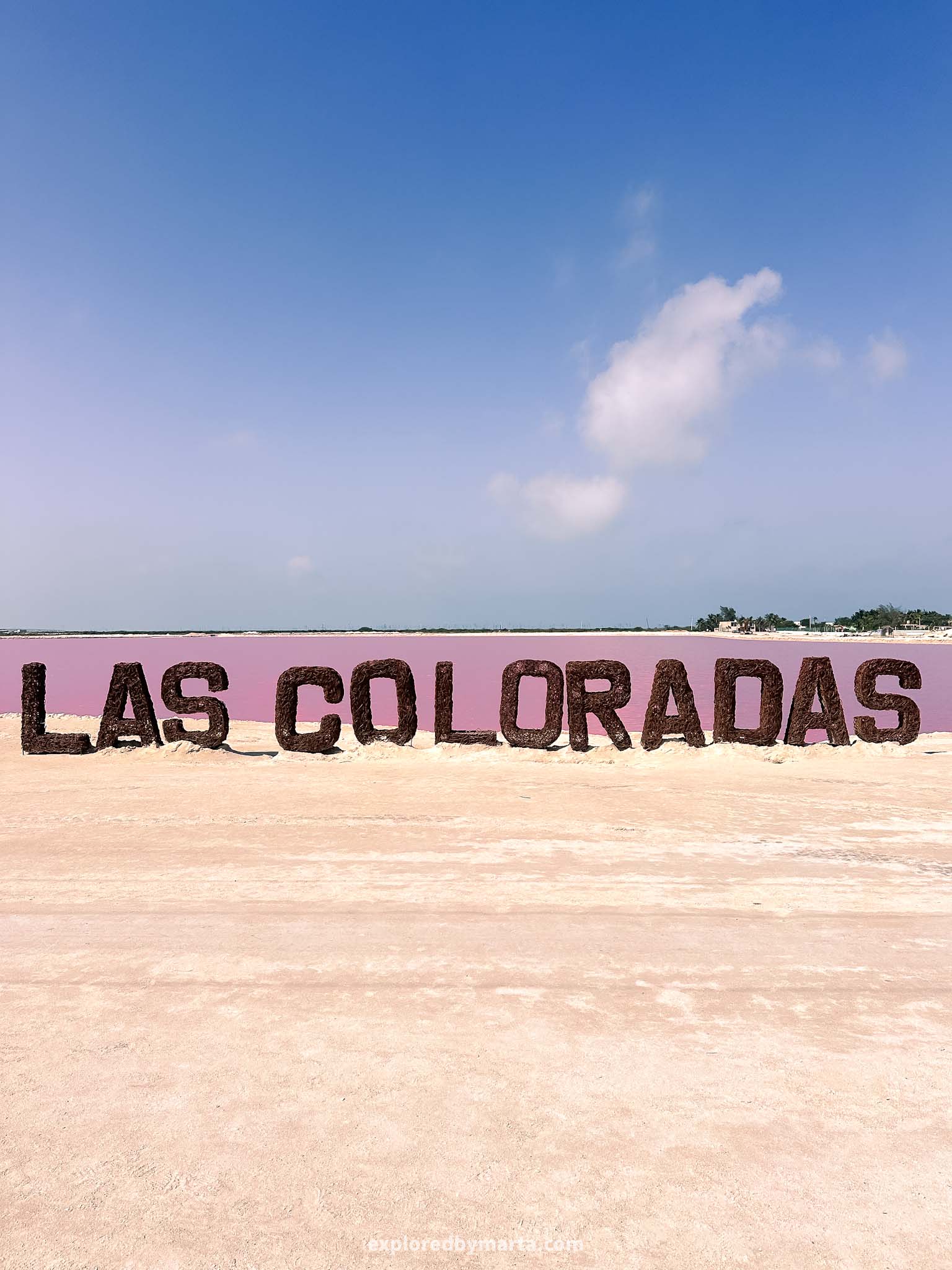
The lakes won’t be pink if there was a storm or a lot of rain over the previous days, you will see a bright pink color only on sunny days (no clouds) and the best angle of the sun will be around midday. And a little bit of wind will make the color pop!
So how to get there? The right place to go is marked on Google Maps as Las Coloradas Parque Turistico. There you will find the ticket office, the observation tower, and the entrance to the pink salt lagoons.
Shortly before arriving, we were met with a group of guides who stopped us and one of them took us to the ticket office. Don’t be scared of them, haha! You can’t visit the lagoons on your own so you need one of those guides anyways!
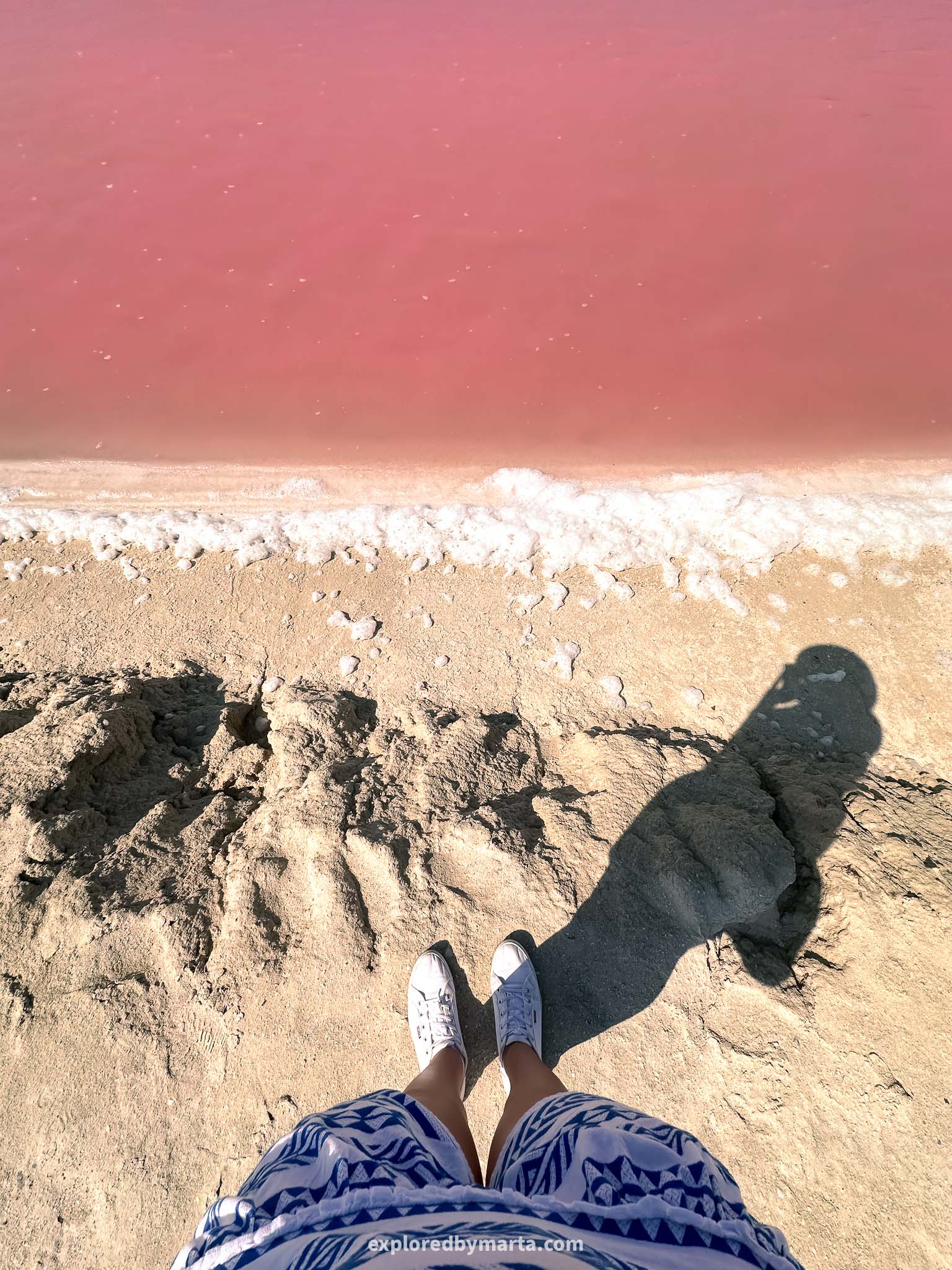
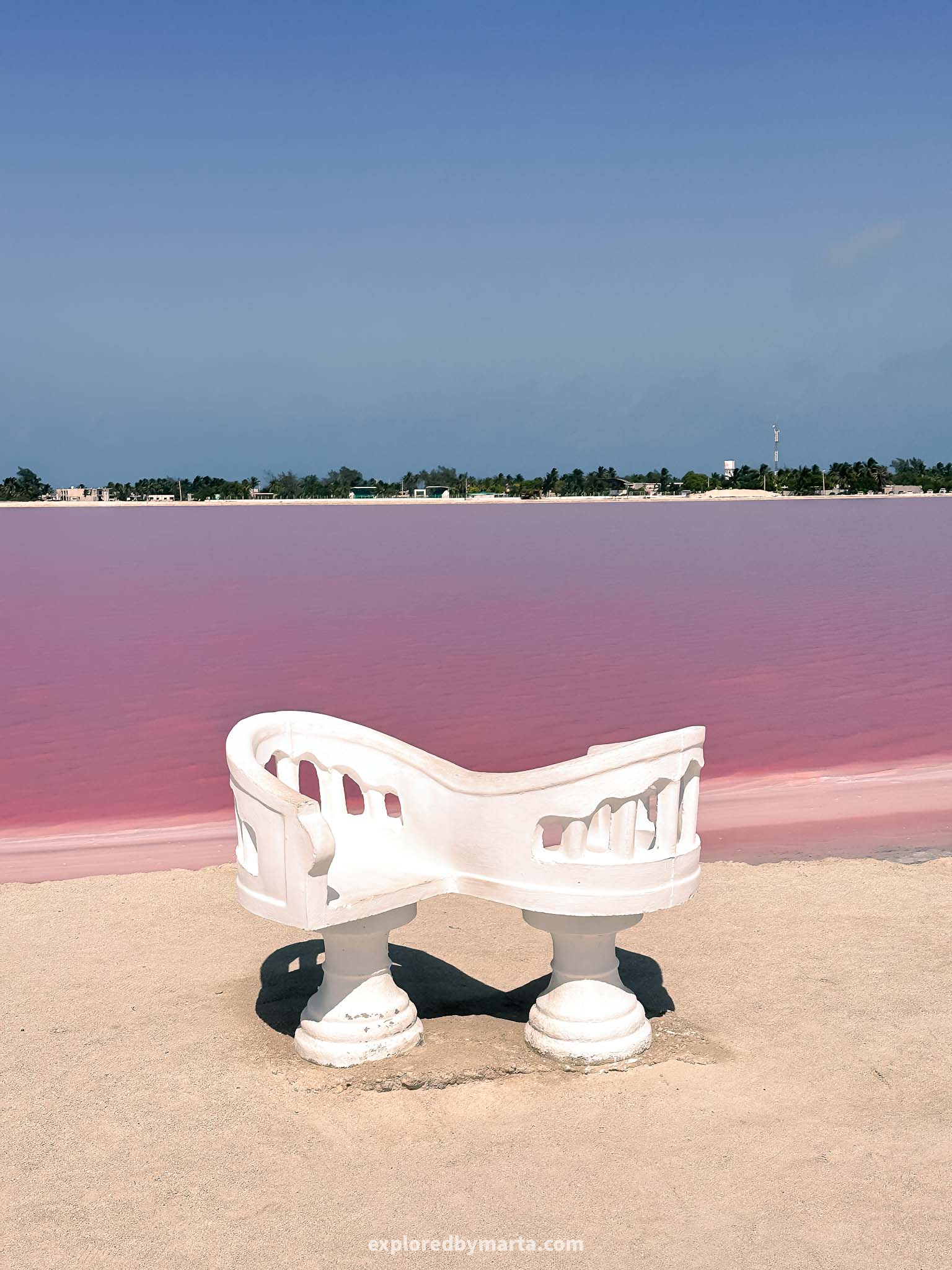
After meeting your guide, you will then have to drive to the ticket office and pay for the entrance. There are three options – you can do a walking tour, you can do a bicycle tour, or a safari tour by car. All have different prices and lengths.
We chose the cheapest option (~350 pesos per person) and went on a walking tour with the same guide that picked us. At first, we climbed the observation tower and then walked by a road along the pink lake. The tour lasts about 45 minutes.
While the guide tells you stories about the place, you are allowed to take as many pictures as you like. There are different photo spots along the way. But you are not allowed to touch the water or swim there.
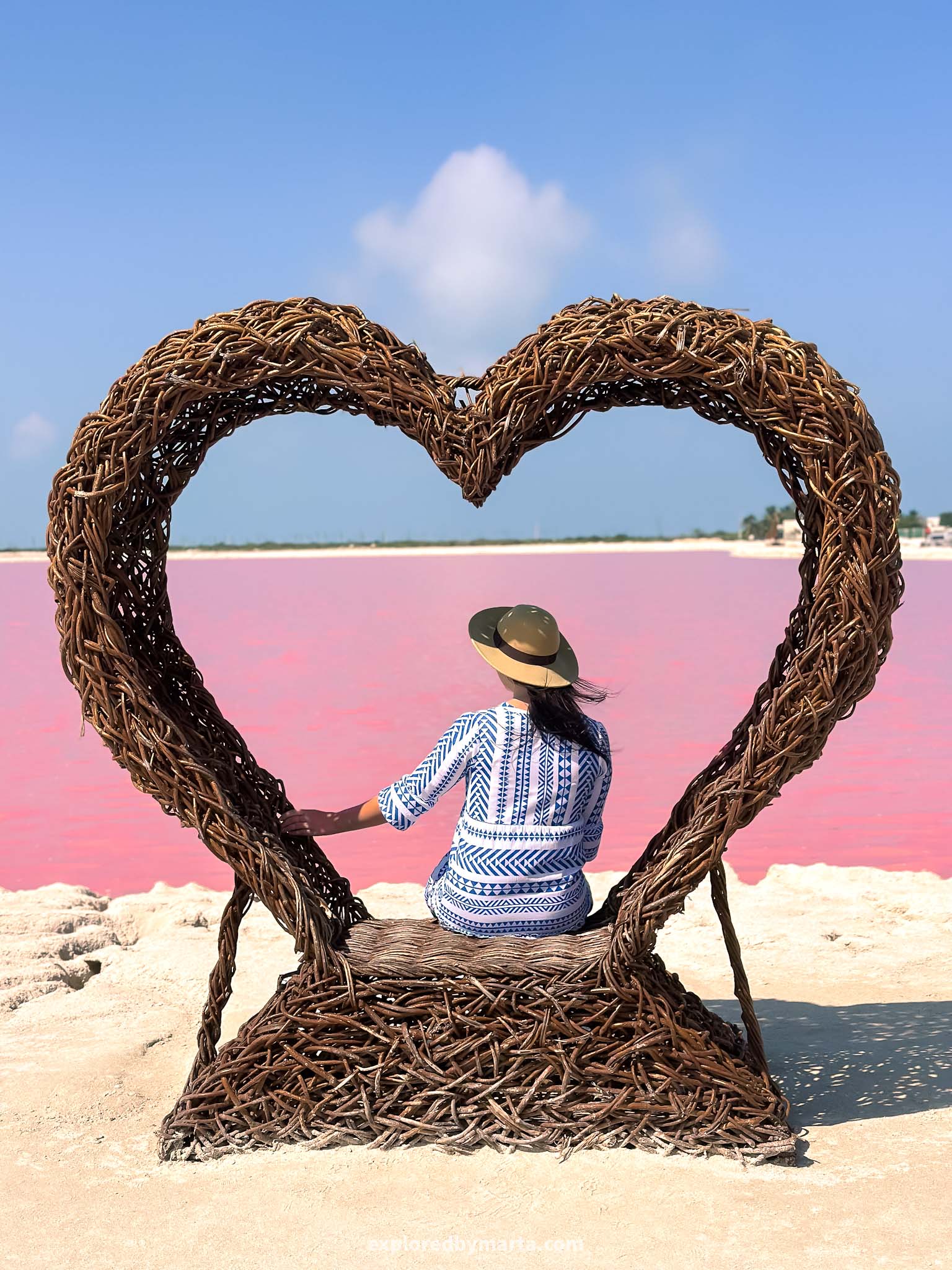
After the tour, the guide asked for a tip which is meant as payment for his service. Overall we really liked visiting Las Coloradas. However, I highly recommend checking out the latest reviews on Google Maps before you come!
Take into account that they usually harvest salt here around late July to August and the pink color is less visible. The guide also told us that after one hurricane the lake lost its pink color for a whole year so better make sure it’s worth coming!
You should also know that the lake is not natural. It is a pink pond owned by a large company that produces salt and you can’t see much of it unless you pay for the guided visit. Yes, it is very commercialized but I definitely wasn’t disappointed.
Location: Las Coloradas
10. Yucatan’s hidden gem – Cenote Choj Ha
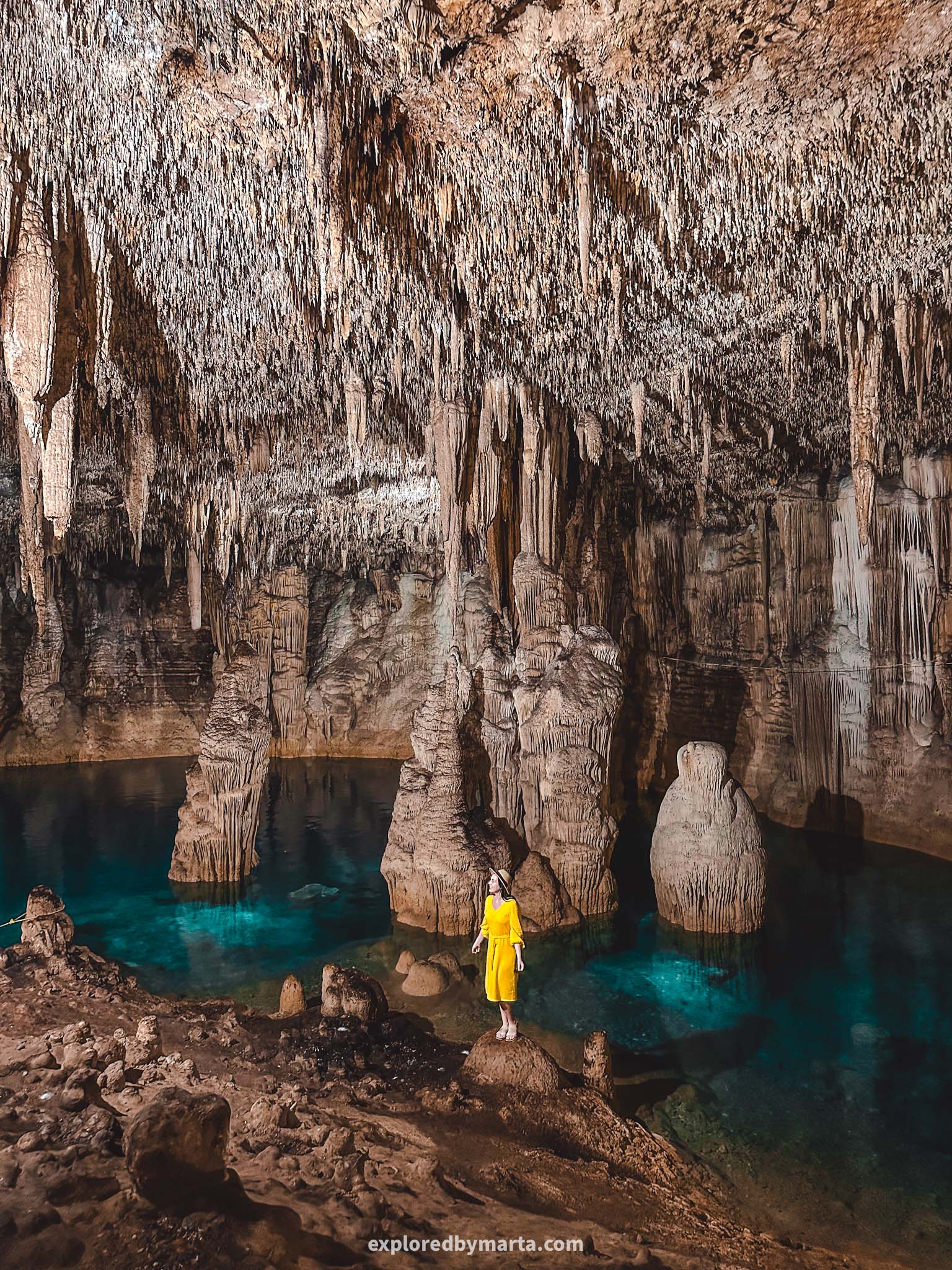
Want to see a real hidden gem? Get a car and drive to Cenote Choj Ha – a magical place hidden deep in the jungle about a 1-hour drive from Valladolid. This truly is one of the most beautiful places I have visited in the Yucatán Peninsula, Mexico!
Imagine randomly walking around the jungle and finding a small hole in the ground… Once you enter that small hole you are met with a magical discovery – an underground cave in the size of a cathedral!

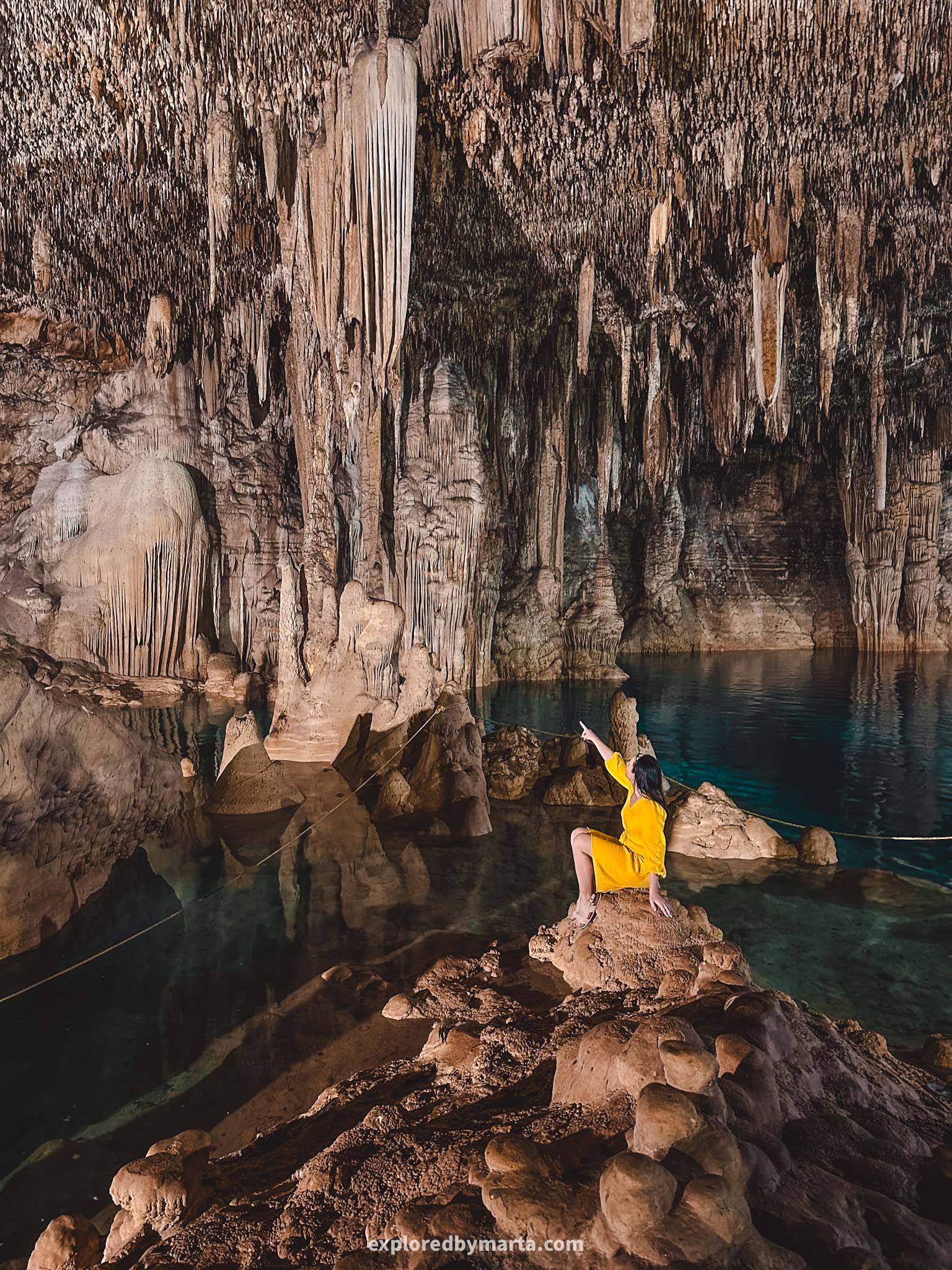
The cave is filled with long sharp icicles – stalactites – and bulky short poles – stalagmites – all floating in and above crystal-clear water. We have visited many cenotes with stalagmites and stalactites but not one cenote could compete with this place!
It was truly hard to believe our eyes when we entered the cave. Once you realize that all this beauty has been silently sitting down here for, probably, tens of thousands or hundreds of thousands of years, it really blows your mind.
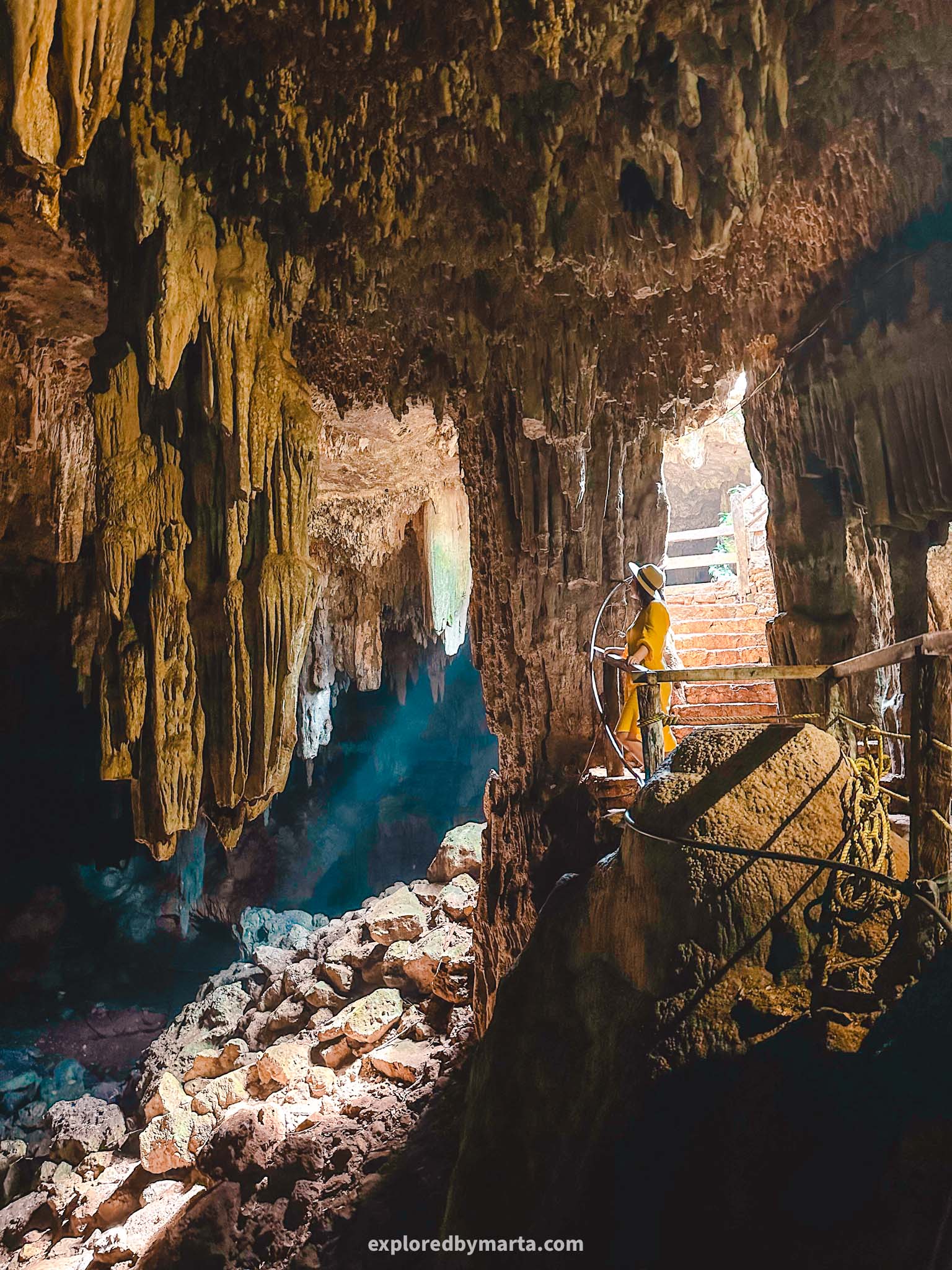
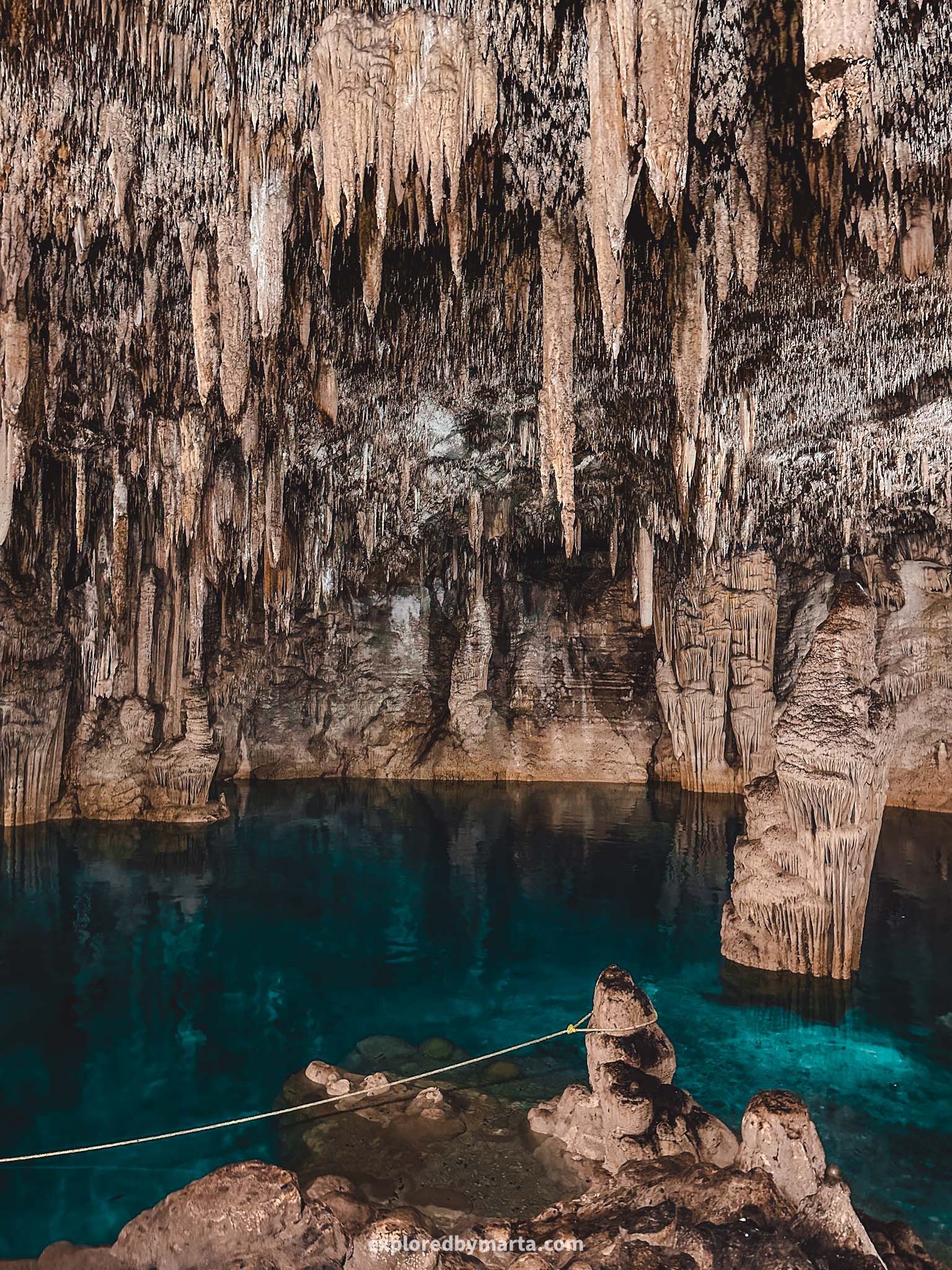
Cenote Choj Ha is relatively unknown and is a true hidden gem. We paid 150 pesos each for the entrance and there were only a few people around but the cave is so big you don’t even notice other people. But bats are there, yes.
Because we travel so much I am quite often hard to impress but then there are times I lack words to describe how incredible something is. This cenote is the latter of those two situations. Truly an incredible place!
Location: Cenote Choj Ha
11. Convento de Santo Domingo in Uayma
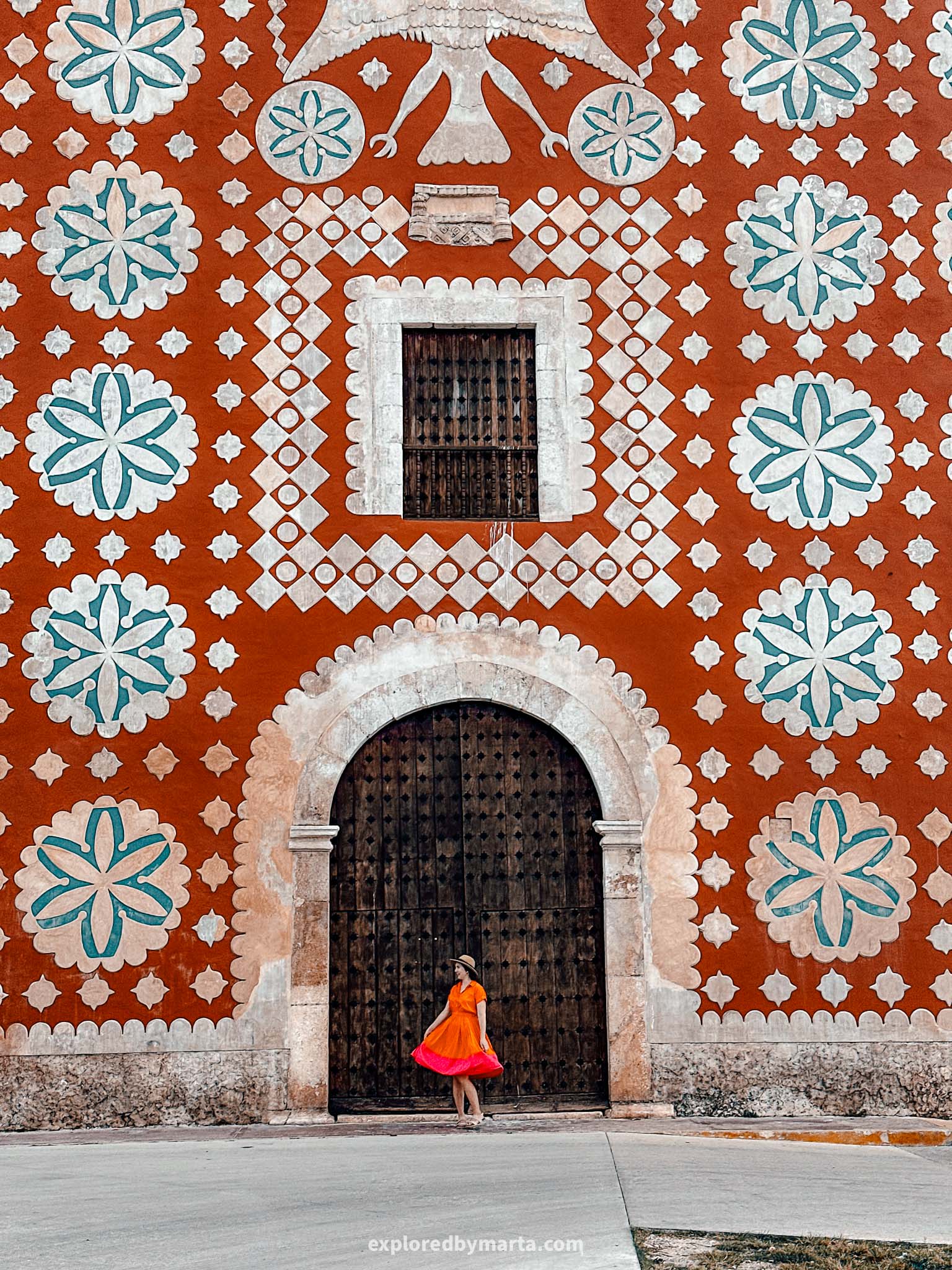
Another unique place off the beaten path in Yucatan is Convento de Santo Domingo in the town of Uayma just a 20-minute drive from Valladolid! It is one of my favorite hidden gems and a picture-perfect place not many people know of.
The beautiful Convento de Santo Domingo is a former convent built by the Franciscans in the middle of the 17th century. It was built by using stones from Mayan sites, including from the nearby Chichén Itzá.


During the second half of the 19th century, the church was burned down during a Mayan rebellion. Only more than 100 years later the roofless church was finally restored and was officially reopened to the public in 2004.
The captivating building stands out with its unusual decorations – the white roses and stars symbolize the veneration of the Virgin Mary but the red color represents sacrifice and martyrdom. There is also a green color that symbolizes hope.

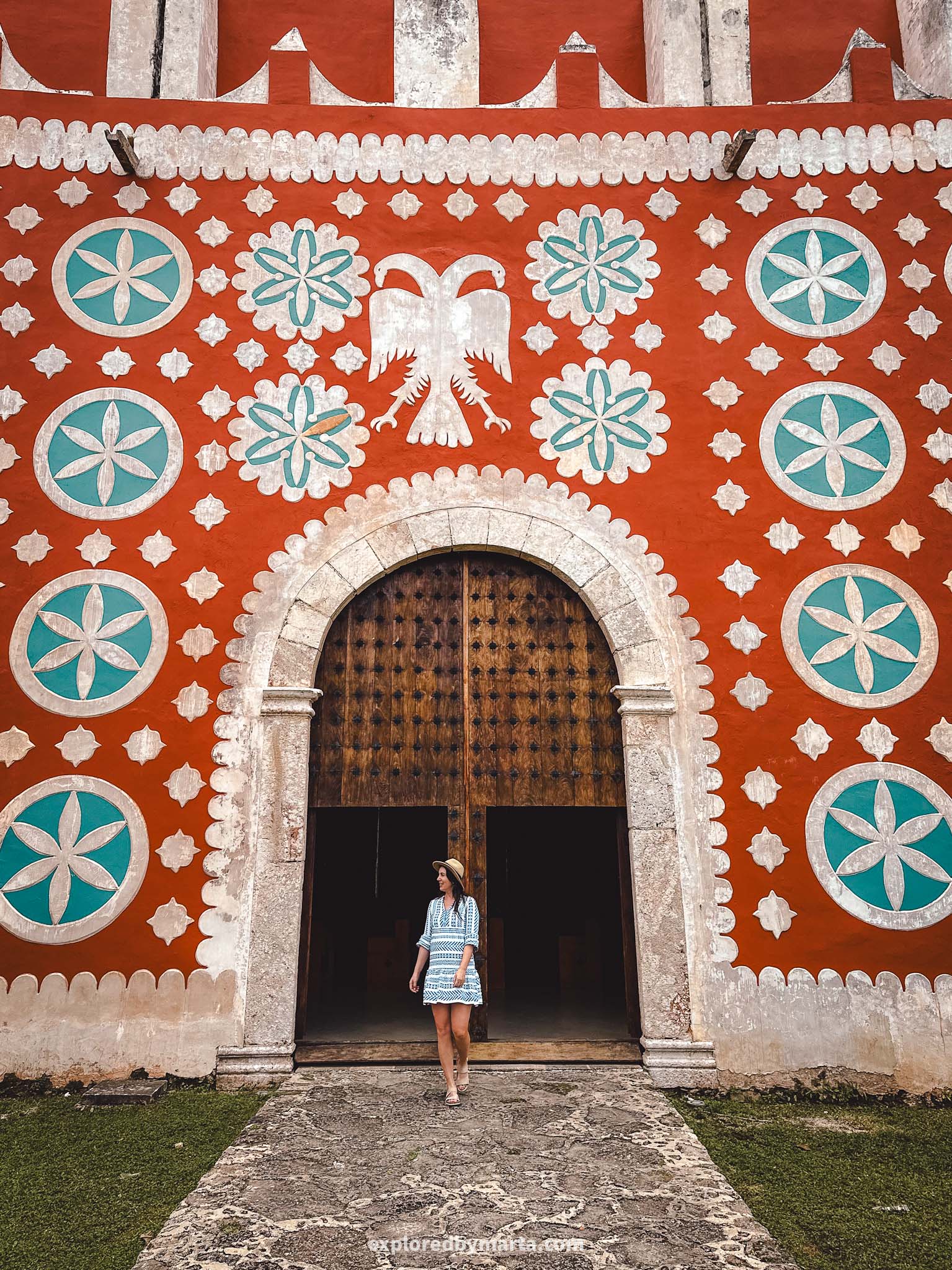
The front of the Uayma church also depicts a large headless eagle which is a symbol of the Franciscans who built the church. Over the last few years, this church has become a unique landmark in the Yucatán Peninsula thanks to its colors and symbols.
We visited this church on Saturday while on a weekend trip near Valladolid. At 11 AM it was open and we could enter the inside of the church for donations. By the way, the entrance is from a sidestreet – Calle 21. The interior was beautiful but not as bright.
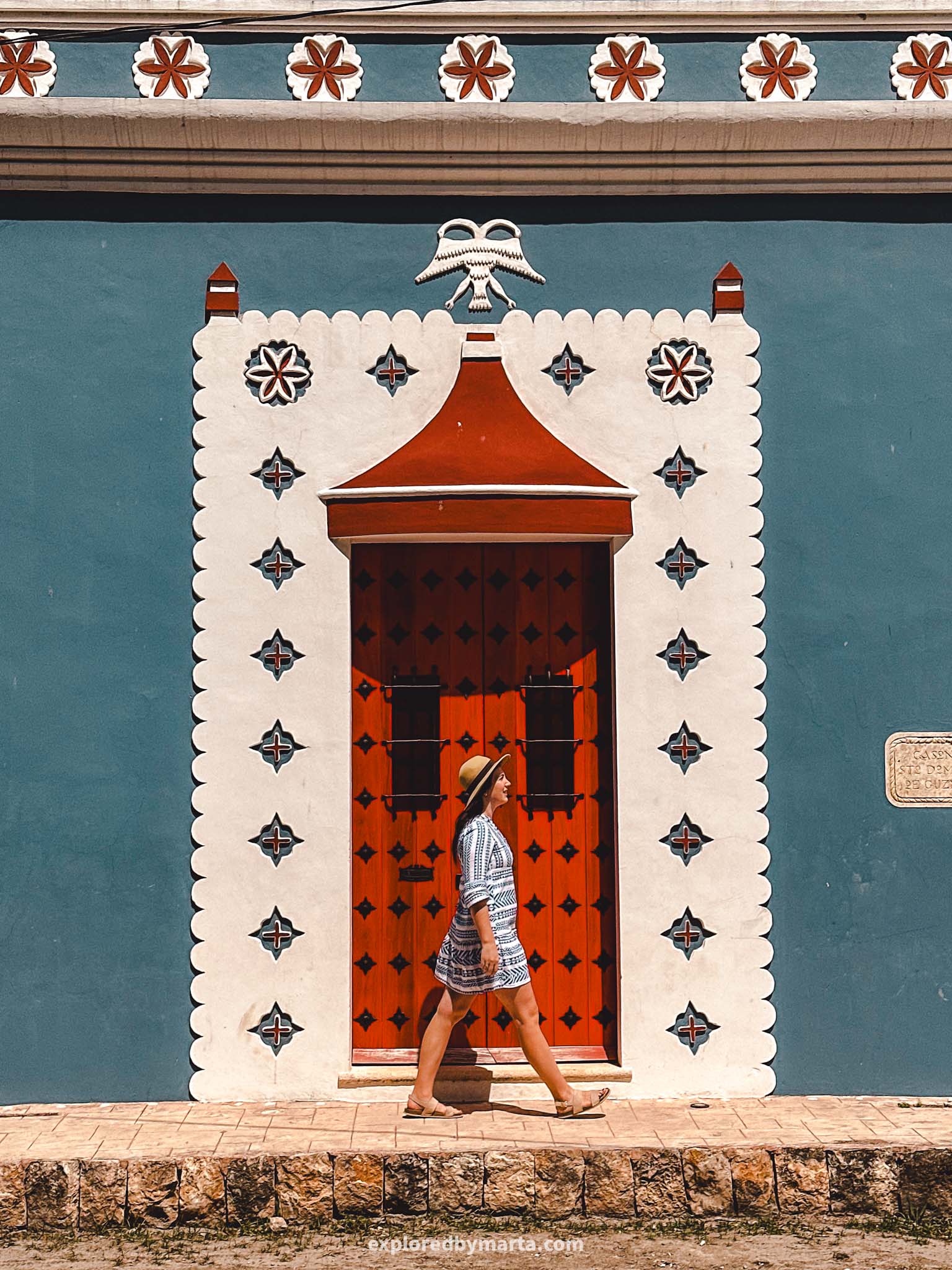

We also noticed another building on the corner of the Park of Uayma which was decorated with unique illustrations. Interestingly, we saw illustrations exactly like these in the old photos inside the convent. Could be another renovated historical building.
Overall there isn’t much to see in Uayma so don’t plan to spend the whole day here. I think we spent about 2 hours here taking photos and exploring the inside of the church as well as walking around the central park next to the church.
Location: Iglesia de Uayma
12. Coba Archaeological Zone
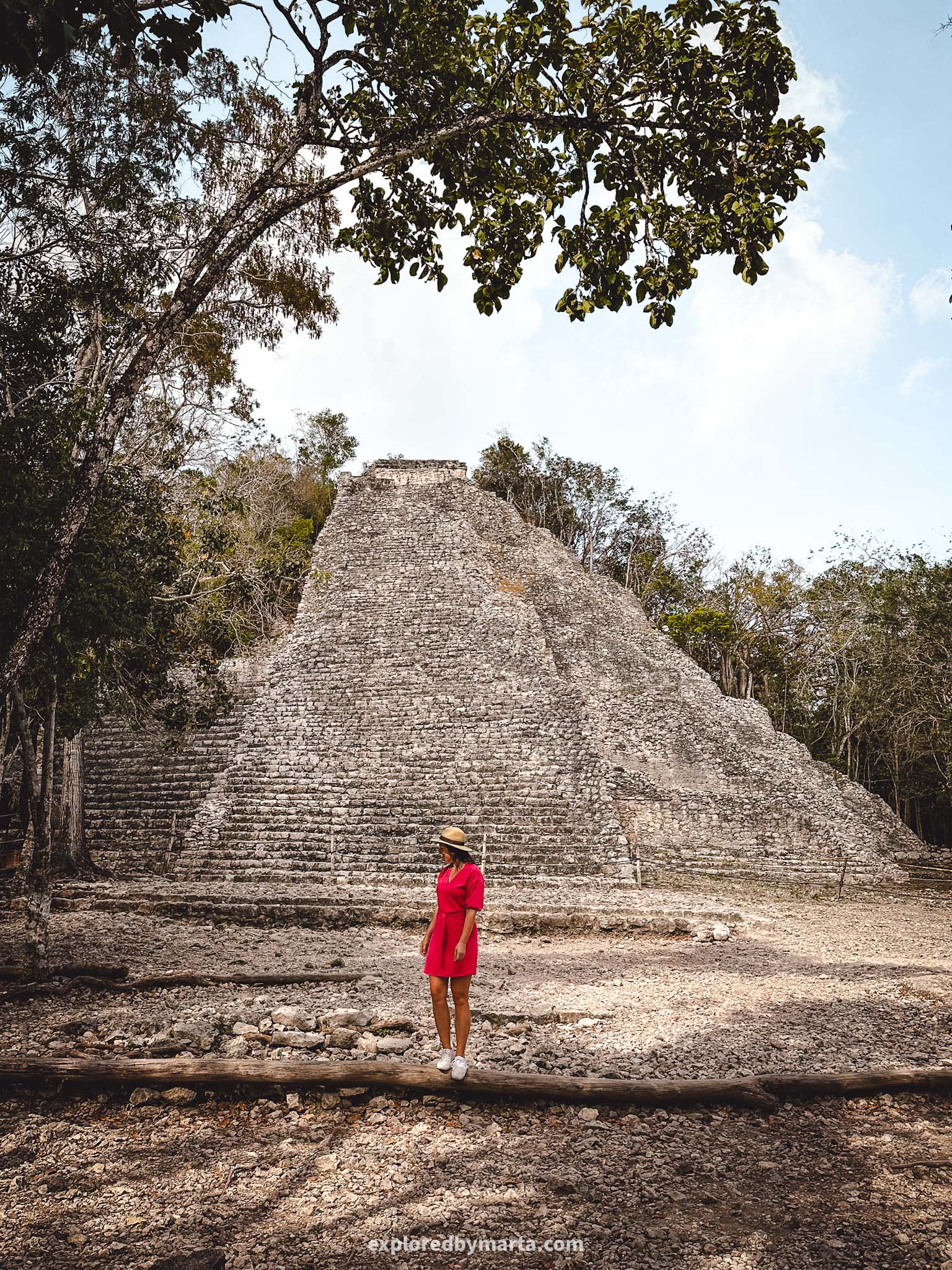

There are some more majestic Mayan ruins near Valladolid – Coba Archaeological Zone. The Mayan ruins are located just a 50-minute drive from the city and make for a fantastic day trip from Valladolid to the ancient city in the jungle!
Coba ruins once were one of the most important ancient Mayan cities in the area. The archaeological site boasts multiple stone pyramids, temples, and other important structures. Those iconic pyramids are the best photo spots around here!
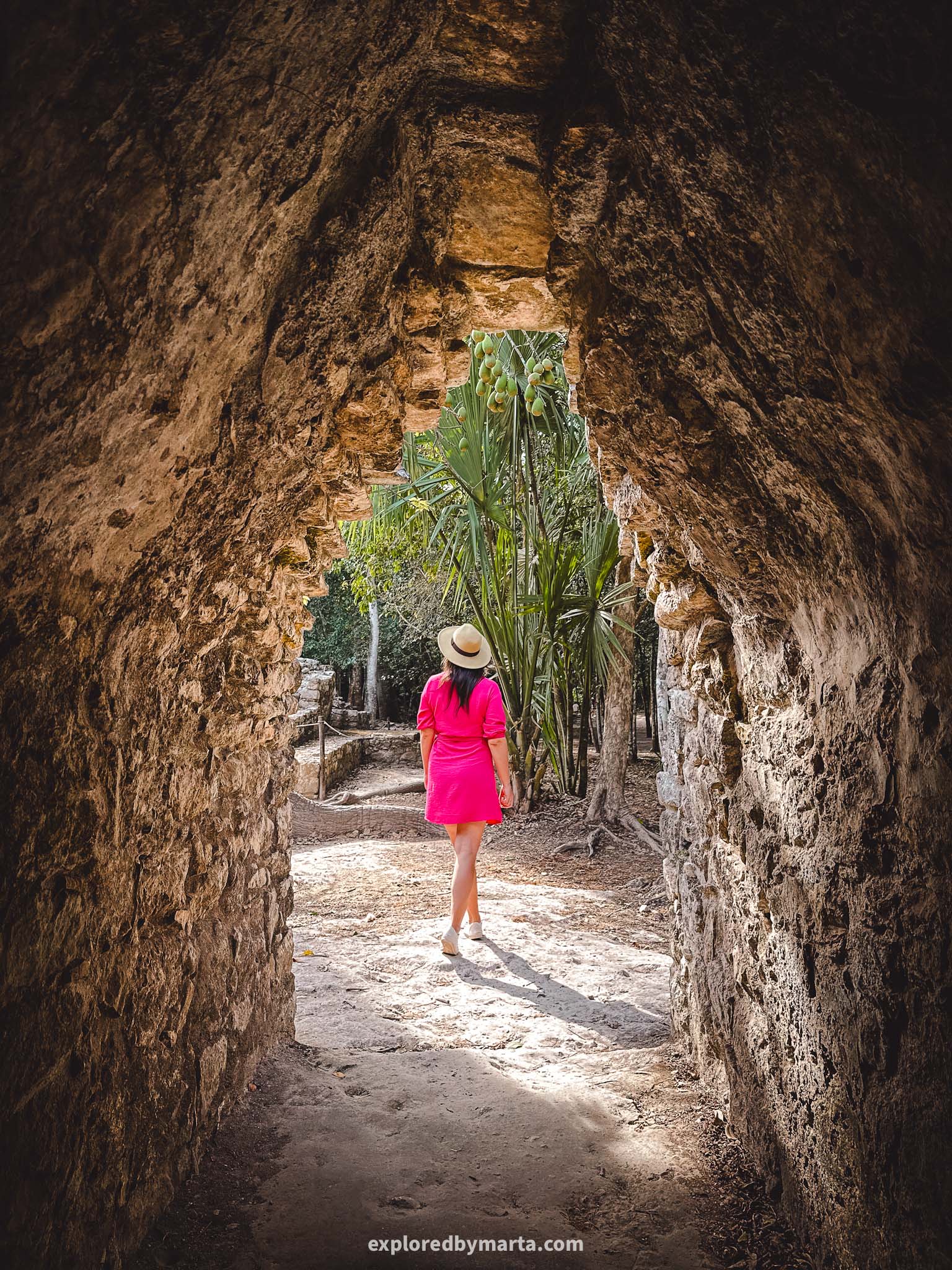

Entrance to the site is paid in different parts – parking and two different entrance fees, so don’t forget to bring some cash with you. All the buildings are pretty much scattered around the jungle so you can rent a bike there (we walked, it was ~5 kilometers).
One of the most impressive buildings is the temple pyramid Nohoch Mul. At 42 meters (137 feet) it is one of the highest Mayan structures in the Yucatán Peninsula. Only Calakmul in the State of Campeche is higher than the Coba pyramid.
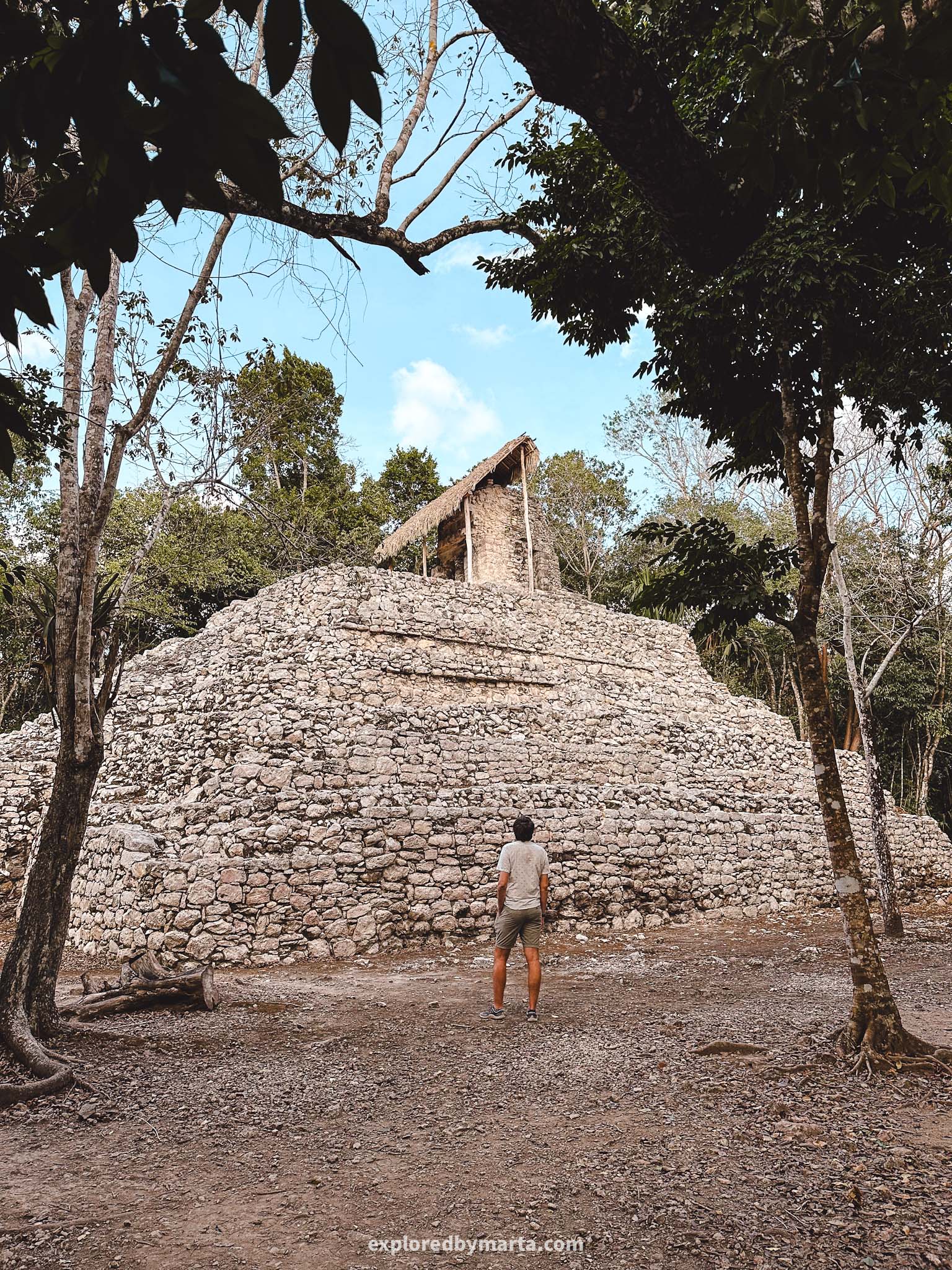
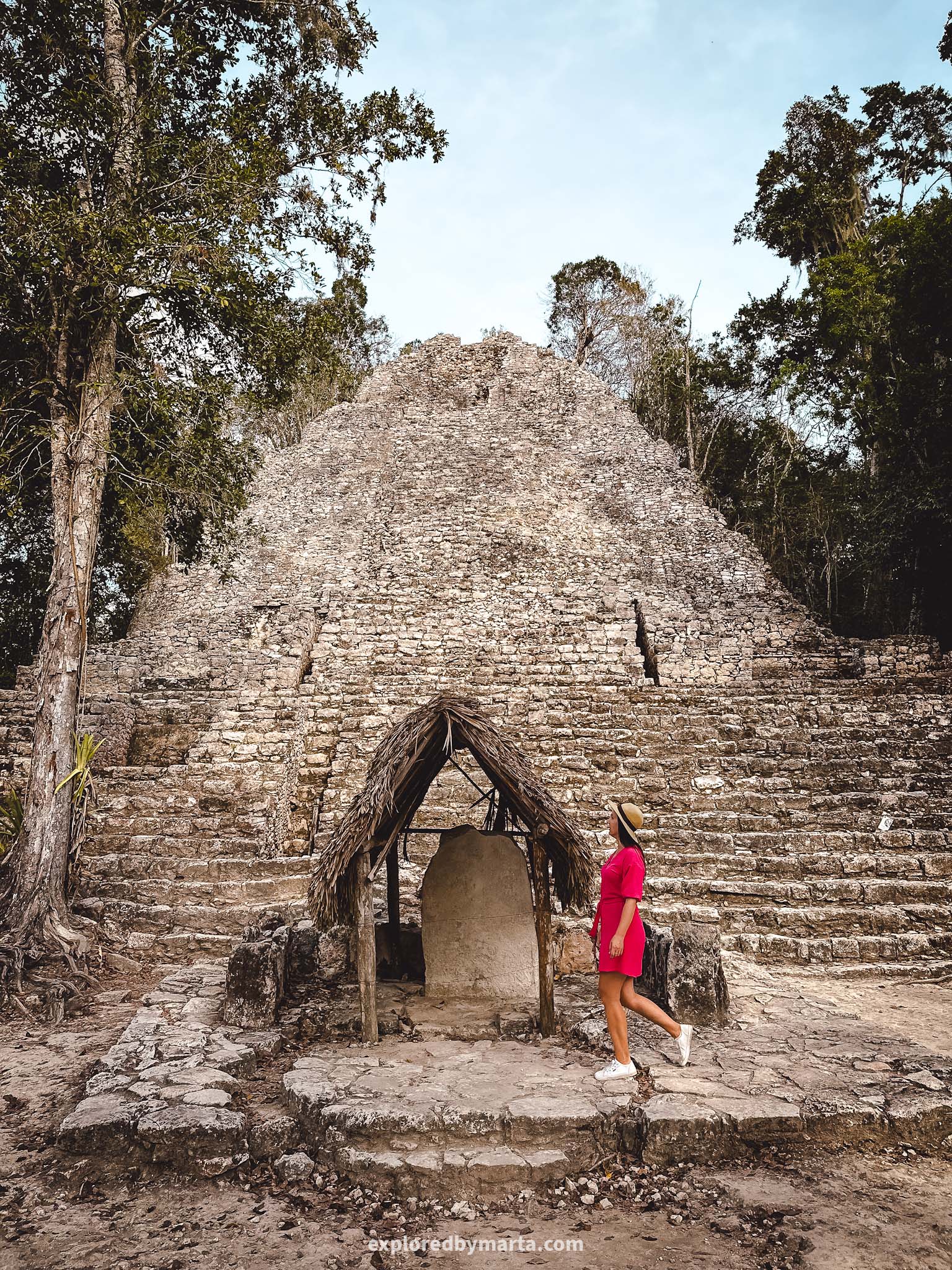
Most of the structures in Coba date back to the 7th-10th centuries. Coba once was a large center of the Mayan civilization reaching 50 thousand inhabitants but was already abandoned by the 16th century during the Spanish conquest.
A couple of years ago it was possible to climb the pyramid in Coba, but not anymore. Nevertheless, the place still has its charm and I wasn’t too sad about it. It was fun walking the narrow paths through the jungle and finding Mayan ruins along the way!
Location: Coba Archaeological Zone – Parking lot
13. AZULIK City of Arts – SFER IK Uh May
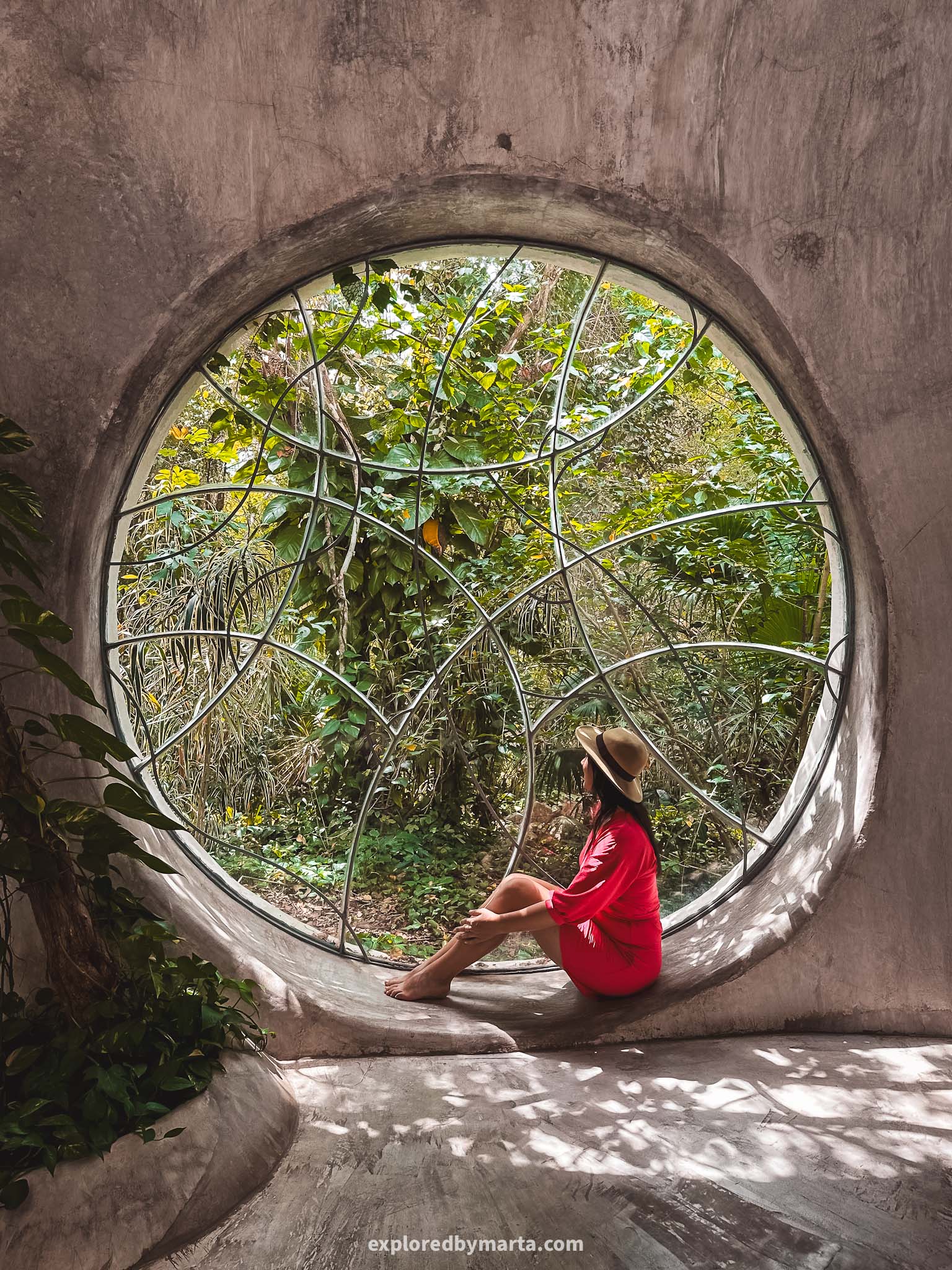
If you travel to Coba ruins, there is another place nearby worth visiting – AZULIK City of Arts! It is an out-of-this-world artisanal creation that takes you on a journey through never-seen-before spaces. In simpler words, it is a contemporary art museum.
When I first entered this place my first thoughts were about the The Lord of The Rings movie where elves lived in those otherworldly places. It was hard to fathom how they built and how they even came up with all of that!
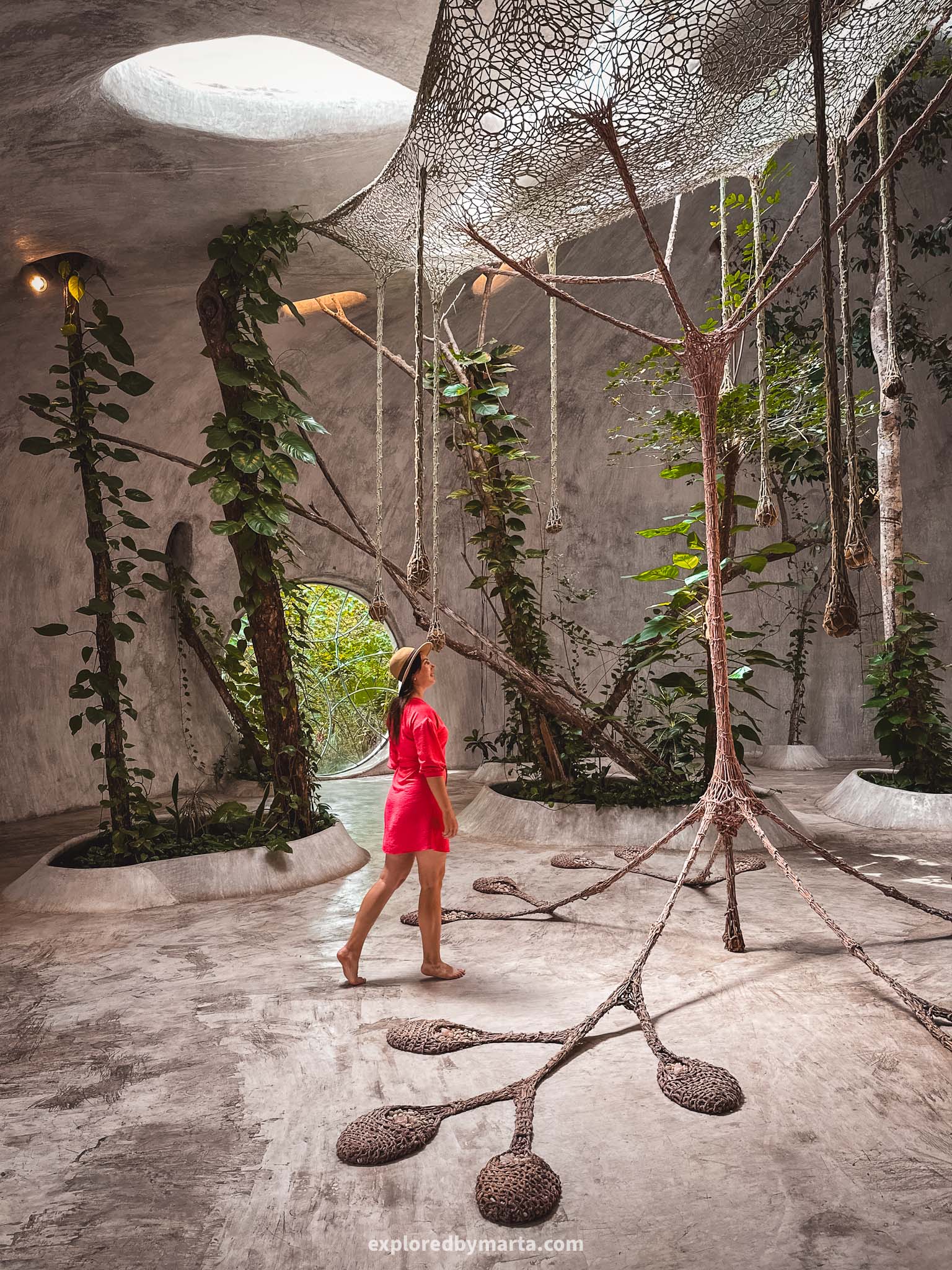

First, they took us by a wooden bridge to the entrance, performed some kind of ritual, and then asked us to take off our shoes. You can only walk around barefoot there. Then they let us enter the building. Only phone cameras are allowed in.
The City of Arts is a massive building all connected in one space – there are wooden pathways built to explore the upper side of the building and then lead you down to the floor. The ground level is connected with other rooms and spaces.
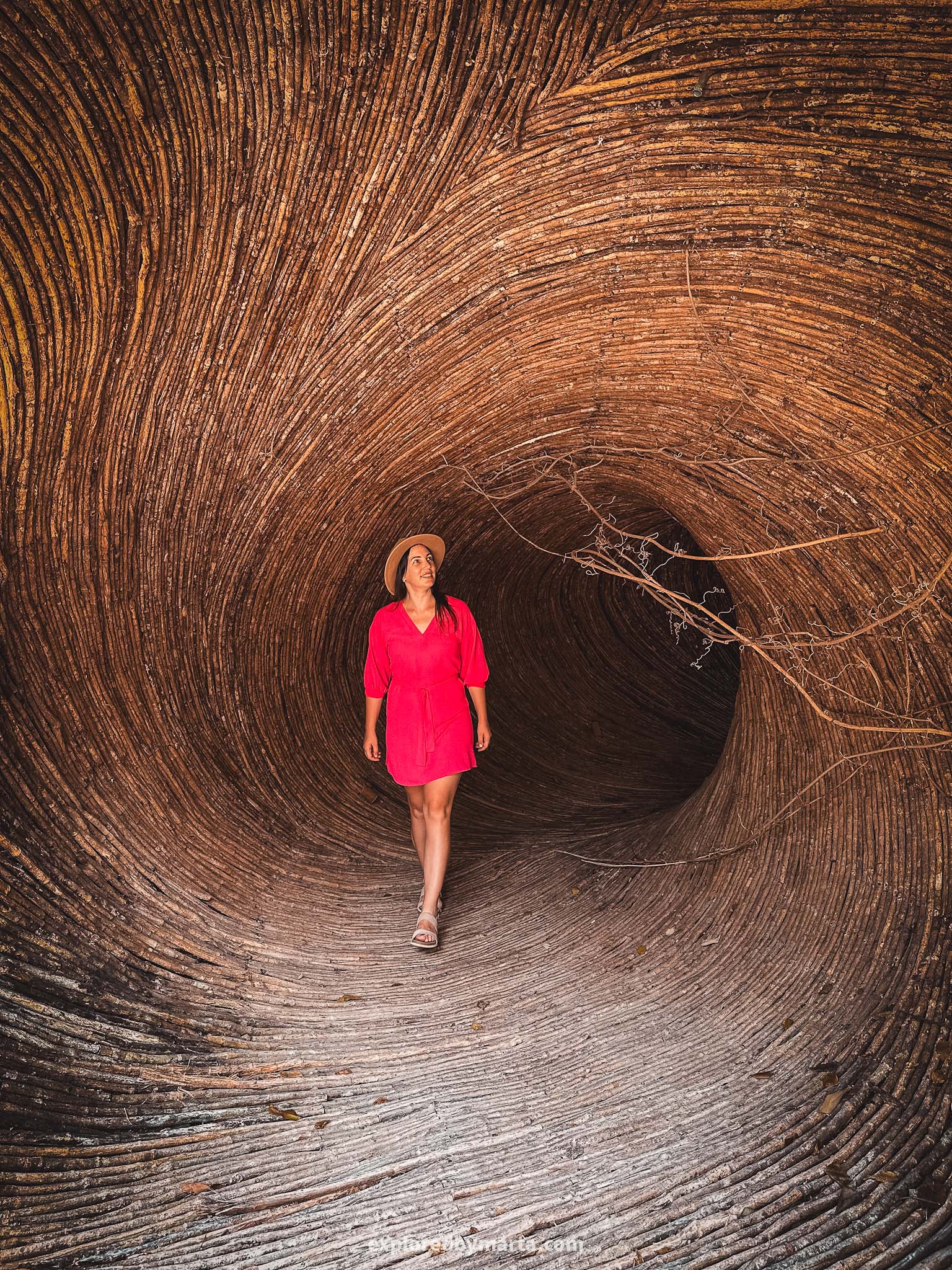
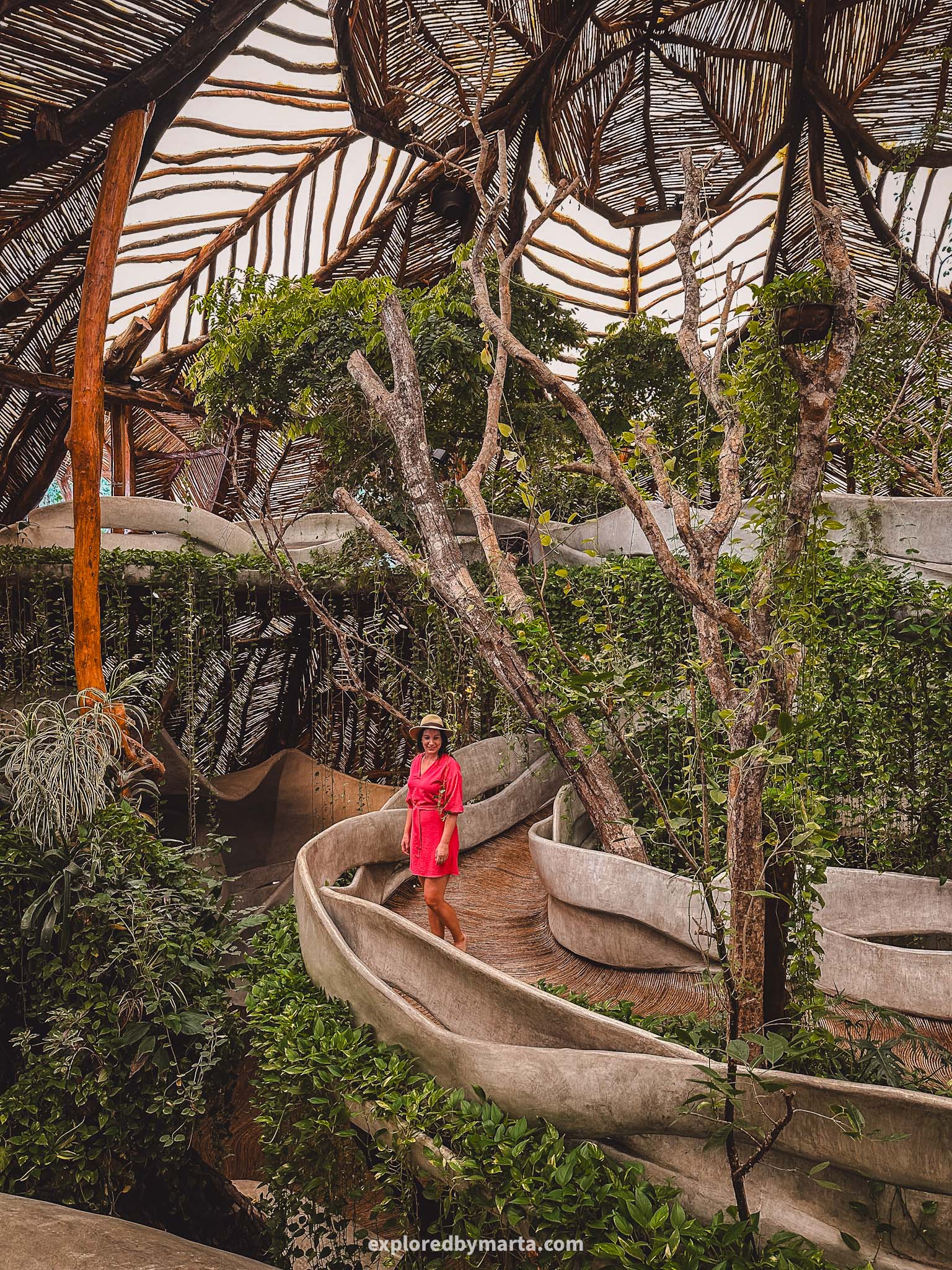
Every room and space features something unique and creative. Once you are done exploring you get your shoes back and can walk outside to explore the surroundings. There is a pool, a restaurant, and more hidden nooks to explore.
Entrance costs 400 pesos per person. If you think you can appreciate such unique beauty, it is well worth a visit. I have traveled to many places and countries but this was something truly magical. I felt like I was on a different planet.
Location: AZULIK City of Arts – SFER IK Uh May
14. Holbox – the quintessential tropical island

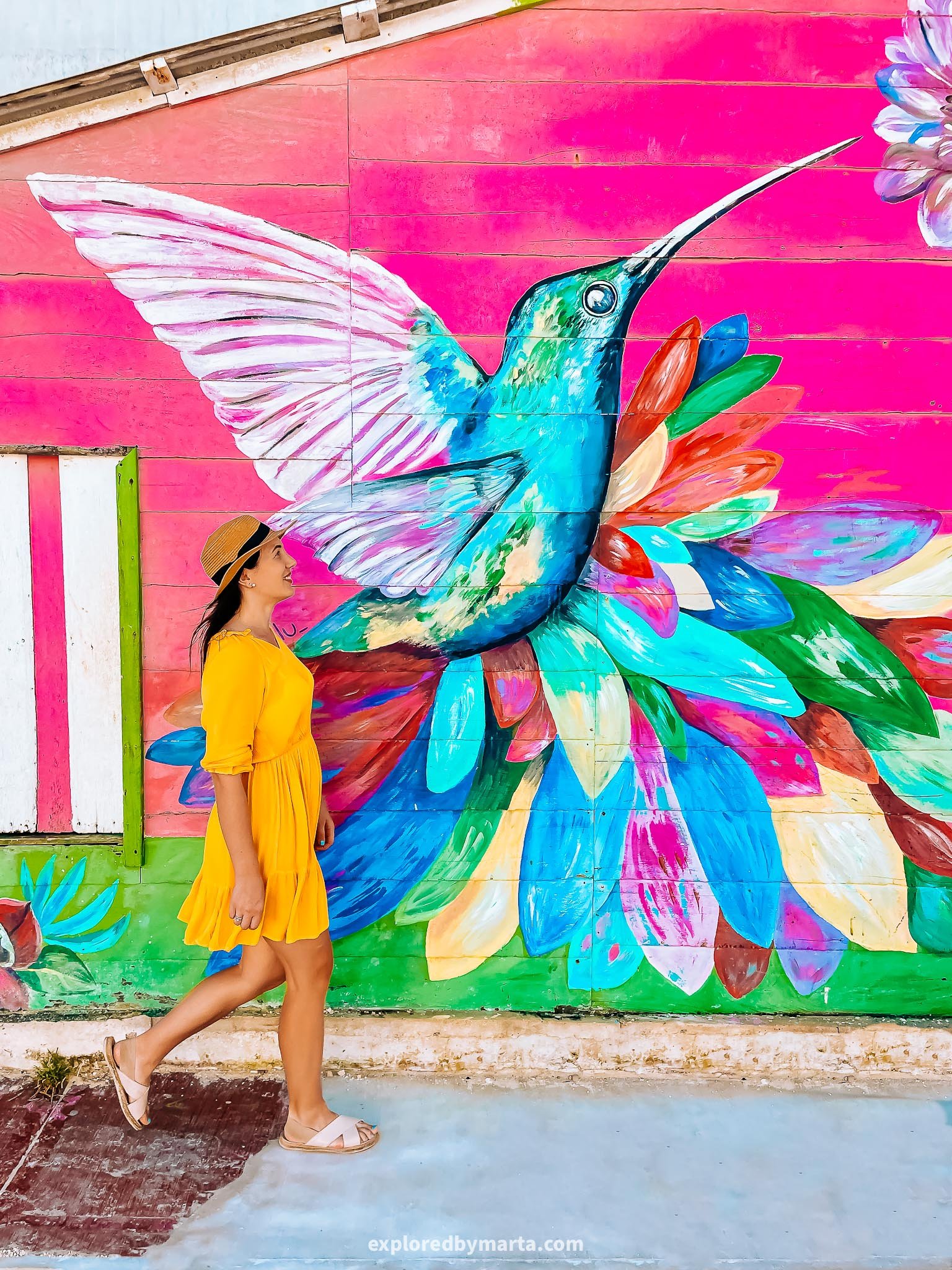
Holbox is the quintessential tropical island with turquoise water and fine white sand where you wander around barefoot and drink coconuts under palm trees! It is the place to be to enjoy that authentic Mexican fishing village life!
We have visited Holbox multiple times because we like it so much! To get there you need to get to the coastal village of Chiquilá and then take a ferry to the island of Holbox. There are two ferry companies departing every 30 to 60 minutes.
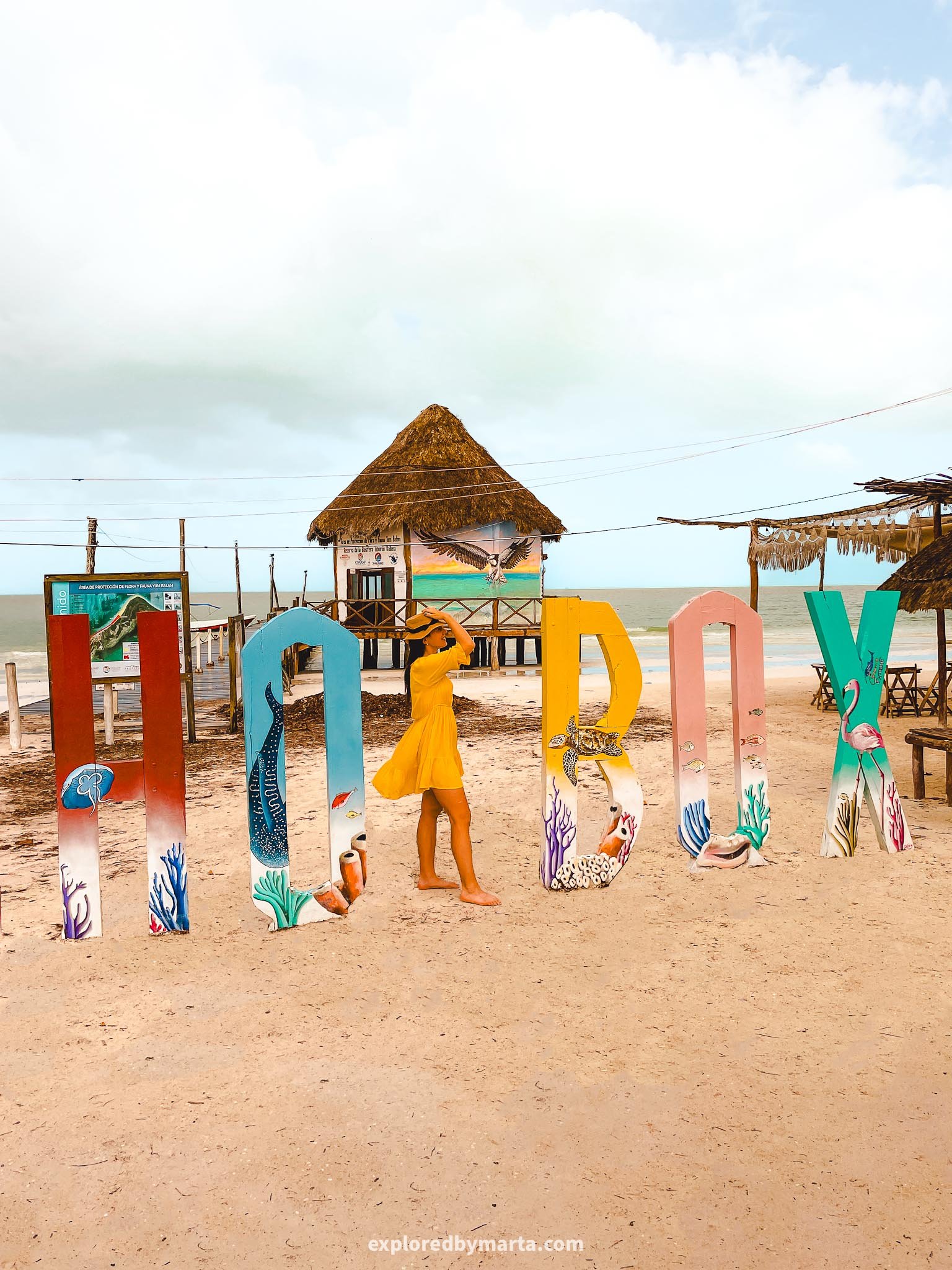
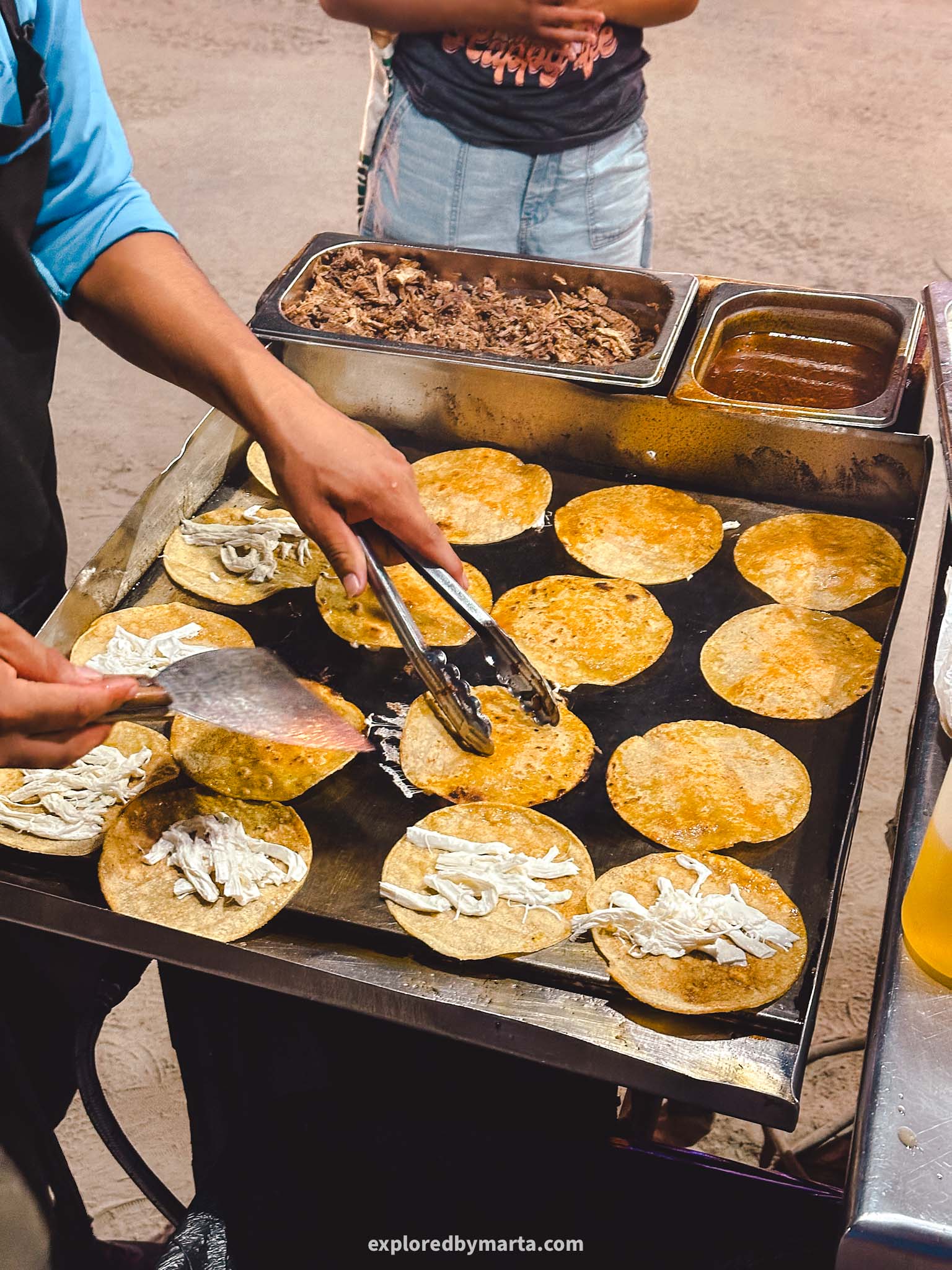
Although we traveled there by our rental car and left it in one of many long-term parking lots in Chiquilá while we stayed on the island, you can very easily get there by one of many minibus taxis or public buses.
Holbox is a unique island with unpaved streets, people walking around barefoot, full of golf cart taxis buzzing around, and no cars allowed for tourists. Occasional power outages are a thing here and street-wide water puddles after storms, too.
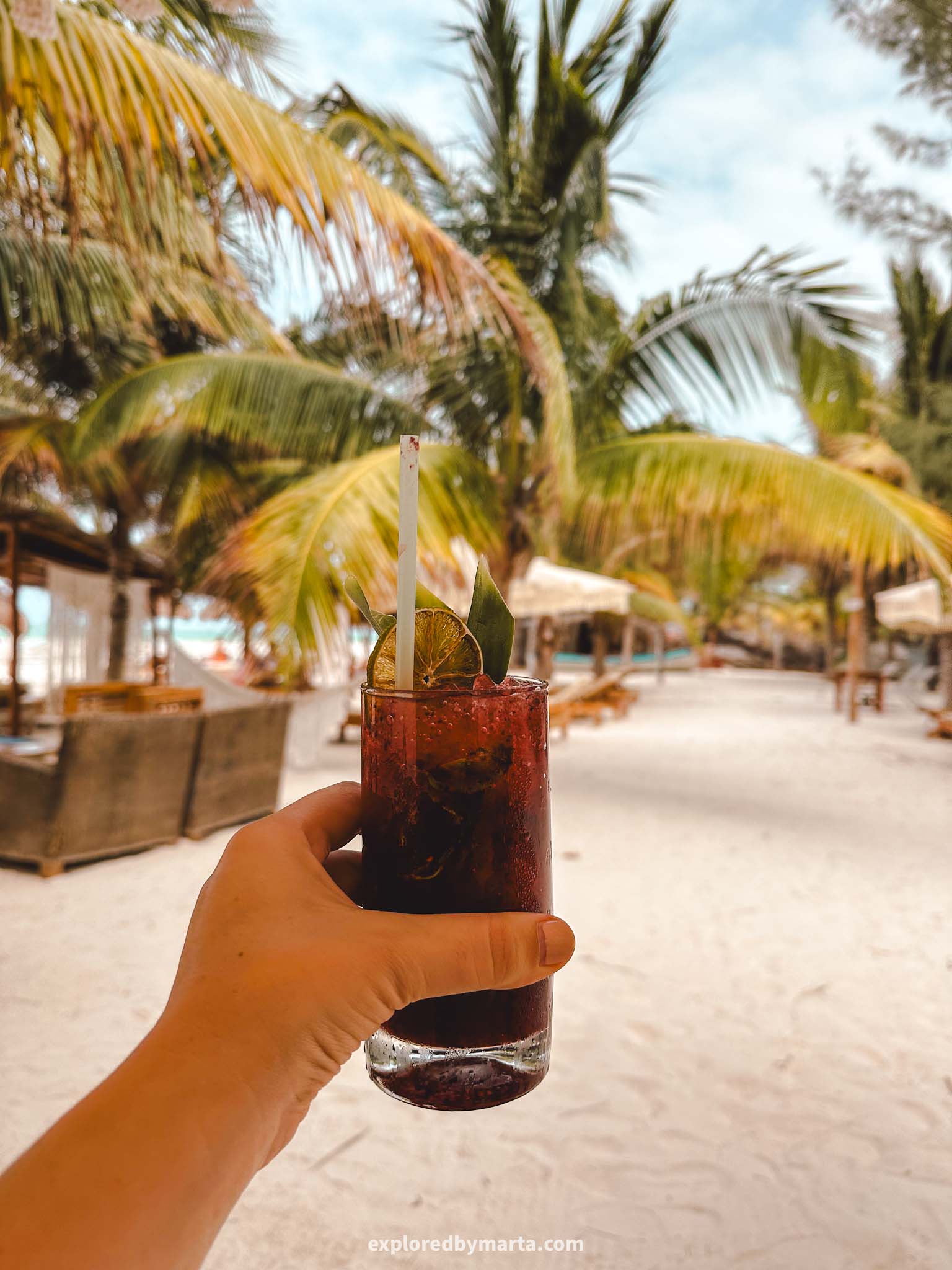

On the island, explore the hustle-bustle of Holbox Central Park, and don’t forget to go there in the evening to try some Mexican street foods prepared in one of many street food stalls!
Then enjoy the gorgeous Playa Holbox beach with fine white sand and shallow turquoise waters. For beach clubs, I recommend Restaurante La Playa De Ñaña restaurant and beach club.


If you stay there the night, consider joining everyone on a sandbank morning walk to Punta Mosquito – a popular activity on the island. Read more about other bucket list things to do in Holbox.
Another unique experience to do in Holbox is a bioluminescence tour in the evening after dark. It was one of my highlights from Holbox. One of the most-try foods in Holbox is the local legend – lobster pizza, a famous dish on the island.
I also recommend checking out the street of street art in Holbox and watching the sun go by in the Caribbean Sea at Playa Punta Cocos. It was pretty mesmerizing but mosquitoes are a thing here so bring a repellant with you!
Location: Holbox
15. Cenote Xcanahaltun and Cenote Palomitas
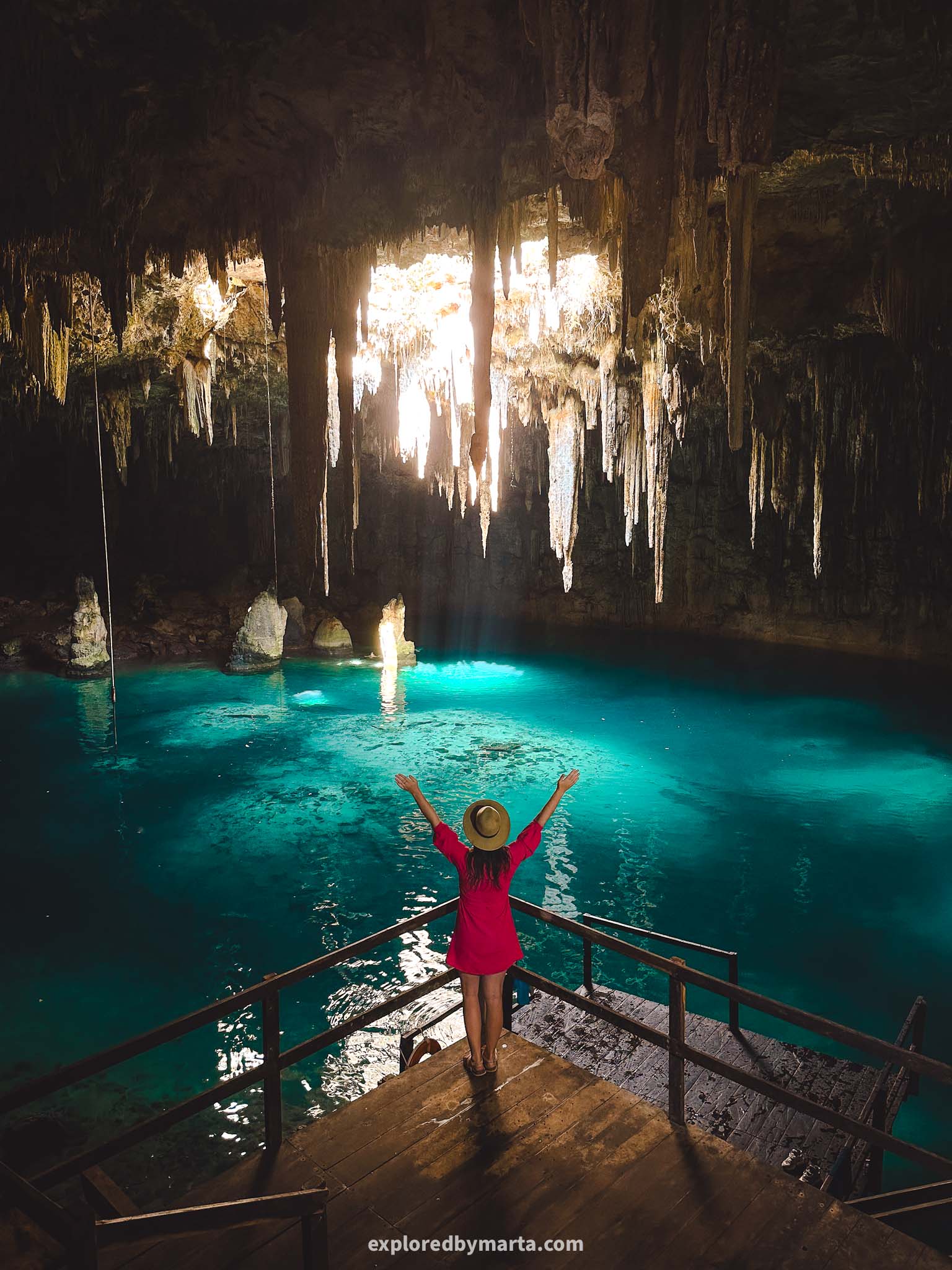
During our three-month stay in the Yucatan Peninsula, we managed to visit around 30 cenotes all around the area, and there were only a few that stood out to me the most. Two of those special ones were Cenote Xcanahaltun and Cenote Palomitas.
Lucky for you both of these cenotes are located near Valladolid, and, even better, just a stone’s throw from one another – a 10-minute drive by car or by motorbike. So here’s my idea – go on an adventurous day trip to both of them! You won’t regret it!
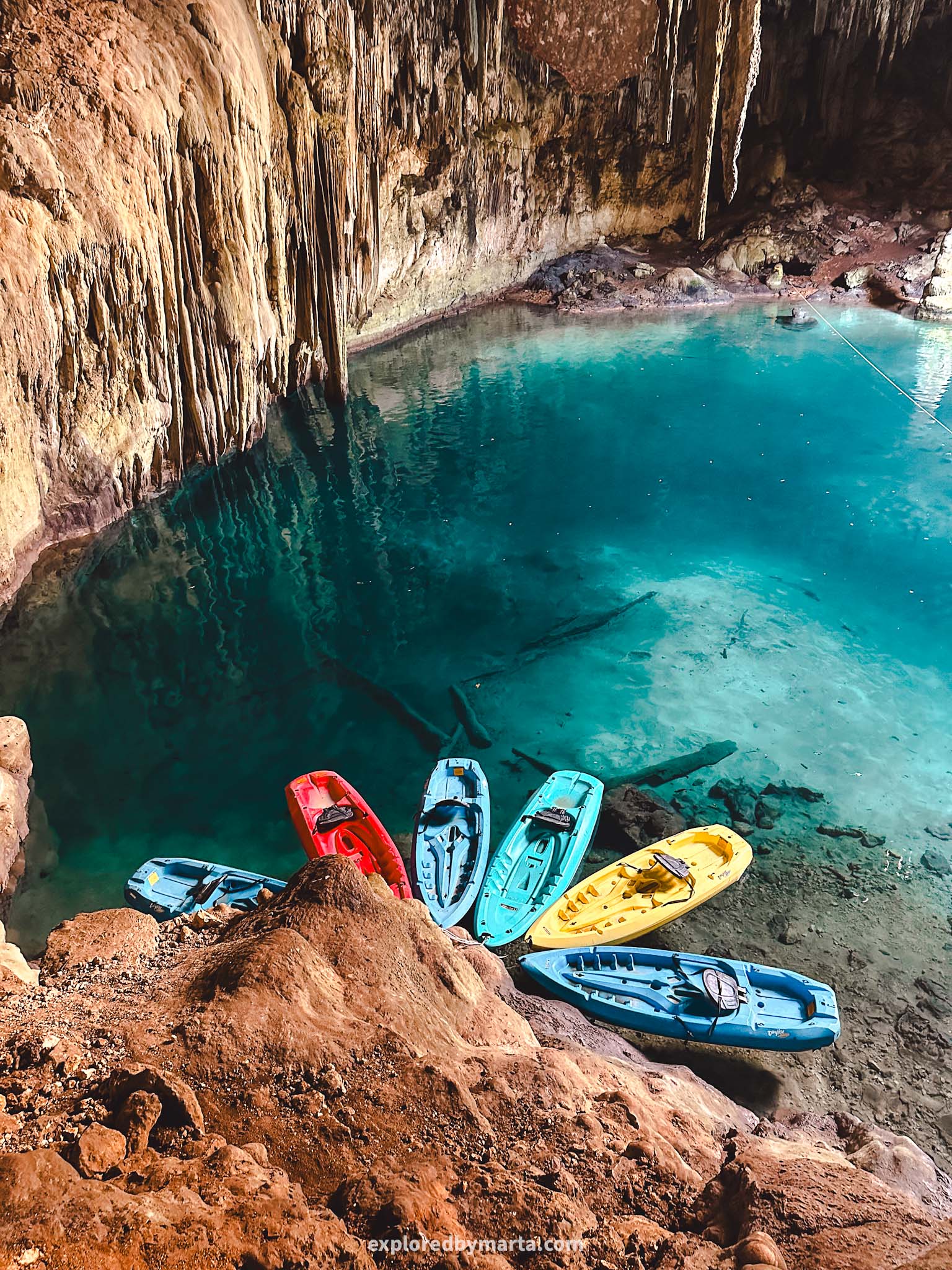
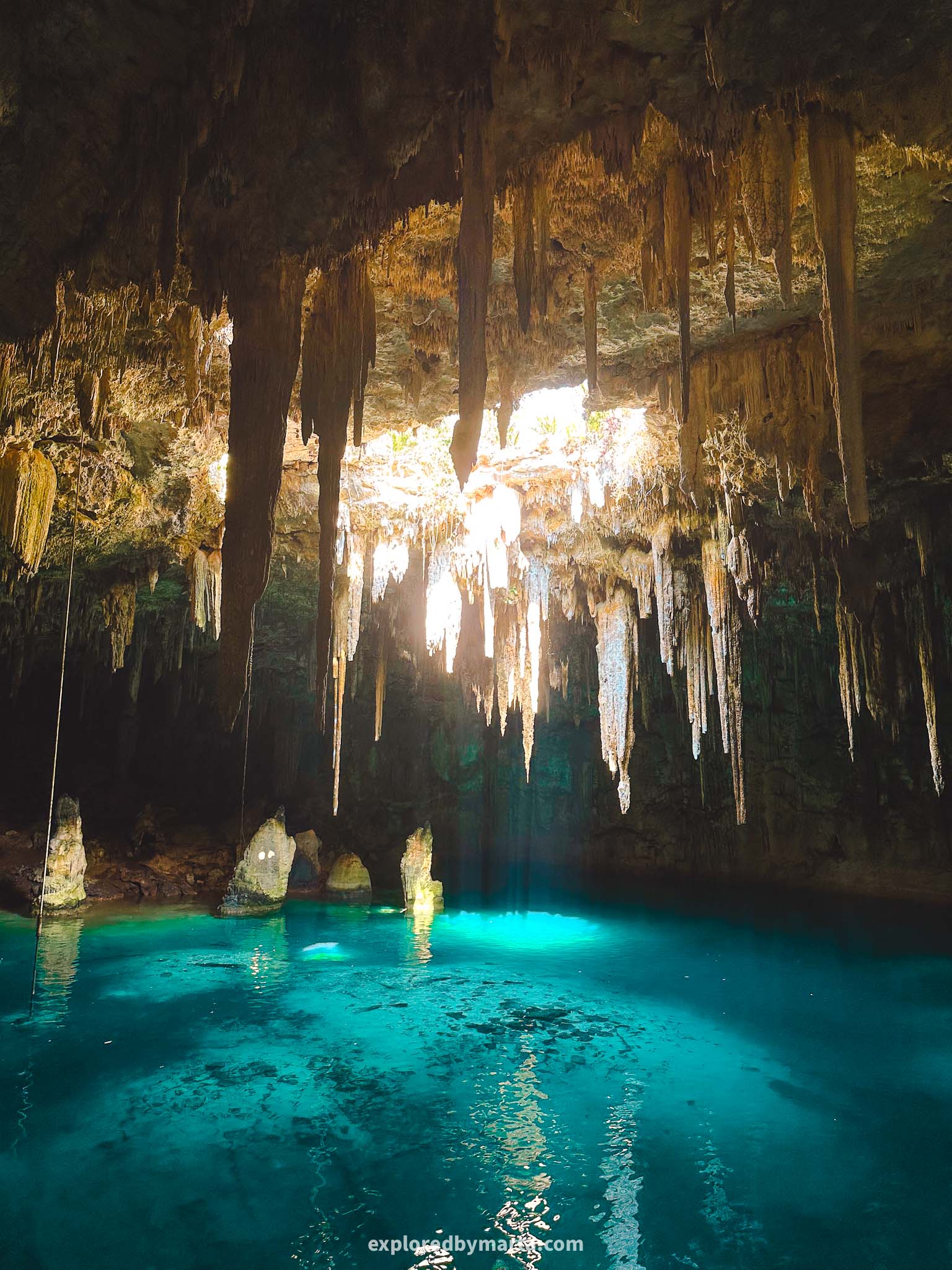
I didn’t expect much from Cenote Xcanahaltun as I had already visited many stunning cenotes but as soon as I entered the majestic cave I fell in love and this place immediately became one of my favorite places in Yucatán!
The glorious cathedral-sized cenote is actually like a large underground lake with a small hole in the ceiling that lets natural light inside the cavern. The ceiling is adorned with icicle-type stalactites and looks absolutely spectacular.
You can enter the crystal clear water from a wooden platform located on one side of the ‘lake’. The entrance to the cenote was 230 pesos and for an extra 100 pesos we were offered to rent a kayak. I will never forget this incredible place!
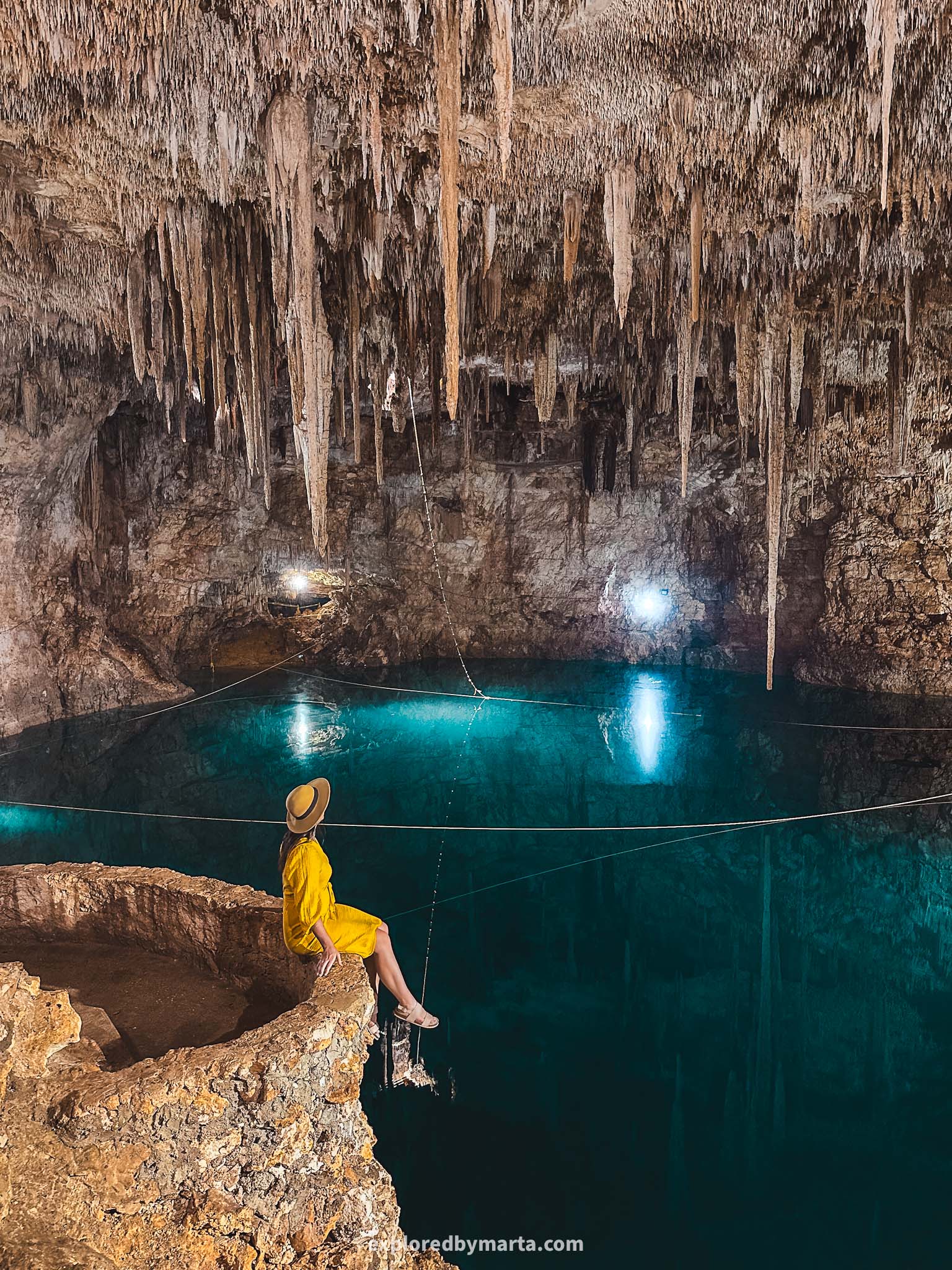
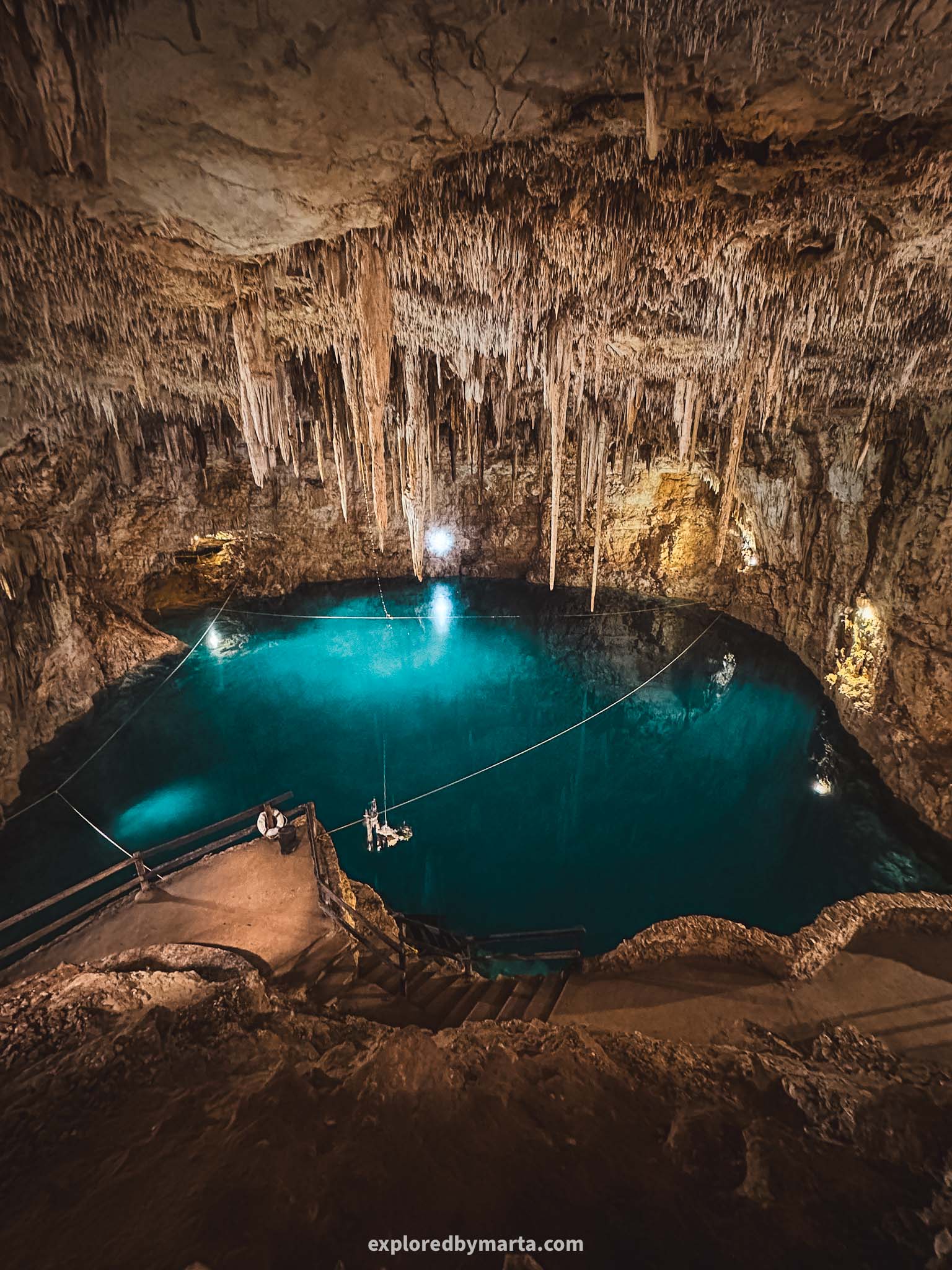
Just a couple of kilometers to the West you will find Cenote Palomitas. It is easily the size of an impressive underground swimming pool! I was completely blown away by the majestic stalactites and the gigantic size of the cenote! Definitely worth visiting!
Probably the coolest part about it was the water – it looked super deep but incredibly seethrough and crystal clear. It was all so calm and magical – like the jungle revealing its secret and not wanting others to hear about it!
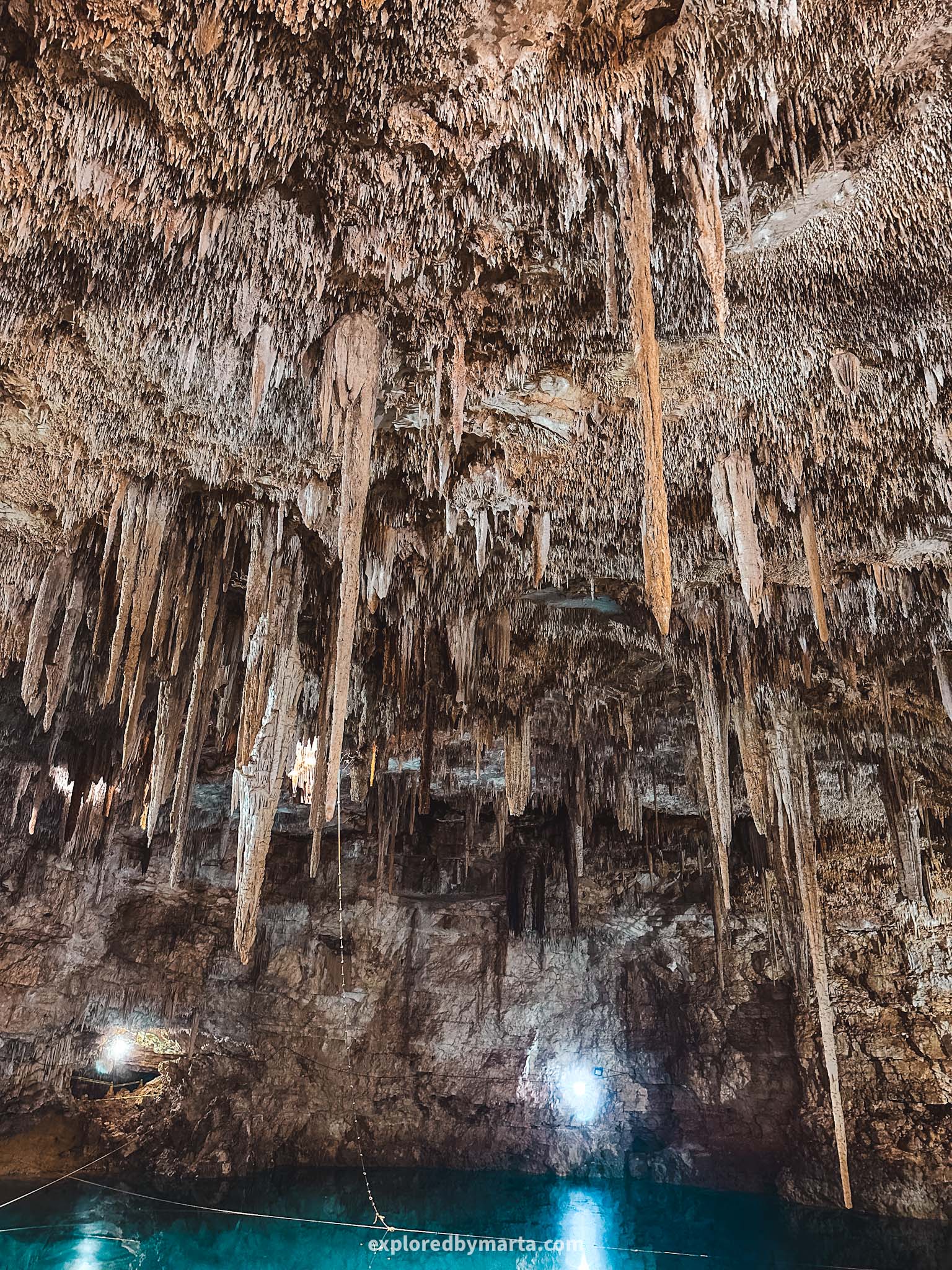

Entrance to the cenote costs 200 pesos per person. Getting there is a bit of an adventure as it is super remote but we had no problems at all. It is best to have a rental car or even a rental motorbike will do if you travel from Valladolid.
These two cenotes are amongst the best cenotes in the Yucatan Peninsula. If you want to escape tour buses, city buzz, and crowds, then come straight here! Arrive first thing in the morning to be the only one in the cave just like we did! Unforgettable!
Location: Cenote Xcanahaltun – Cenote Palomitas
Happy exploring!
We stayed in the colorful Valladolid for three weeks so that we could explore the city as well as all the bucket list destinations around Valladolid, including the iconic Mayan ruins Chichén Itzá and Ek Balam as well as many cenotes and other landmarks.
Besides our stay in Valladolid, we also spent a couple of months traveling around the Yucatán Peninsula, including the states of Yucatán and Quintana Roo, and exploring everything this beautiful peninsula had to offer.
From white-sand beaches to dark underground cenotes, and ancient pyramids – there’s just so much to see! I hope you enjoy your time there as much as we did and I hope you get some travel inspiration from this blog post for your travels! Happy exploring!
PIN FOR LATER!
